Posted by Powee Celdran
DISCLAIMER: Although this is mostly a work of fiction, it is largely based on true events and characters. It seeks to alter the course of actual events that transpired in the 7th century AD. This story will begin with events that have happened in real history but will become fictional as it progresses.
Previous Story: Byzantine Alternate History Chapter III- 6th Century
“I call on you to be advisors and judges for the common welfare of our subjects.” -Emperor Constans II, 641AD

Welcome to the 4th chapter of the Byzantine Alternate History series by the Byzantium Blogger! Last time, in chapter III, I discussed the reign of the Byzantine Empire’s most influential and most remembered emperor Justinian I the Great and his reign in the 6th century when the Byzantine Empire (Eastern Roman Empire) at its golden age was also at its greatest territorial extent. However, being too massive ruling the entire Mediterranean again as a “Roman lake”, it was far too stretched and left far too exposed for enemies to attack on all sides, most notably their traditional enemy in the east, the Sassanid Persian Empire. In the previous story however, I went with the what if scenario of Justinian I saving his empire and preserving its stability for many more centuries to come by sending the devastating plague that hit his empire in 542 east over to the Sassanids resulting in their total destruction, and at the same time the what if of Justinian himself personally going to his own military campaign in Italy to restore it to imperial rule and training his own nephew and successor Justin II to be a strong ruler just like him. However, since the stories in this alternate history series are not continuous with each other, this story will go with the course of events in real history meaning that after Justinian died in 565, the plague was still present in the Byzantine Empire, the economy ruined from all the wars and the plague, the Sassanid Empire in the east still alive and strong, and Justinian’s successor Justin II coming to the throne as a not so competent emperor. The main part of this story where the course of history will change happens a full century after Justinian’s reign, therefore unfamiliar territory for me as I still have much to discover about this era of Byzantium, and here the Byzantine Empire ruled by Emperor Constans II would literally be a shell of its former self, compared to the glorious state it was in under Justinian I. Here in the mid-7th century, Byzantium being devastated from total war, first against the Sassanids and afterwards against a new enemy being the Arabs, it had lost more than 50% of the lands it gained under Justinian and now has to fight on the defensive against the rapidly expanding Arab Caliphate, in which the Byzantines for the longest time never knew would pose such a threat to their existence. Now Justinian’s legacy in the cathedral of the Hagia Sophia which he had constructed in the imperial capital Constantinople and his code of laws known as the Corpus Juris Civilis which he commissioned may have lived long beyond his time, but his legacy in expanding the empire in terms of land did not last long and in the latter half of the 6th century and early 7th century, all his hard work in restoring the old Roman Empire through conquests had begun to fall apart. For instance, after Justinian’s death, Italy which had just recently been put under Byzantine rule quickly began falling to a new Germanic enemy invading from the north which were the Lombards, Byzantine Southern Spain slowly began falling back to the Visigoth Kingdom in the north, the Avars and Slavs began frequently raiding the Byzantine Balkans, and the threat of the Sassanids in the east resuming in full scale wars, and the worst part was that the Byzantine treasury was growing increasingly empty. The hard times for Byzantium then began in 602 when the last emperor of Justinian’s dynasty, Maurice was dethroned and executed by his army which resulted in chaos reigning in Byzantium allowing the Sassanids to now invade imperial territory to the point of coming right outside Constantinople! In 610, Heraclius who would be another strong and decisive emperor came to the throne to save the empire and true enough by 628 he was able to finish off the Sassanid threat once and for all by winning the great war against them which totally fractured the Sassanid Empire, and though the Byzantines here had won, years of war weakened the empire and its economy that one more war could result in Byzantium’s total annihilation. As for the Byzantines, little did they know that the war with the Sassanids was not yet the end, and little did they know that the new deadly threat to them would come from the Arab people from the deserts of the south, who the Byzantines never had thought would ever be much of a threat. Apparently, the disunited Arab tribes of the southern deserts in the early 7th century had all united under the new religion of Islam to form an empire or Caliphate and began expanding north beyond Arabia to conquer both the Byzantine and Sassanid Empires to spread Islam by the sword, and for them the Byzantine capital Constantinople was the ultimate prize. Now, the sudden rise and expansion of the Arab tribes of the desert becoming the Rashidun Caliphate was one of history’s most unexpected moments, but at the same time it was also expected that the Byzantines would lose a great amount of their imperial holdings in the east, most notably all of Egypt and Syria to the Arabs very quickly as the previous war with the Sassanids heavily devastated the Byzantine forces and facing a powerful and swift enemy like the Arabs, the Byzantines could not stand a chance but at least with the Byzantines being able to adapt to these challenging times by coming up with new kinds of military and administrative systems and secret superweapons like Greek Fire, they survived the expansion of the Arabs whereas the Sassanid Empire that had fallen into civil war after the great war with Byzantium stood no chance and was soon enough entirely absorbed into the Arab Caliphate by 651. The main part and climax of this story will then be on the 27-year reign of Constans II (641-668), the grandson of Heraclius who in 641 at only 11 inherits an empire that fell into a war with the Arabs and already at a breaking point. Unlike emperors Justinian I and Heraclius whose reigns and achievements remained well remembered long after their time, Constans II’s does not and remains one of Byzantium’s most underrated emperors despite achieving a lot as emperor and so much happening in his reign as it was under him when the course of Byzantine history had been drastically changing. For instance, it was under Constans II when the Byzantine Empire in an instant lost a large amount of territories most of them being important ones like Egypt and Syria, it was also under Constans II when Byzantium began its shift from Latin to Greek culturally and linguistically, and most importantly it was under Constans II when the new administrative system of Byzantium’s provinces known as the Thematic System was introduced whereas the Byzantines now having to fight constantly on the defensive against the expanding Arabs from the east while at the same time losing large amounts of land had to adapt to the situation, and this meant reducing their provinces in size thus creating smaller military provinces called Themes to increase military presence. Under Constans II, the major shift in the course of Byzantine history took place as it was here where they would now for the next 2 more centuries to come have to fight on the defensive to protect their empire from the ambitious conquests of the Arabs and in these difficult times, Byzantium had to adapt by coming up with all sorts of creative ideas for their survival including the creation of Thematic System- which you will learn more about how it works when reading this- to make their defenses easier, and creating weapons like Greek Fire, a naval superweapon that was to remain a Byzantine state secret, and yes these new solutions the Byzantines came up with in these difficult times did prove effective enough in allowing the Byzantine Empire to live on through these hard times and eventually by the 9th century rise up again to counter-attack the Arabs. As for Constans II on the other hand, others may remember him as the emperor that met a very odd end being killed by a servant using a soap dish when bathing, but in the story of his death that took place in the city of Syracuse of Sicily, Constans II did indeed have some kind of secret intention which was to move the Byzantine Empire’s capital to Sicily seeing Constantinople was far too vulnerable to the Arab attacks and having Syracuse as the new capital was more effective as its location was central in the Mediterranean and could help in further defending the Mediterranean and taking back lands such as Egypt and North Africa that were lost to the expanding Arab Caliphate. Now, I actually think here that Constans II did really intend to move west as he was looking to further defend the Mediterranean from the Arabs while at the same time I also see that he had also cared about the west and Byzantium’s Roman heritage, therefore this makes him and not Justinian the last Roman emperor to have some kind of connection to the west and Rome, considering that the Byzantine emperors despite ruling from the east were still considered Roman emperors. This article will be another long and complex one as it covers the very crucial 7th century and the worlds of the Byzantines, Arab Rashidun and Umayyad Caliphates, Sassanid Persians, and even the Tang Chinese Empire but a lot of it will focus on Emperor Constans II’s reign and his decision to move the imperial capital to Syracuse being the last Byzantine emperor that still cared about Byzantium’s western roots, but the real question here is that if Constans II moved the Byzantine capital to Syracuse, could this really change the course of Byzantine history?
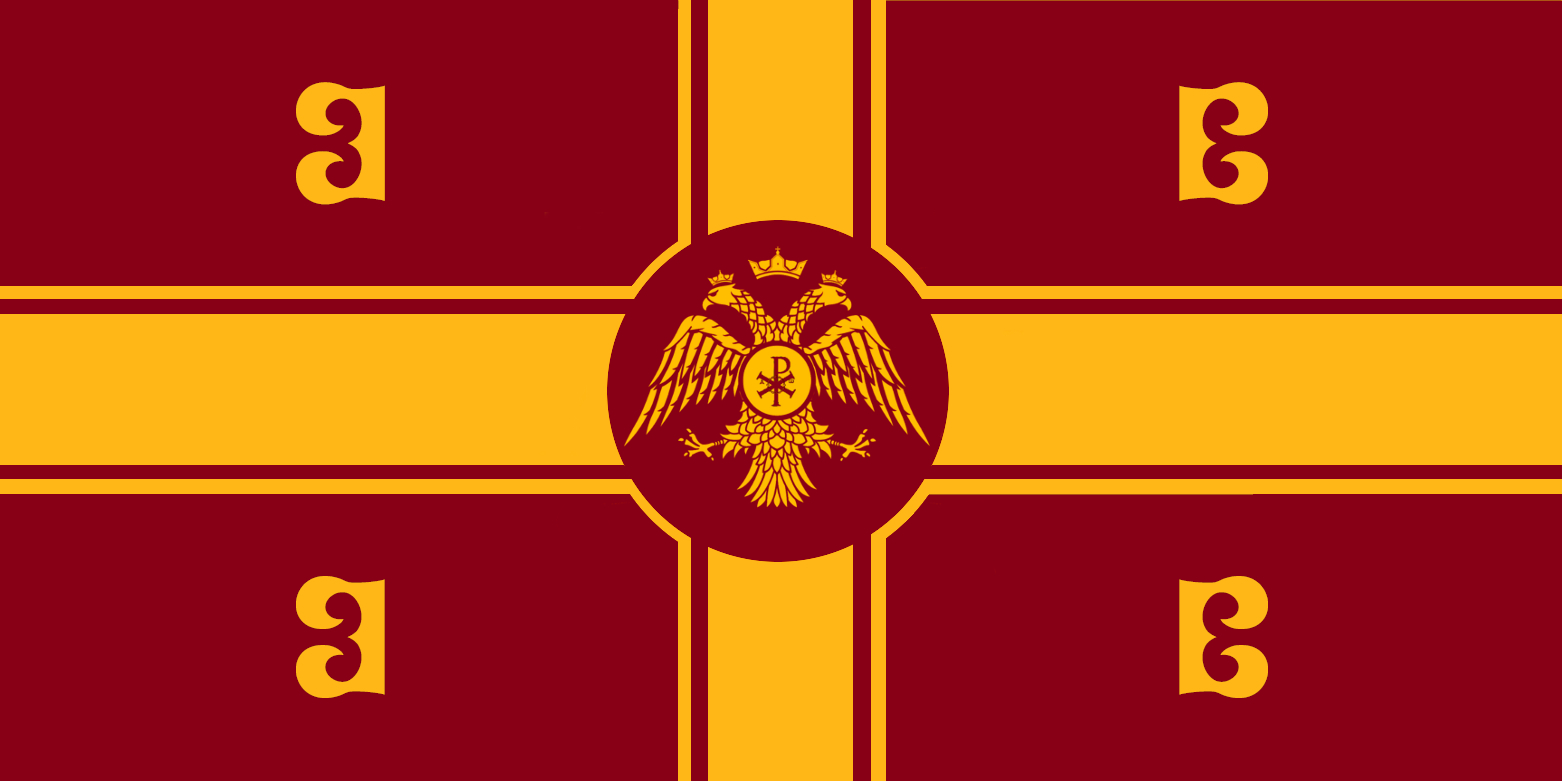
Follow me, the Byzantium Blogger on Social Media:
Instagram: @byzantine_time_traveller
Facebook: Byzantine Time Traveller
Youtube: No Budget Films
Twitter: @ByzantineTime
Deviantart: Byzantium-blogger55
Art Station: Powee Celdran Porphyrogennetos
Patreon: Byzantine Time Traveller
Note: Since this story is set in the 7th century after the fall of the Western Roman Empire, the Byzantine characters will be now referred to as Byzantines, not Romans.


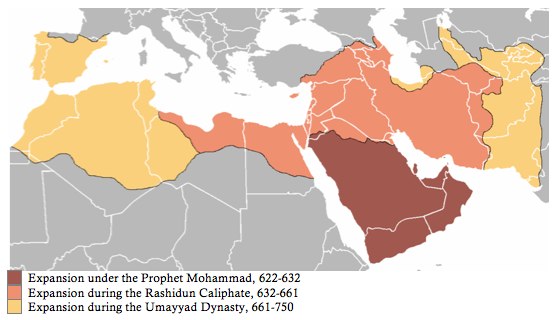
Here, in chapter IV of my Byzantine Alternate History series, I am writing the story alone this time basing it on historical facts from 7th century Byzantine history and coming up with my own plots for the characters of the story. Most of the story will be relying on historical facts with an intense amount of research and info from the History of Byzantium Podcast and Youtube channels Kings and Generals and Thersites the Historian, as well as other history related media online and books. However, when we get to the year 668, the year Constans II was killed in his bath in Syracuse, rather than going with the course of real history wherein Constans II met his end at the baths, this story will take a different turn whereas Constans II survived and would continue to build up the empire’s Mediterranean defense, as well as continue his war against the Arab forces of the Umayyad Caliphate.
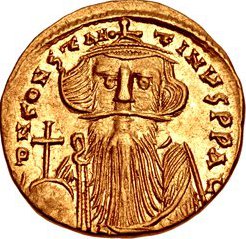
Although before getting to this story’s climax of Constans II’s fate in 668 wherein he avoids it, it is important to give some context to the story by discussing the background of the plot of the rise of the Byzantine-Arab conflict which will take us all the way back to Byzantium in the late 6th century following Justinian I’s death. This story then will have a long background section that will discuss Byzantium after Justinian, the total war against the Sassanids, the emperor Maurice, the take-over and failed reign of the emperor Phocas, the rise and achievements of Emperor Heraclius, the great war against the Sassanid Empire known also as the “Final Byzantine-Sassanid War” and the Sassanids’ defeat, and the sudden rise of the Arabs and expansion of Islam since it would be difficult to understand the Byzantine Empire of Constans II without knowing about how Byzantium changed so much before his time. Once the background of the story and its conflict is explained in the historical context, this article will proceed to the turbulent reign of Constans II from 641 to 668, and then to the climax of the story wherein things will take a totally fictional shift. This story will then proceed and finish off with the reign of Constans II’s son Constantine IV (668-681) with the first Arab Siege of Constantinople in 674 and the invention of the superweapon Greek Fire despite Constans II still alive, except here in this case after 668 the Byzantine Empire would be split in half to be able to fully defend all its borders properly whereas Constans II would rule permanently from the west in Syracuse while his young son Constantine IV would rule from the east in Constantinople. Now Constans II for me is one of Byzantium’s most underrated yet very important emperors as like mentioned earlier, he ruled Byzantium in a very crucial time when the empire had suddenly downsized in land and population as a large percent was lost to the Arabs, therefore it was in his reign where many important reforms and changes were introduced which would last for many centuries to come such as the introduction of the Thematic System and the shift from Latin to Greek in language and culture which would be the new standard for Byzantium from here onwards with the Latin language and Roman identity of the past slowly but significantly disappearing as for instance, the imperial court began using Greek as the language of administration. Other than the creation of Byzantium’s Theme System that would be the standard of the empire’s governance for many centuries to come, Constans II’s reign was one with many significant moments which included sending an embassy to the Tang Empire of China, almost getting killed in a naval battle against the Arabs, arresting the pope, travelling the empire personally, leading battles himself, settling in Syracuse as if it were the empire’s new capital, and getting assassinated in his bath by a soap dish. Now, the 7th century was a very crucial turning point in the history of Byzantium as this was when the empire entered a somewhat dystopian setting which would be its “Dark Ages” where it drastically downsized, therefore losing the imperial power and prestige it had as the all-powerful empire it was from its beginnings in the 4th century to the age of Justinian in the 6th century and also, it was the time when the purpose of war for the Byzantines shifted from one for territory to holy war to defend Christianity, first against the Zoroastrian Sassanid Persians in the first half of the 7th century and against the Muslim Arabs in the 2nd half; and it would not only be the Byzantines fighting for faith but the Arabs too as their purpose for expanding was to spread Islam. This story in the 7th century thus will only be the beginning of the wars the Byzantines would have against Islam which they would fight against till the very end in 1453, while this story too will be the beginning of the Byzantines vs Arabs and Dark Ages phase, which the next 2 chapters of this series will cover. As for creating a what if story for 7th century Byzantium since each century in Byzantium’s history gets one story in this series, I could have done more popular ones such as if the war against the Sassanids from 602 to 628 had not happened, if the Arab expansion never happened, if Emperor Heraclius lost to the Sassanids, or if Heraclius successfully beat the Arabs, but instead I chose to go deeper into the 7th century and deeper into the Byzantine-Arab conflict, therefore into the complex reign of Constans II as in this alternate history series, I usually like to go for lesser known emperors and events, and this article will do just that. Of course, the more popular events of the 7th century like the reign of Heraclius and his wars against the Sassanids and later with the Arabs will play a large role in this story giving a background to Constans II and the situation of the empire he ruled, and considering Constans II is the grandson of the more famous Byzantine emperor Heraclius, it is impossible to not discuss the heroic yet tragic reign of Heraclius. Now for the main character of the story, I chose Constans II (real name: Heraclius Constantine) who I would consider a very complex person as I always find stories that center on a flawed, unlikeable, and mean-spirited protagonists very interesting and Emperor Constans II is no exception for this kind of character. Unlike the other protagonists I chose for the previous 3 stories like Valentinian I, Anthemius, and Justinian who I portrayed as rather likeable characters, Constans II here as the lead character is the opposite, and just as he is recorded in history to have ruled, Constans II here will be portrayed as a young mean-spirited emperor ruling with an iron fist, purging all those who opposed him including family members and even the pope, and falling out with his family which is why I would also say he left for 5 years to settle in Sicily, never to return again. As an emperor, Constans II too would be his grandfather Heraclius’ polar opposite as Heraclius is usually portrayed in a heroic fashion being Byzantium’s savior from incompetence and tyranny and from the ultimate destruction of the Sassanids yet at the same time as a tragic hero as even though he achieved so much in finally putting an end to the constant war against the Sassanids, he did live long enough to die a broken man unable to stop the new Arab threat while his grandson Constans II is usually and here will be seen as an unlikeable autocratic ruler in which others may know him as “Constans the Bearded” or the “Bearded Autocrat”- as he is depicted in his coin to have a large beard- and although tyrannical as an emperor and not very effective in religious and foreign policy, he was not incompetent and was actually a visionary with some good intentions for the survival of his empire which is why he introduced the Theme System- though historical sources aren’t that clear about if he exactly created them- and thought of relocating the imperial capital seeing he could use that as a base to save the threatened western provinces. Constans II too being part of the Heraclian Dynasty founded by his grandfather Heraclius would also be the one to set the standard of his dynasty’s ruling style as strong autocratic rulers in which this kind of ruling style Constans II had would be seen with his son Constantine IV as you will also see here, and with Constantine IV’s son Justinian II (r. 685-695) who would be this dynasty’s last emperor, and it was also here at this point in time with Byzantium under the Heraclian emperors wherein you would no longer see powerful women running the empire like in the 5th and 6th centuries, instead you will notice that the 7th century was a time for strong young men running the empire such as Constans II, Constantine IV, and Justinian II with women no longer having a major part in the political scene. This story too will not be the kind of black and white story wherein the Byzantines are all good and their enemies like the Arabs all bad, instead it will be a very gray one as its lead character Constans II despite being the hero of the story will be somewhat villainous in nature as a result of the difficult situation the empire was facing as he grew up, but with actually good intentions therefore being an anti-villain with a complete character arc, while the Arabs on the other hand like Constans II’s arch-enemy Caliph Muawiyah I would not be seen as pure villains even if this story is told through the Byzantine perspective, as true enough the Arab Caliphate’s intention was just to expand and conquer in the name of Islam without any bad intentions yet they had actually been tolerant as rulers at times, thus this story too will do justice to the Arabs who are usually seen as the villains in other stories. At the same time, this story too will give you a full picture of the world of the 7th century by not only telling the story of Constans II but of the collapse of Byzantium’s long-time mortal enemy, the Sassanid Empire wherein the Arabs would replace them as the new traditional enemy, the relations of Byzantium with the distant Tang Dynasty Empire of China at this time, the continuation of the endless headache of religious debates and schisms, the introduction of Byzantium’s Theme System which would prove effective in the empire’s survival, the Byzantine Exarchates, the development of Greek Fire, and the ultimate change in the course of Byzantine history from fighting to conquer lands to fighting on the defensive. Of course, in order to be more interesting for a wider range of viewers, this story would not focus too heavily on the endless religious debates of the time and the political situation of the empire, but rather more on the happenings of the time including the wars and power struggles in which Byzantium would also be forever remembered for. Although at the same time, this story will be one that is more centered on the empire and its political and geographic situation rather than on characters, but the characters and their stories like of Constans II will play a major part too.


Related Articles from The Byzantium Blogger:
Byzantine Alternate History Chapter III- The Empire Strikes Back
Byzantine History for Everyday People- Reactions to Quotes from Byzantium
Around the World in the Byzantine Era- Part I (330-1000)
12 Turning Points in Byzantine History
The Art of War in the Byzantine World
A Guide to the Themes of the Byzantine Empire
Lesser Known and Would be Roman and Byzantine Emperors (27BC-695AD)
Related Videos to this era:
Constans II the Bearded (Thersites the Historian)
Early Muslim Expansion- Yarmouk and Al-Qadisiyah (Kings and Generals)
Constans II: Struggle for Survival (Eastern Roman History)
The Byzantine Empire, 565-602 (Dovahhatty)
The Great-Byzantine Sassanid War, 602-630 (Dovahhatty)
The Leading Characters:
Constans II- Byzantine emperor
Constantine IV- Son and heir of Constans II
Theodore I Calliopas- Byzantine Exarch of Ravenna
Mizizios- Byzantine general, Komes of the Opsikion Theme
Muawiyah I- 1st Caliph of the Umayyad Caliphate
Heraclius- Son of Constans II and co-emperor
Tiberius- Son of Constans II and co-emperor
Fausta- Byzantine empress, wife of Constans II, mother of Constantine IV, Heraclius, and Tiberius
Theodosius- Twin brother of Constans II
Kallinikos of Heliopolis- Byzantine engineer, inventor of Greek Fire
Paul II- Patriarch of Constantinople
Pope Martin I- Patriarch of Rome
Saborios- Byzantine general, Strategos of the Armeniac Theme
Yazid- Arab general, son of Muawiyah I
Peroz- Last heir of the Sassanid Empire in exile, Persian general in China
*Alexios- Byzantine senator and diplomat sent to China (real character with not much of a story, his story is expanded here)
*Philippikos- Byzantine senator and diplomat sent to China (real character with not much of a story, his story is expanded here)
Gaozong- Tang emperor of China
(Credits to Amelianvs, Skamandros, Gambargin, Ahmed AbuElnaga, Marwan Musa, Sergio-Quijada, and Giuseppe Rava for their art on this era which are featured here.)
Background Guide: Byzantine characters (blue), Latin west (light blue), Arabs (yellow), Sassanids (green), Chinese (red-orange).
The Background- From Justinian I to Heraclius (565-630)

On November 14, 565 died the most influential ruler of the Byzantine Empire, Justinian I the Great who had ruled for a total of 38 years coming to power back in 527 and with him died the golden age. Under Justinian I, the Byzantines came to rule the entire Mediterranean by conquering North Africa from the Vandal Kingdom, Italy from the Ostrogoth Kingdom, and Southern Spain from the Visigoth Kingdom and though the Vandals and Ostrogoths were destroyed under Justinian I, the Visigoth Kingdom still lived on in Spain as only the south was put under Byzantine rule and despite these conquests, the might of Byzantium was weakened. Certainly, Justinian’s imperial conquests of the former Western Roman provinces needed funds and though the dream to reconquer these provinces had been achieved, the treasury ran low due to all the wars fought to reclaim these lands considering the war to retake all of Italy spanned almost 20 years.

The worst part however was the plague that struck the Byzantine Empire so severely in 542 that killed 1/3 of the empire’s population and as a result of all the deaths crippled the economy, but even though all this happened, Justinian I was able to put the entire Mediterranean under Byzantine rule and die at least knowing he was able to fulfil his ultimate dream despite never even taking part in his own conquests, but instead staying his entire reign in Constantinople. Though Justinian I died with his ultimate dream of reconquest achieved, little did he know that shortly after his death, all his hard work would fall apart and a lot of this would be due to the leadership of his nephew and successor Justin II (r. 565-578) as Justinian in fact never properly trained a successor and never had children of his own with his wife Theodora and following Theodora’s death in 548, the devastated Justinian vowed to never marry again, and little did he know that this would be a terrible decision. Justin II inherited from his uncle a massive empire that controlled the entire Mediterranean but no matter how large it was in territory, he lacked the vision and strong administrative skills his uncle had, and the Byzantine Empire Justinian I left behind to Justin II had an economy ruined by the plague and wars, and having an empty treasury while facing enemies on all borders particularly the Avars across the Danube border in the Balkans allying with the Slavic tribes there making attempts to cross the river and settle in Byzantine lands.

The Avars now had been making raids into the Danube borders of Byzantium ever since Justinian I’s reign but part of Justinian’s policy was to pay off the Avars and their allies, the Slavs (Sclaveni in Latin, Sklabenoi in Greek) to stay where they are and not attack but when becoming emperor, Justin II seeing the treasury was too empty to continue paying the Avars annual tribute decided to stop paying tribute, therefore making them raid with full force into the Byzantine Balkans with their Slav allies to find land to settle down and farm; the Avars here fought as cavalry and the Slavs as infantry. As for Byzantine Italy which had just been entirely conquered from the Ostrogoth Kingdom, the wars and plague left it as a depopulated wasteland and due to pressure from the Avar hordes in Central Europe, the Germanic tribe of the Lombards led by their king Alboin migrated south to look for land as prior to this, some Lombards have already served as mercenaries for the Byzantines in their previous wars to conquer Italy from the Ostrogoths.

When hearing about how the war turned Byzantine Italy into a depopulated wasteland, Alboin saw this as an opportunity to settle in Italy thus he led a large number of men invading Byzantine Italy in 568 meeting very little resistance as not that many troops were left to defend Italy as a result of the deaths from the previous war against the Ostrogoths and in such a short amount of time, the Lombards were able to take over half of Italy leaving only the major cities of Ravenna, Rome, and Naples as well as the south to the Byzantines. In the eastern border of the Byzantine Empire on the other hand, ever since 562 Justinian I agreed to a truce with their mortal enemy, the Sassanid Persian Empire ruled by Shah Khosrow I, King of Kings though the amount of money to be paid off to the Sassanids as tribute was soon to be impossible with the Byzantine state now critically running out of funds, and again like what Justin II decided to do with the Avars, in 572 he decided to stop the annual tribute to the Sassanids, therefore resuming war and this time to an even more severe level wherein the Sassanids had the upper hand making them able to seize some of Byzantine territory in Syria, including the strategic fortress of Dara at the border.
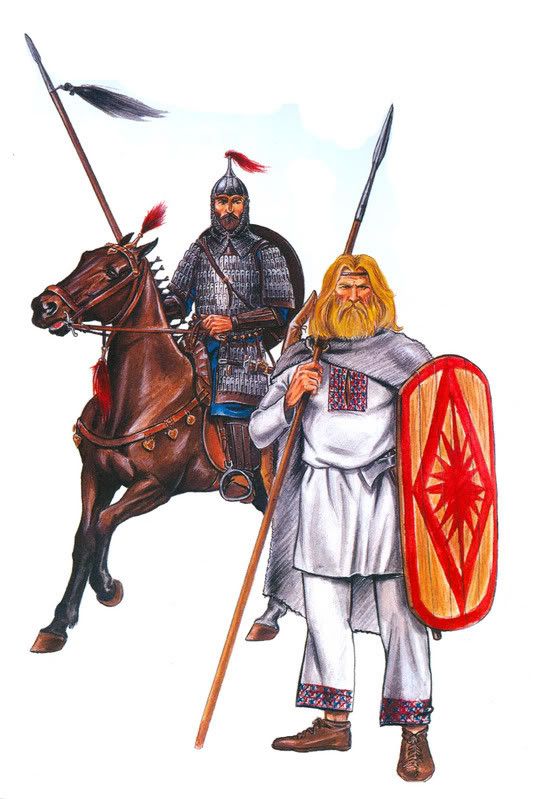
The resumption of the war against the Sassanids and the defeat of the Byzantine forces to them as well as the pressure of running such a massive yet fractured empire in 573 made Justin II break down and lose his sanity, memory, and confidence that he so believed had that soon enough he became unfit to rule. The historian of that time John of Ephesus mentions that Justin II cried out loud animal sounds, hid under his bed, and tried to jump off the window that his wife the empress Sophia had to install bars on his windows so that he wouldn’t jump off. It was even said that Justin II bit court attendants and bodyguards that the bite marks on them made people believe he was a cannibal; and to be calmed down, Justin II had to be on a mobile throne with the sound of soothing organ music playing day and night. Finally in 574, Justin II was convinced by Sophia to abdicate, leave the palace, and rule in name only and appoint his friend and commander of the palace guard or Comes Excubitorum the Thracian Tiberius to run the empire not as Caesar while Justin II still ruled as Augustus or senior emperor, now Tiberius would be the first Byzantine emperor from here on to primarily speak Greek. Justin II then adopted Tiberius as his son and heir despite them being the same age here (54) as a way to continue the Justinian Dynasty as Justin and Sophia had no sons, and from here on Tiberius would be the one effectively running the empire cleaning up the mess Justin II left behind which included continuing the defense of Italy against the Lombards and campaigning against the Sassanids in the east to push them back, though the campaigns were left to their generals as Tiberius like Justin II and Justinian I before him again ruled as a palace emperor though luckily one day, out of chance Tiberius discovered tons of gold in his new house in Constantinople which was the house of the late Narses, the eunuch general of Justinian I who had died in 573 and apparently Narses had been keeping a large amount of gold for himself and having no children to inherit the wealth, it was passed on to the state. As Caesar, Tiberius made good use of Narses’ hidden wealth spending it generously on public entertainment to make his people happy, buying his way to peace by resuming paying tribute to the Avars and Sassanids, and recruiting tens of thousands of locals from the Balkans and Asia Minor to the army as well using the funds to hire thousands of foreign mercenaries.

In 578, Justin II had died and Tiberius II adding “Constantine” to his name now ruled as the empire’s sole Augustus though Empress Sophia considering marrying him to continue ruling herself as the Augusta or empress but Tiberius already having a wife refused and banished Sophia from the imperial court and now as emperor, Tiberius would at least rule more competently than Justin II but still lacking the abilities, enthusiasm, and vision of Justinian I but still, Tiberius II was popular with the masses as he relaxed taxes and had managed to keep the fractured empire together by keeping the Avars across the Danube away, containing the Lombard threat in Italy by paying off the Franks of Gaul to distract the Lombards by attacking them from the north, and managed to continue making a truce with Khosrow I’s Sassanid Empire. In the Sassanid Empire in 579, the old shah Khosrow I died and was succeeded by his son Hormizd IV who had certainly wanted to continue the war with the Byzantines and with the peace with Sassanids over again, Tiberius here decided to again face off the Sassanids at war and luckily, he had appointed a competent general to lead the campaign against the Sassanids which was the Cappadocian Greek Maurice– formerly Tiberius’ secretary and the palace guard commander since 574 succeeding Tiberius to this position- who in 580 successfully marched the army deep into Sassanid territory as far as Iraq pushing back the Sassanid army.
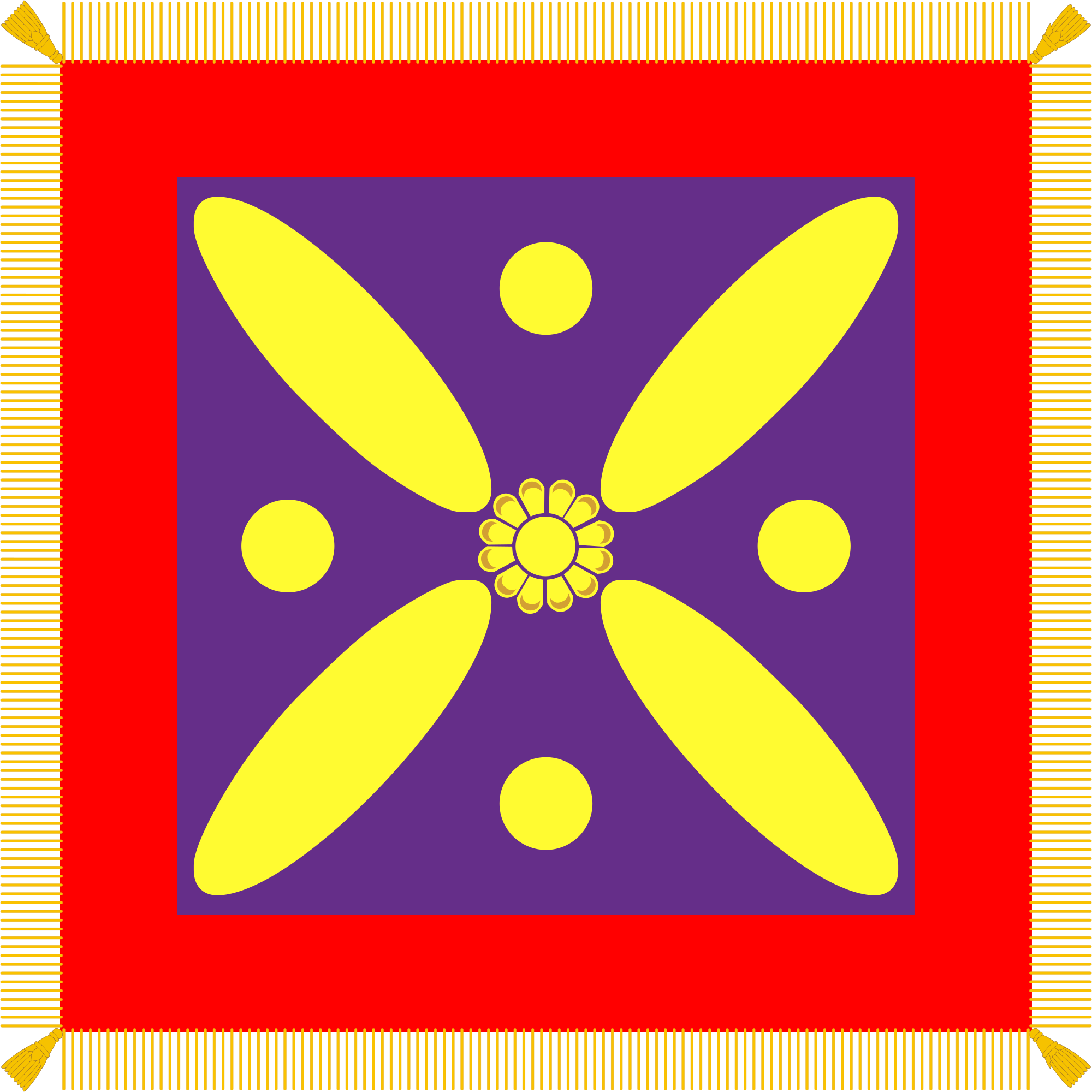
However, Tiberius II having pulled out troops from the Balkans in order to launch the Sassanid campaign left the Balkans defenseless allowing the Avars and Slavs to continue their raids facing little resistance to the point of taking over the important city of Sirmium (in today’s Serbia) from the Byzantines. By 582, the conflict with the Sassanids was more or less settled allowing Tiberius to continue focusing on the threat of the Avars in the Balkans and not wanting to resume war against them, Tiberius again agreed to pay tribute to them as well as to formally cede the city of Sirmium to the Avars and Slavs but in return the Avars and Slavs destroyed Sirmium when it was given to them. It was also in 582 when Tiberius II Constantine died at 62 most possibly from food poisoning, though it also rumored he was poisoned but when dying he named Maurice his successor saying to Maurice “make your reign my finest epitaph”.




Here in 582 at the age of 43, the general Maurice after marrying Tiberius II’s daughter Constantia came to rule the empire and would prove to be a competent and worthy emperor with a vision, another one of who primarily spoke Greek, and the first Byzantine emperor since Theodosius I (r. 379-395) 2 centuries earlier- with the exception of Zeno (r. 474-491)- to personally lead the armies in battle as many of his predecessors, most notably Justinian I never led the armies in battle, instead only giving orders to generals to do the job, and here Maurice would set a new standard for emperors to lead their troops in battle. The loss of Sirmium to the Avars and Slavs was a heavy blow to the prestige of the empire giving Maurice a reason to continue the war with them which he did, though this ended in total disaster that he had to again continue paying off tribute to them which therefore began bankrupting the empire more and more.

Other than that, as Maurice having a vision to save and rebuild the strong empire Justinian before him planned to have, he looked into the matter in Italy that was under attack by the Lombards, North Africa threatened by the Berber tribes of the Sahara Desert, and Byzantine territory in Southern Spain slowly being taken back by the Visigoths, and here he decided to create two semi-autonomous provinces to further protect the provinces too distant from Constantinople. These two semi-autonomous provinces Maurice had created were known as the Exarchates which were to be ruled by an Exarch or a semi-autonomous governor with almost the same authority as the emperor himself but still answering directly to the emperor, and these Exarchates will play an important role in this story. In 584 the Exarchate of Ravenna was created which was to rule all of the remains of Byzantine Italy as a way to continue in the effort of containing the Lombards as Maurice being too busy dealing with problems in the east and the Balkans at the same time did not have the time and neither could not split himself in half to focus on problems on all sides, therefore he left Italy under the care of an appointed Exarch based in Ravenna, the Byzantine capital of Italy. In 585, it was Byzantine North Africa’ turn to become a Byzantine Exarchate based in Byzantine North Africa’s capital Carthage and here the North African provinces as well as Sardinia and Corsica, and the remains of Byzantine territory in Southern Spain fell under the Exarchate of Africa as again Maurice had no time to focus on the problems there, but at least he still cared to keep these lands that Justinian worked so hard to conquer for the empire. Not to mention, it was also during Maurice’s reign when the fertile lands of Byzantine North Africa outside Carthage (Tunisia and Algeria) due to over-farming and climate change began to dry up turning more and more into a desert, therefore limiting the abundant grain supply for the empire which came from these lands. Meanwhile in the Sassanid Empire, due to the heavy defeat they faced earlier under Maurice’s hands, the shah Hormizd IV was enraged that his general Bahram Chobin lost a number of times to the Byzantines, thus Hormizd IV to remind Bahram of his failures gave him a gift of a woman’s dress as a direct insult. Feeling insulted by his king, Bahram in 590 rebelled against Hormizd IV, and when Sassanid troops loyal to Bahram in the Sassanid capital Ctesiphon killed Hormizd, Bahram then became Shah Bahram VI making Hormizd IV’s son and Khosrow I’s grandson Khosrow II flee into Byzantine territory. Maurice was then given an offer by the young Khosrow II who promised to give him some lands back in exchange for an alliance while the Bahram promised Maurice more land in exchange for an alliance, and torn between the two, Maurice considered allying with Khosrow as he was of the Sassanid imperial family while Bahram was just a usurper. Khosrow II in 591 with with military aid from Maurice returned to Ctesiphon, dethroned and killed Bahram VI, and successfully regained the throne, therefore resuming peace with the Byzantines promising not to attack as Maurice helped him regain the throne.

With the peace once again signed with the Sassanid Empire as well as Byzantine lands in Armenia and Eastern Asia Minor previously conquered by the Sassanids returned to Byzantine control, Maurice now focused on continuing the war with the Avars and Slavs in the Balkans and maintaining diplomatic relations with the neighboring kingdoms of the Caucasus as well as with the Arab tribes of the deserts in the far south, but little did he know that they would one day erupt as a total threat to the Byzantines. At this time, as Maurice continued fighting his wars against the Avars and Slavs in the Balkans and actually leading the army himself, his famous military manual known as the Strategikon was written and though it is debated if Maurice wrote it himself or if it was his brother Peter or some of his generals that wrote it, I would believe that it was actually Maurice himself since he had a lot of military experience and as an emperor was also a skilled and practical general.
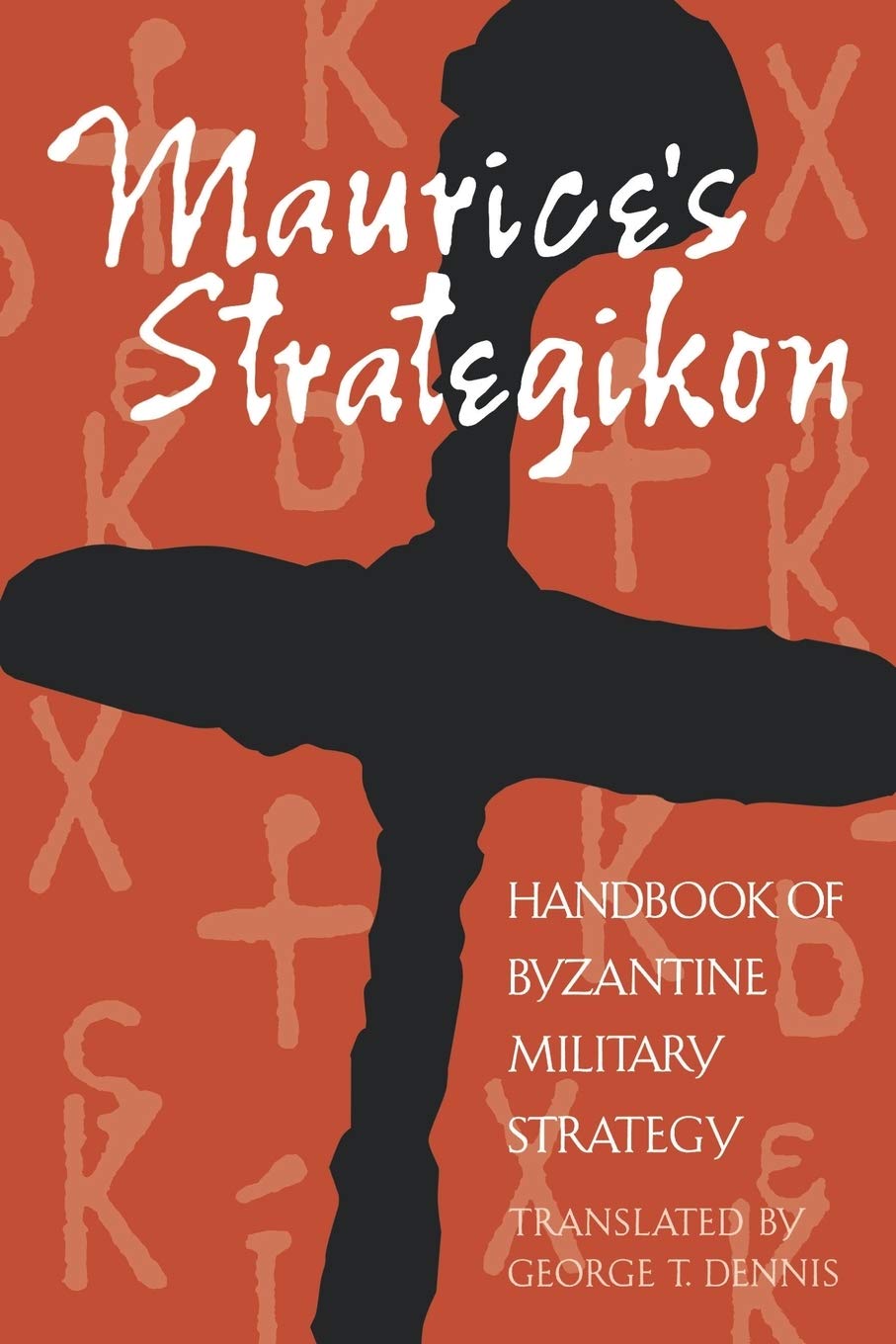
This military manual here is basically a guide on how to fight particular enemies the Byzantines had at this time whether Franks or Lombards, Avars or Slavs, Sassanids or other eastern enemies, and Nomadic horsemen from the distant steppes of Central Asia and this book discusses not only how to beat the enemy by learning their fighting styles but from learning about their culture and behavior as well, and a lot of the information for this book came from Byzantine spies sent to study these people. However, this book has not much mention about the Arabs from the south and their fighting styles as at this point, they were not in any way seen as a big threat but rather as disunited tribes without much capability in fighting, though the useful advice given here was when it came to fighting the Slavs, it was best to fight them during winter by camping across the Danube in order to contain them and prevent them from crossing as they were at their weakest during winter, but as it would turn out, this tip from the Strategikon would cause Maurice his downfall.

In 602, before winter came, Maurice successfully led his forces in beating back the Avars and Slavs across the Danube and with this success, the army was ordered to camp across the Danube during winter while Maurice returned to the capital. From the beginning, Maurice was already unpopular with Constantinople’s people especially the elite for never being around that much in the capital to please them and for his weakness in economic policy which led to the empire’s near bankruptcy and across the Danube, it was his own army that came to despise him for making them live in harsh conditions at enemy territory especially since they were to do it during winter wherein the cold was much more brutal there than it was within Byzantine territory but more importantly, these soldiers began to rise up due to their lack of pay, although this was not Maurice’s fault as the empire’s treasury was already emptying out. The soldiers camped across the Danube then refused following orders and went in open revolt against Maurice and here their centurion or senior officer Phocas who had been spreading lies to the soldiers about Maurice planning to kill them all by forcing them to camp across the Danube was sent to march to Constantinople and overthrow Maurice in favor of Maurice’s son Theodosius who for the army was seen as a better choice. However, when Phocas arrived in Constantinople, the blue and green factions who were traditionally each other’s enemies united and rioted with support from the Byzantine Senate in favor of Phocas as their new emperor. With the unrest ongoing, Maurice with his family fled Constantinople across the narrow Bosporus Sea to Chalcedon on the Asian side but it was too late as when arriving there, they were caught by Phocas’ men although Maurice’s eldest son Theodosius was already sent away right in time to seek help from Khosrow II in the Sassanid Empire, though when caught, Maurice’s wife and daughters were banished to monastery while Maurice and his 5 sons as well as his brother Peter were all sentenced to death. Here on November 27, 602 at one of Constantinople’s harbors, Maurice witnessed his 5 sons beheaded in front of him before he himself was beheaded and when he and his sons were killed with Phocas as the new emperor overseeing the executions, the eldest son Theodosius escaped but was later found though spared and sent to live out his life in the neighboring Kingdom of Lazica (today’s Georgia) in the Caucasus. The execution of Maurice thus ended the Justinian Dynasty founded back in 518 by Justinian’s uncle Emperor Justin I (r. 518-527); some historians too use the event of Maurice’s execution in 602 as the end of antiquity and the Byzantine golden age and the start of the Dark Ages.





Watch this to learn more about the Strategikon of Emperor Maurice (Kings and Generals).
Following the execution of Emperor Maurice and his 5 sons, the 53-year-old centurion Phocas, a Greek speaking Thracian was now emperor but for taking over power by killing off Maurice and having no dynastic connections he was seen as a usurper. Phocas had no ties to Maurice or the Justinian Dynasty, therefore making him the first Byzantine emperor to usurp power without having any blood or familial connections with previous emperors, not even a lineage traced back to previous emperors, instead he was a simple and barely educated common soldier rising above the ranks and seizing complete control of the empire by force, though it still remains unclear why the senate still backed him.

Phocas though was married but had no children but as emperor and due to his lack of education, he lacked the skill to run an empire, and being a low-born usurper, he soon enough became a constant target of conspiracies by the elite of Constantinople. Meanwhile, when hearing of Maurice’s execution, the Sassanid shah Khosrow II broke his peace agreement with Byzantium and again declared war as a way to avenge Maurice who helped him come into power where in fact avenging Maurice’s memory was more of an excuse because with Maurice as emperor, Khosrow II would not dare attack Byzantine lands as Maurice backed him but with Maurice dead, Khosrow II who really did intend to conquer Byzantine lands had every reason to now invade and at the end of 602, a massive Sassanid campaign was launched against Byzantium. At the same time, the Sassanids now had their former vassal Arab Lakhmid Kingdom to their south absorbed into their empire as their own province, as well as the lands across the Persian Gulf (today’s Qatar, UAE, and Oman) being the Sassanid province of Mazun, while Yemen too at the southwest portion of the Arabian Peninsula was also made a Sassanid province, though both Yemen and Mazun were not connected to the main Sassanid Empire by land but with these lands already theirs, the Sassanid Persians were now to gain more by expanding west conquering Byzantine provinces. Now Phocas would be a great example of tyranny and incompetence as when he ruled, he primarily focused on eliminating the conspiracies targeted against him and executing all those who opposed him especially the remaining family members of Maurice and Maurice’s loyal generals, while Maurice’s wife Constantia and the daughters they had were all put to death in 605 when Constantia conspired against Phocas. All while Phocas busied himself getting rid of threats against him, little did he know that he left the Balkans even more exposed to the Avars and Slavs and true enough all of Maurice’s hard work to contain them was undone as these enemies raided deeper into the Balkans. Phocas when hearing of the Avars and Slavs’ raids decided to let them attack and not pay them off any tribute as the treasury too had already been emptied out, but the worst part was at the east, as when Phocas was too busy purging those who opposed him the Sassanids without much resistance penetrated deep into Byzantine Asia Minor as well as Syria, and Phocas seeing nothing could be done about it just let it happen. Soon enough, Phocas would lose support from the senate as they never wanted an incompetent usurper as emperor anyway while his most loyal top general Priscus– who was although a loyalist general of Maurice before being made one of Phocas’ top generals- too was accused of treason so in 608, Priscus fled Constantinople to the Exarchate of Africa to get the help of its exarch, the Armenian Heraclius the Elder in Carthage to overthrow Phocas as it turned out a lot of provincial governors had still been loyal to Maurice even if he was unpopular with the senate and elite of Constantinople, especially since a lot of the governors were those that were appointed by Maurice. Heraclius the Elder and his son Heraclius the Younger were no doubt Maurice loyalists especially since the elder was appointed as the first Exarch of Africa by Maurice himself and when Priscus arrived, both father and son were willing to openly rebel against Phocas that in Carthage they started minting coins with their faces and names and named themselves consuls too.

To fully kick start the rebellion, Heraclius the Younger set off to Egypt as his father was too old to journey therefore remaining in Carthage. Heraclius the Younger with his cousin Nicetas then seized Egypt for themselves in rebellion against Constantinople by cutting off the grain supply for the capital, therefore starving the people of Constantinople which was a sure move that turned them against Phocas who did not do anything to stop the rebellion. In 609, Heraclius the Younger then proceeded with his fleet to Greece and in 610 arrived in Constantinople and once the ship had docked in the harbor, the mob together with Priscus having already turned on Phocas in favor of Heraclius seized Phocas and severely beat him tearing off his robes, thus Phocas was brought to Heraclius whereas Heraclius questioned him “is this how you have ruled, scum?” and in return Phocas said “and will you rule better?” and being so enraged, Heraclius had Phocas beheaded and mutilated at the spot. Now here on October 5, 610, the 35-year-old Flavius Heraclius the Younger, a native Greek speaker of Armenian and Cappadocian Greek descent was crowned emperor who was yet to face a very heavy burden of ruling a damaged empire.


The Byzantine Empire Heraclius came to rule in 610 was heavily fractured and threatened on all sides, first of all the Avars and Slavs raided even deeper into the Balkans, the Lombards still threatened Italy, and in the east the Sassanids had already captured Byzantine Mesopotamia (Southeastern Turkey) and Heraclius on the other hand who came to power by force was also seen as a usurper as he also had no connections to any of the previous dynasties except that his father was appointed Exarch of Africa by Maurice, though some time after 610, Heraclius the Elder would die at least knowing his son successfully took the throne.

Meanwhile the Sassanid shah Khosrow II when hearing Phocas had died and Heraclius took over still did not decide to end the war as the Sassanids were already gaining the upper hand and with Byzantium’s eastern borders left poorly defended under Phocas’ rule, the Sassanids led by their powerful and highly skilled and feared general Shahrbaraz– whose name meant “royal boar” although his real name is unclear- scored major victories that in 611 he captured the major city of Antioch itself from Byzantium, followed by the capture of Damascus in 613, and afterwards even Caesarea in Cappadocia in Asia Minor fell to the Sassanids which opened the way for the Sassanids to expand westwards to Constantinople. As for Heraclius, before becoming emperor he had married Fabia Eudokia, a patrician woman from North Africa and in 612 their first child who was to later be Emperor Constantine III was born but shortly after Constantine’s birth, Eudokia died and due to her popularity, the whole of Constantinople mourned at her funeral. With his first wife dead, Heraclius decided he needed to marry again in order to have more children and establish a legitimate ruling dynasty, though Heraclius had no choice but to marry his niece Martina, the daughter of his older sister Maria in 613. The marriage between Heraclius and Martina shocked the population of Constantinople and most especially the Church as it was definitely incestuous and illegal but they still married and Martina was still proclaimed Augusta by Heraclius and crowned by the Patriarch of Constantinople Sergius I, who crowned Heraclius back in 610. The Byzantines again suffered a heavy blow to them in 614 when Jerusalem was captured by the Sassanids led by Shahrbaraz, and although Jerusalem and in its location had no strategic importance, as the holy city it did have a lot of spiritual importance and for the Byzantines, losing the city was a heavy loss that angered the people of the empire.
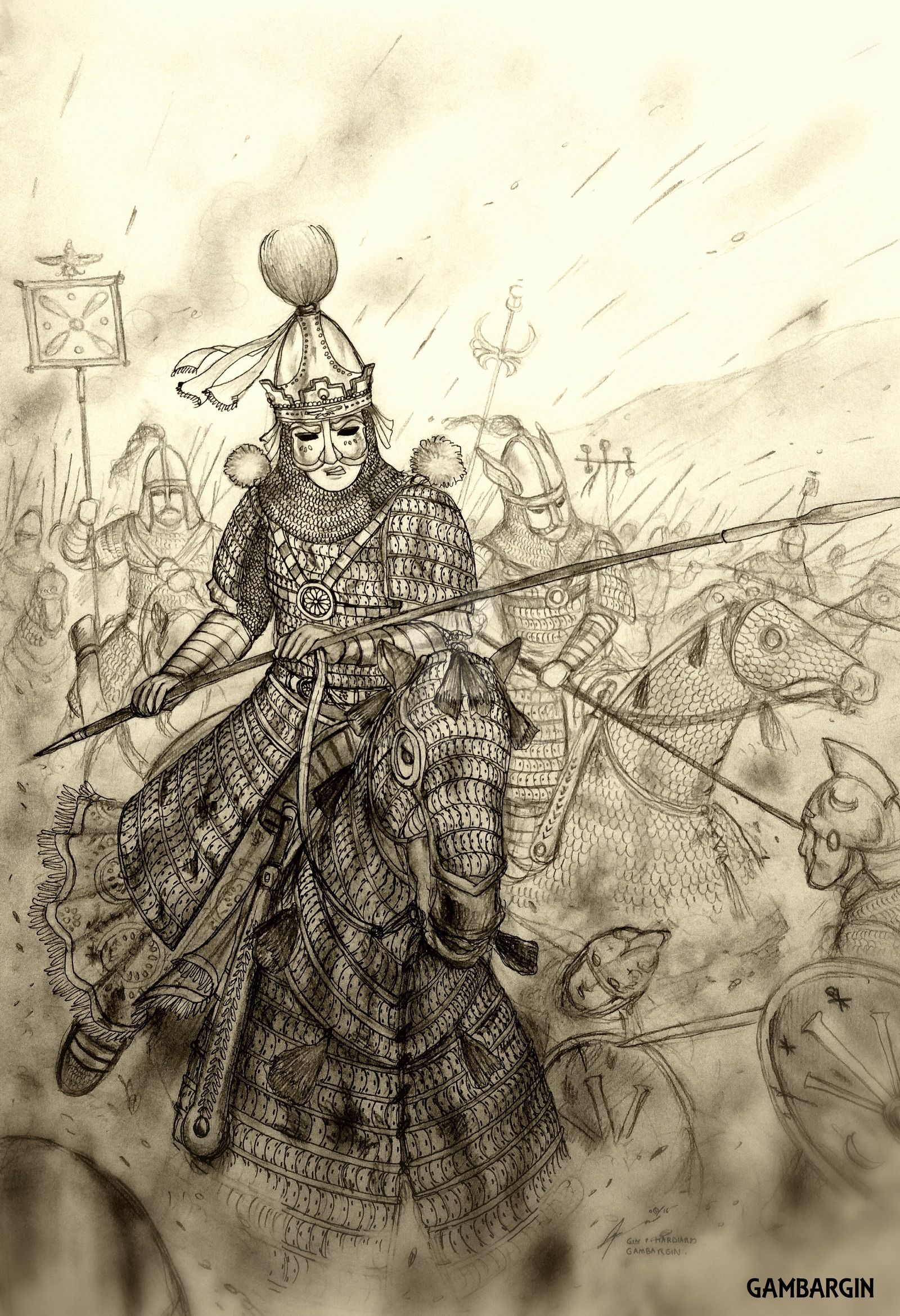
The Sassanids had turned out to favor the Jews over Christians and when capturing Jerusalem with the help of Jews upset about being treated as second class citizens by the Christians, they assigned these Jews to be in charge of the city over the Christians which definitely angered the Christians making them revolt against their Jewish and Sassanid Persian overlords, though the rebellion was brutally crushed by the Sassanid forces and as result of quelling the rebellion, the Sassanids looted the city and massacred a large number of Christians, taking away its most important relics as well including the True Cross wherein Jesus Christ himself was crucified in and many other relics from the time of Christ as well as the Jewish Menorah- which if you remember from the previous chapter was one of the spoils the Byzantines gained when capturing Carthage from the Vandals in 534 which was then returned to Jerusalem, its original place- over to the Sassanid capital, Ctesiphon. The looting of the relics of Jerusalem truly shocked the people of Constantinople who knowing the oppression of the Christians there were not only due to their Sassanid overlords but by their Jewish allies began having anti-Jewish sentiments that the Byzantine Christians in Constantinople would randomly beat-up Jews in the streets, while Heraclius here saw the loss of Jerusalem as God’s punishment for his incestuous marriage to his niece Martina. The Balkans here was still facing a heavy crisis of the raiding Avars and Slavs, and it grew even worse there when Heraclius had to pull out its troops to head over to the east to focus on the Sassanid threat but Heraclius himself too did not want to lose the Balkans, so even with the Sassanid threat ongoing, he headed north to confront the Avars and Slavs where in 619 he tried to propose peace with the Avar khan or ruler as the Sassanid threat was more important and devastating, but the khan refused Heraclius’ offer and set a trap to kidnap him, although Heraclius escaped the trap almost getting himself killed, thus due to failing in kidnapping Heraclius, the Avars were then forced to make peace with the Byzantines.

At this point, things would go from bad to worse for the Byzantines as in 619, the Sassanids now managed to invade and capture Byzantine Egypt, thus totally cutting off the empire’s grain supply and triggering riots all over the empire because of this while in 620, almost the entire Byzantine Balkans and half of Greece were lost to the Avars and Slavs as again troops needed to be sent over to fight the Sassanids in the east. With all this crisis going on, Heraclius first thought hope was lost and that he had to move the imperial capital to Carthage where he was based in before, but soon he knew he could solve it but in order to do so, he needed to take the greatest of risks and a lot had to do with taxation policies which included increasing taxes and taxing the Church and cutting in half the annual pay for the soldiers and court officials and although this would trigger them to revolt like they did under Maurice, Heraclius at least convinced them it was only temporary, assuring them everything will soon stabilize when the war against the Sassanids will be over. In the meantime, it was around this point, more particularly in the year 622 down south in the Arabian Desert when the new religion of Islam was born as here in 622 the prophet Muhammad– an Arabian trader from the Quraysh tribe born back in 570 when Justin II ruled Byzantium- with his followers fled his birth city of Mecca to Medina when the people of Mecca did not accept this new faith, although as early as 610, Muhammad had already been receiving some divine revelations.


In 622, Heraclius’ holdings were only limited to Constantinople, Thrace, some of Greece, the Aegean Islands, and Western Asia Minor as North Africa and Italy were under the control of the exarchs while the Sassanids had now captured almost all of Asia Minor penetrating all the way as far as the Asian shore of the Bosporus, right across Constantinople that the people of Constantinople even reported that at night when looking across the Bosporus, they could already see the campfires of the Sassanid army, although no matter how much land they have conquered, the Sassanid Persians did not have a fleet to let them cross into Europe and lay siege to Constantinople. It was here in 622 when the Sassanid Empire under Shah Khosrow II was at its largest territorial extent reaching as far west as Chalcedon across Constantinople, as far south as Egypt and Yemen, as far north as the Caucasus Mountains in Southern Russia, and as far east as the border of India, and here Heraclius would make a very bold move by attacking the Sassanids when they were at their most powerful and largest in land.

By 622, Heraclius’ army was now fully prepared to face off the might of the Sassanids in battle so here they set off from Constantinople by sea landing at the location of Issus in Cilicia, Southern Asia Minor, the same place Alexander the Great had defeated the Achaemenid Persian Empire all the way back in 333BC. In his campaign, Heraclius brought along with him his wife Martina who would give birth to their children as they travelled while Heraclius’ eldest 10-year-old son Constantine was left behind in Constantinople to watch over it together with Patriarch Sergius I. After landing at Issus, Heraclius and his army headed north to Sassanid occupied Cappadocia where they actually managed to beat the invincible general Shahrbaraz in battle recapturing the region, afterwards heading north back to the region of Pontus along the Black Sea coast of Asia Minor which was still under Byzantine rule, and here Heraclius made the coastal city of Trebizond as his base for the campaign. It was at this point when the idea of warfare would change from fighting over conquering lands to fighting for faith and as to motivate his soldiers in battle, Heraclius encouraged them they were fighting not to get rid of an enemy but in the name of Orthodox Christianity as they saw the Zoroastrian Sassanids as the enemy of their faith considering they looted the holy sites of Jerusalem and stole the most important Christian relics.
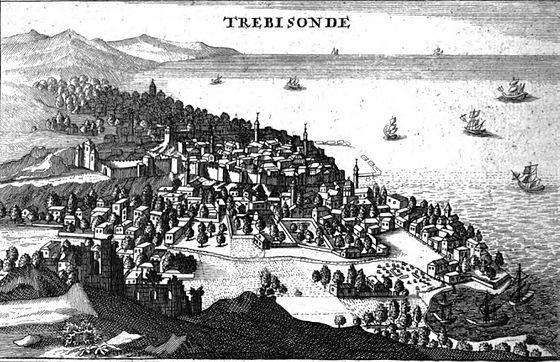
By 623, Heraclius crossed deep into Sassanid territory through Armenia in pursuit of Khosrow II who was believed to be in the Sassanid’s province of Albania (today’s Azerbaijan), although Khosrow II was nowhere to be found but instead it was here in this area where the Zoroastrian holy site of the Fire Temple was found, which had been sacred to the Persians ever since the days of the ancient Persian kingdoms and empires and as Heraclius and his army arrived there, they believed the stolen relics were to be found there, although they were wrong and when finding nothing there, Heraclius out revenge for the Sassanids’ looting of Jerusalem ordered the Fire Temple burned down completely.

In 624, Heraclius had come across the Nomadic Turkic Khazar people of the Caucasus and here made an alliance with their khan against the Sassanids as they both had the Sassanids as a common enemy and with this alliance, Heraclius was able to score more major victories against the Sassanids, and it was at this point when the Byzantines were able to reclaim Armenia from the Sassanids and although they had been scoring victories in the east against the Sassanids, it also happened here in 624 in the far west that the Visigoths of Spain completely took over the last remains of Byzantine Southern Spain, which the Byzantines never bothered about recapturing anymore. In 625, Heraclius again with the help of the Khazars were able to recapture Mesopotamia forcing Shahrbaraz who was defeated again here to flee while also here in 625, Martina gave birth to her only healthy son with Heraclius which was Heraklonas as due to inbreeding, the other children of Martina and Heraclius either died shortly after birth or had physical deformities.

When fleeing Mesopotamia, Shahrbaraz in 626 headed all the way to Sassanid occupied land across Constantinople in Asia Minor where he found a way to send word to the same Avar khan that almost captured Heraclius in 619 to form alliance to attack Constantinople, and here the Avars and Slavs being at the European side laid siege to Constantinople’s land walls itself making this the second time Constantinople was attacked by an enemy army, the last one being the Goths in 378 which failed, mentioned back in chapter I. Using the absence of Heraclius to their advantage, the Avars and Slavs with 80,000 men combined attacked Constantinople’s invincible 5th century Theodosian Walls but using primitive siege weapons, they got nowhere near breaching it and poor communications with the Sassanids across the Bosporus made the coordination of this siege even more difficult. Defending Constantinople here as Heraclius and his best forces away was Heraclius’ 14-year-old son Constantine as well as the patriarch Sergius I and the patrician Bonus who all did not have much military experience and only commanding some 12,000 men, though Heraclius soon got word of the siege and not wanting to waste his efforts in coming close to winning the Sassanid war in the east, here he split his army in 3 parts where the smallest division under him was to defend Armenia, the division of his brother Theodore was sent over to defend what was recaptured in Mesopotamia, and third one to reinforce Constantinople.
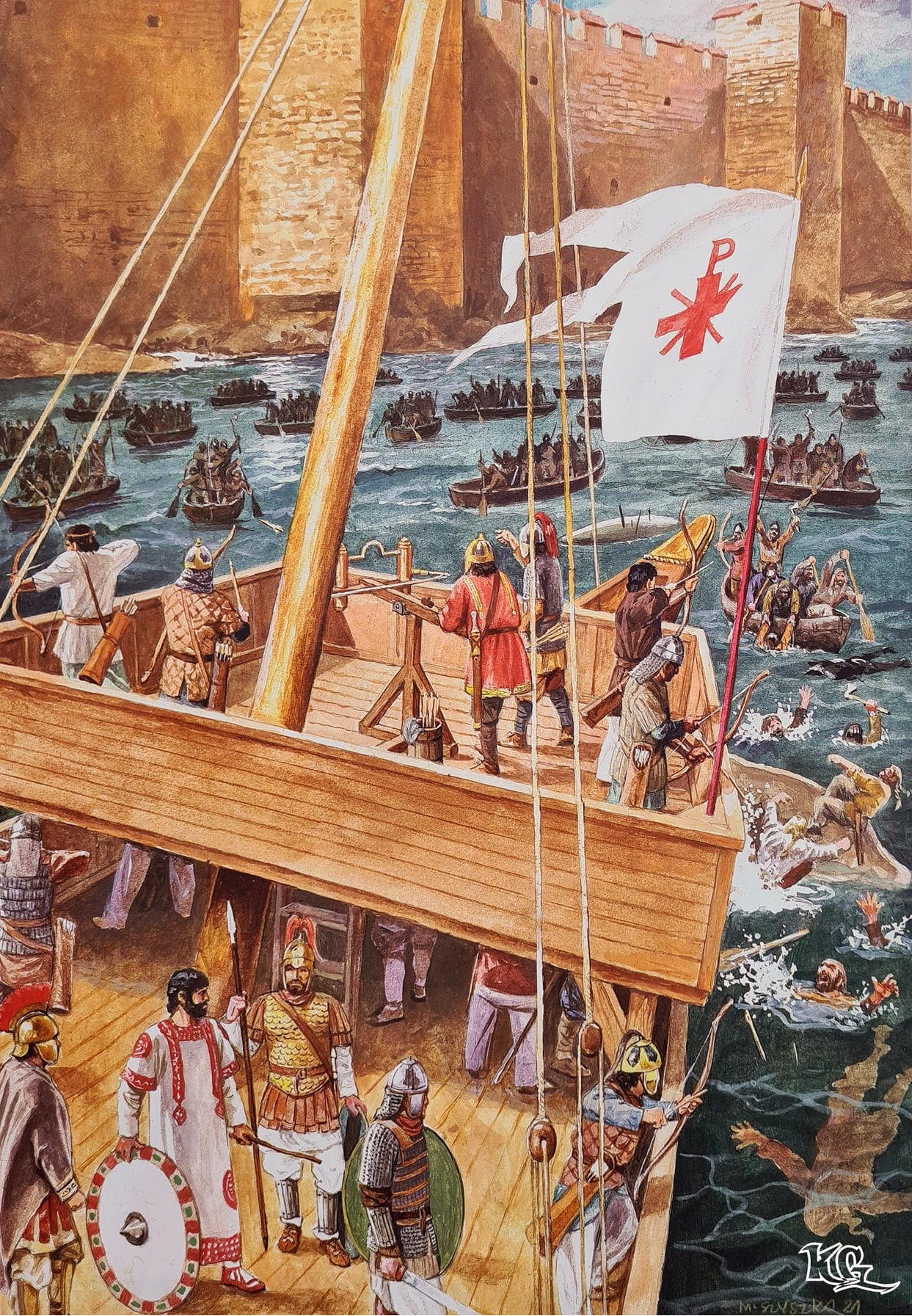
As the Avars and Slavs attacked by land, Sharbaraz attempted to aid them by sending his forces across the Bosporus using the small boats of the Slavs which failed as these boats were too unstable to carry large armies and soon enough the Byzantine fleet arrived at the Bosporus destroying the Slavic boats and killing the Sassanid soldiers that boarded them. After multiple attempts at scaling Constantinople’s walls, the Avars and Slavs gave up, and so did the Sassanids, thus they retreated and for the Avars, their loss in this battle broke off their power forcing them to retreat back north never to return again, although leaving their Slav allies behind in the Balkans. Over in Mesopotamia also in 626, Theodore and his forces won a decisive victory over the Sassanid forces led by the general Shahin and with this defeat, Shahin committed suicide while his body was brought over to Khosrow II who enraged with Shahin’s defeat disfigured Shahin’s body himself by whipping it many times. It was in 627 when Heraclius himself resumed personally leading the army as for 626, he left the job mostly to his Khazar allies as in 627, the alliance with the Khazars broke when their khan died and here Heraclius marched south to the Sassanid heartland in Iraq by stalking the Sassanid forces under the general Rhahzadh until both forces met near the ancient Assyrian city of Nineveh. Here on December 12, 627 when the Byzantine and Sassanid forces clashed at the Battle of Nineveh, Heraclius personally killed Rhahzadh and two other Sassanid commanders himself and at the end of the day, the Byzantines won a decisive victory opening the way for them to besiege the Sassanid capital of Ctesiphon which unlike Constantinople was not surrounded by water making it easier to attack being on flat ground. The shah Khosrow II meanwhile began suspecting Shahrbaraz of treason and when sending a letter to Shahrbaraz, Heraclius intercepted it and forged it ordering Shahrbaraz to remain in Asia Minor which definitely allowed Heraclius and his army to seize, capture, and loot Khosrow II’s palace of Dastagird near Ctesiphon in 628 and when looting the palace, they came across tons of exotic spices and Persian carpets, exotic animals like lions and tigers, and 300 Roman war standards captured over the past 3 centuries by the Sassanids in battle and after taking the loot, the palace was burned to the ground, though since Khosrow II was away, Ctesiphon was left untouched by the Byzantines. Khosrow II on the other hand was still nowhere to be found as he fled further east fearing a prophecy saying he would be killed, although his end did not come from the Byzantines but from his own people. After Heraclius and his army began heading back west, the Sassanid nobles together with Khosrow’s son Sheroe and general Shahrbaraz conspired to overthrow Khosrow II and on February 28, 628 Khosrow II was captured and executed and so were his other sons except of course Sheroe who was then crowned as Shah Kavad II and his first act as the new Sassanid emperor was to finally end the war and make peace with Byzantium.

Kavad II acknowledged Heraclius as the victor of the war sending Shahrbaraz to Asia Minor where Heraclius was at to conclude peace and here, the relics looted from Jerusalem including the True Cross were returned to Heraclius. Part of this peace agreement too was for all Sassanid forces in Byzantine territory to retreat back home and to return to the Byzantines all the lands the Sassanids had conquered from them since 602 which included Armenia, Syria, Palestine, and Egypt as well as the major cities of Antioch, Jerusalem, and Alexandria, and right here the long war ended without achieving really anything for the Byzantines despite them penetrating deep into the Sassanid heartland, instead it only resulted in the pre-war borders restored.
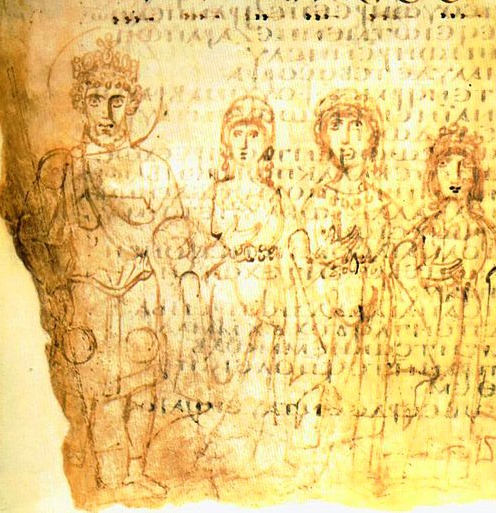
Heraclius here at 53 at least returned to Constantinople victorious as a war hero celebrating his return with a triumphal march and in it was paraded all their loot taken from the 6-year campaign including 4 Persian war elephants and with all this victory, Heraclius became extremely popular with his people as also winning the war had filled up the empty treasury once again, thus the promise to resume paying the army and government officials in full again was fulfilled. The following year (629), Heraclius himself journeyed to Jerusalem, which had just been restored to Byzantine rule to return the True Cross and before entering, he felt a kind of divine energy that him feel it wasn’t right to ride into the city, rather he dismounted from his horse and carried the True Cross himself to its rightful place, the Church of the Church of the Holy Sepulcher, setting a new tradition for those who would conquer Jerusalem in the next centuries to come which was for the conquering ruler to walk into the city by foot.

Heraclius too after defeating the Sassanids took the ruling title the Sassanid Persian rulers used which was “King of Kings” as well as dropping the Roman title of Augustus in which all Byzantine emperors before him used, instead replacing it with Basileus which was “emperor” in Greek and for the next 800 years all emperors would use this title, thus here marks the beginning of the Greek age of the Byzantine Empire. As for the Sassanids, right when they thought they came too close to crushing the Byzantines and conquering the world, they were proven wrong here as in 628, their all-powerful emperor Khosrow II was executed, his son and successor Kavad II died the same year from the Plague of Justinian which again returned in Sassanid lands, and in the following year, civil war broke out that would definitely spell the end of the Sassanid Empire, thus this war that had just ended would be remembered as the “Final Byzantine-Sassanid War”.

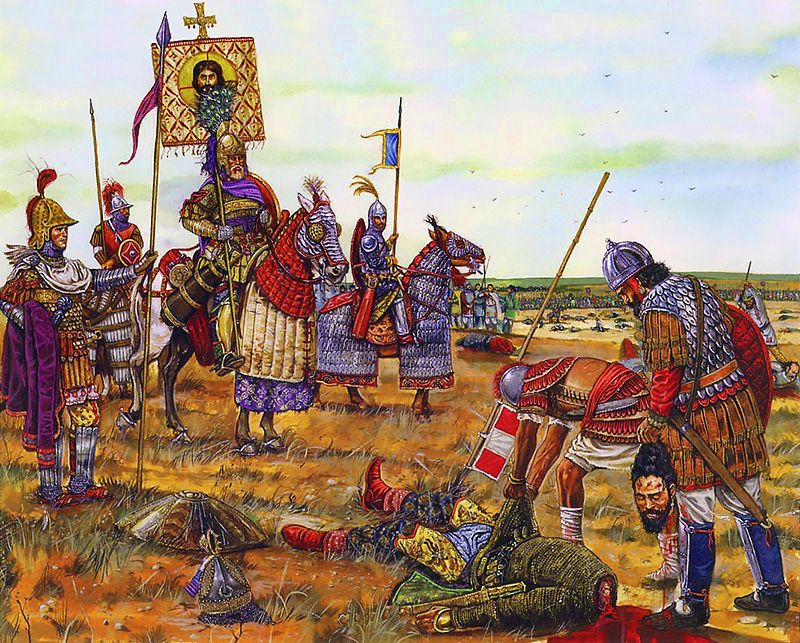
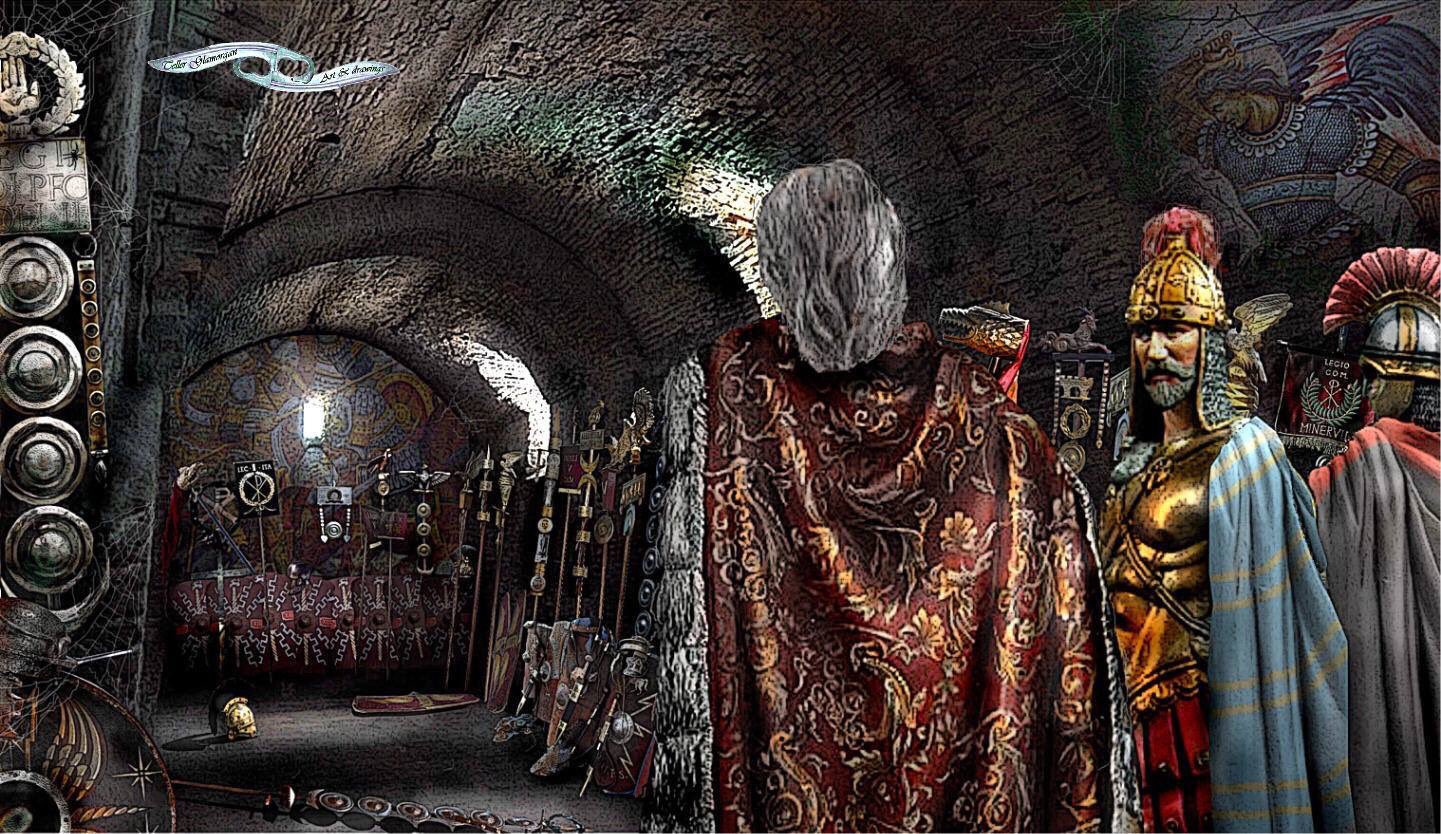

Watch this to learn more about the Byzantine-Sassanid War of 602-628 (Kings and Generals).
The Rise of the Arab Caliphate (630-641)

As the Byzantines and Sassanids clashed in a full-scale war, the disunited Arab tribes of the southern deserts began to unite and what caused them to unite was the new religion of Islam which the prophet Muhammad had successfully spread. By 629, Muhammad and his followers who became his army successfully conquered Mecca where they had been chased away from years earlier, and soon enough they had united almost all of Arabia under Islam except for the lands still under Sassanid rule.

Early Muslim sources say that in 628 before the recapture of Mecca, Muhammad sent letters to both Heraclius of Byzantium who was referred to as the “Roman emperor” and Khosrow II of the Sassanid Empire who was still alive, encouraging them to join him by converting their empires to Islam, and Heraclius here after his triumph received the letter and politely wrote back saying he would consider it but his people would not, while Khosrow II already losing his sanity at this point before his death rudely tore the letter which gave a reason for Muhammad’s followers to one day invade the Sassanid Empire.

The failure to convert Byzantium to Islam led a small Arab army to attack the Byzantine lands that bordered the Arabian Desert (today’s Jordan) and here at the Battle of Mu’tah, the Byzantines aided by the forces of their client kingdom, the Christian Arab Ghassanids that had settled right at this part at the edge of the Arabian Desert were able to defeat this small Arab force. Back in the Sassanid Empire, the civil war after Kavad II’s death got even worse that one ruler just kept coming after the other and in this unstable time, the general Shahrbaraz even took the throne and became shah in 630 but was killed the same year and replaced as ruler by Khosrow II’s daughter Boran, the first and only female Sassanid ruler who was later killed in 632 and in this time of civil war, the Sassanid governors of the provinces of Mazun and Yemen declared independence making these provinces an easy target for the now united Arabs which they soon enough had conquered. In the meantime as Heraclius had won the Sassanid war being more popular than ever, he had been touring the eastern provinces that the Sassanids had just returned to the Byzantines and at this time, being the year 630, he had his first grandson which was the son of his eldest son Constantine with his wife Gregoria, born as Heraclius Constantine on November 7 and was named after both his grandfather and father but to not confuse things, historians would refer to him as Constans the nickname he was called which meant “little Constantine” in Latin. It also happened at this time in 632 that the prophet Muhammad died in Medina and at his death, all of Arabia was united under Islam and even though the founder of the rising Empire of Islam had died, his work was to be continued by his close friend and relative Abu Bakr who would succeed Muhammad as the leader of the Islamic people and become the first Caliph or emperor of the first Islamic Empire which here, founded in 632 was the Rashidun Caliphate and it was under the first Caliph Abu Bakr after putting all of Arabia under his rule wherein the Islamic Arab armies would expand beyond Arabia to conquer Byzantine and Sassanid territories.

All while the Arab armies were set to expand beyond Arabia, Heraclius as most of the emperors did got himself involved in the endless religious debates and controversies which here in the 7th century was again between the Orthodox and Monophysite Christians with the debates being again on the natures of Christ and ever since 622, Patriarch Sergius I of Constantinople proposed a new compromise which was to end the debates by concluding a new doctrine saying that Jesus Christ had one energy. This new doctrine was well agreed to by many bishops and patriarchs across the empire, even by the Patriarch of Rome or the pope, though only the Patriarch of Jerusalem Sophronius objected to it.

While Heraclius had been occupied by religious debates, the Arab armies numbering up to 24,000 here in 633 had now made their first full attacks in Byzantine Syria and Palestine invading from the east as previously, the Arabs had already conquered the Sassanid territories along the border with Byzantine Syria and Palestine. In 634, Caliph Abu Bakr had died and was succeeded by Omar, another follower of Muhammad as the 2nd Rashidun caliph and it was under his rule when Islam would fully expand by force as here too in 634, his forces further defeated the Byzantines and even more in 635 when almost all of Syria including the city of Damascus fell to the Arabs. At this time, Heraclius concluded that he was too old to lead the armies in person but being in Antioch at the time the Arabs began their invasion of Syria, Heraclius sent an army of 40,000 men under a general named Theodore– which was not his brother with the same name- to push the Arabs back, and though the fighting styles of the Arabs were not familiar to the Byzantines at all as it was never mentioned anywhere, not even in Maurice’s Strategikon, Heraclius and his generals at least tried to wing it out thinking the strength of the Arabs was nothing much, as after all they were just desert tribes barely armed and armored and had just began expanding. The Byzantine forces under Theodore and Arab forces under their energetic general Khalid ibn al-Walid, another follower of Muhammad met them at the Battle of the Yarmouk River in the Syrian Desert in August of 636 and here the Byzantines now saw the full strength and capability of the Arab armies that could easily overwhelm them in an instant with the speed of their cavalry consisting of horses and camels as well as their harassing tactics.
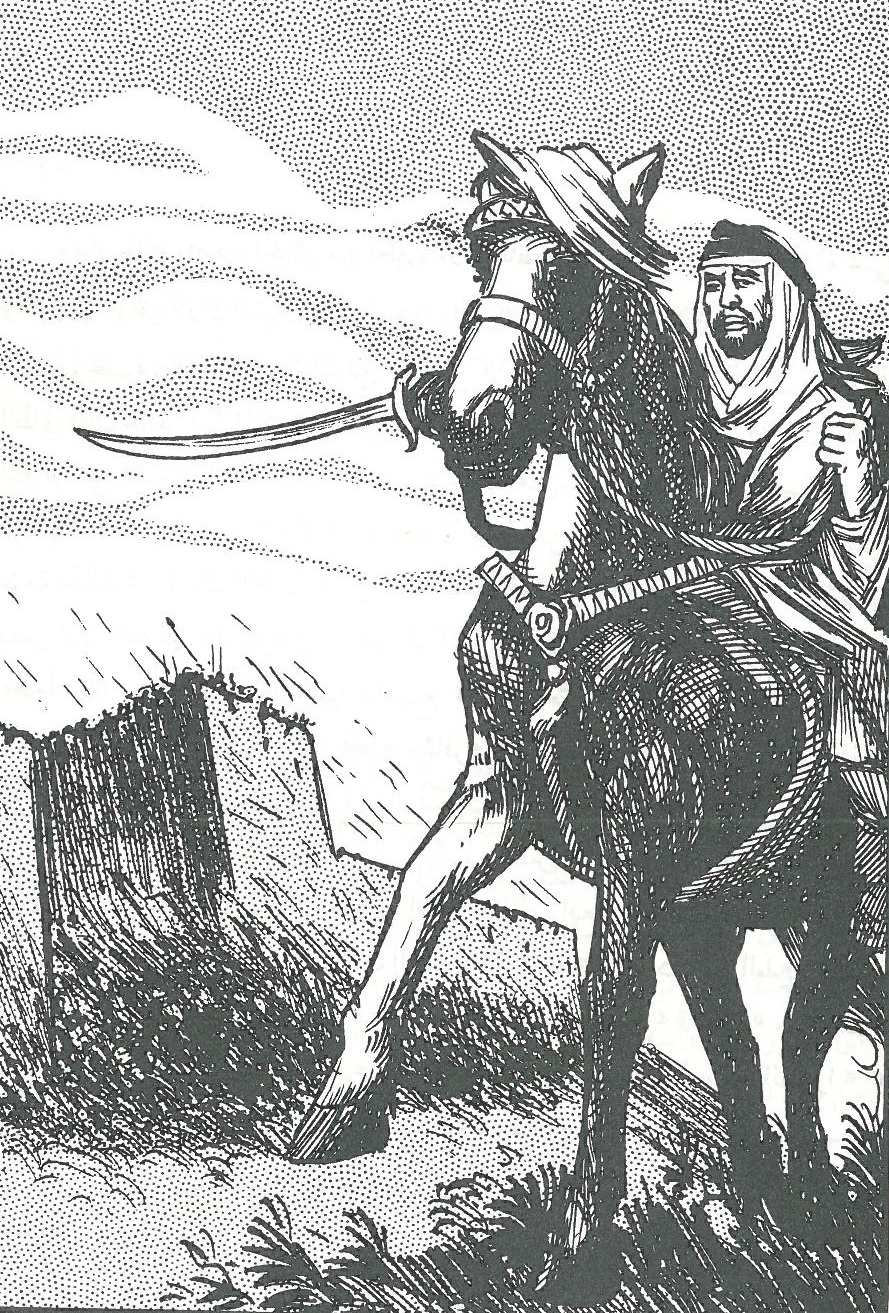
The Byzantines though had been used to fighting in fixed formations in all their wars especially against the Sassanids, and here they thought they could face off the Arabs this way, but the Arabs fought differently by attacking in lose formations and with such speed surrounding the Byzantine forces exhausting them. The battle went on for 5 days and at first, the Byzantines seemed to be having the upper hand but on the 5th day, a sudden sandstorm blew at the directions of the Byzantine forces to the point that they could not see even a meter ahead of them and as a result of this, the Arabs not affected by the sandstorm used it as an opportunity to slaughter the Byzantines, and at the end of the day, not a single Byzantine soldier was left alive including their general Theodore, thus this opened the way for the Arabs to capture everything the Byzantines gained back from the Sassanids in 628.


In the meantime, while the Byzantine forces were absolutely defeated at the Battle of Yarmouk in 636, the Arabs again won another great victory later that year, this time against the Sassanid forces at the Battle of Al-Qadisiya where another division of the Arab army with their speed and harassing tactics totally annihilated the Sassanid forces weakened from the previous war against the Byzantines, and even if the Sassanids had elephants here, they still lost with most of their generals killed. Following this victory, the Arabs proceeded further into the Sassanid Empire with very little resistance and by 637, they had laid siege to Ctesiphon while the very young Sassanid shah Yazdegerd III, grandson of Khosrow II who had come to power in 632 fled Ctesiphon to the north and not surprisingly, Ctesiphon had fallen to the Arabs in very little time. Back in Syria, the way for the Arabs was clear and now their ultimate prize was Jerusalem as they knew it was the holy city for the Byzantine Christians and also a holy city for Islam, though the Arabs knew that capturing Jerusalem would weaken the morale of the Byzantines. The Patriarch of Jerusalem Sophronius though knew the Arabs would soon attack Jerusalem so before things could get worse, Sophronius had the relic of the True Cross returned by Heraclius in 629 shipped to Constantinople for safekeeping fearing the Arabs would steal it the way the Sassanids did before.

Now in early 637, the Arab forces again led by the victor of Yarmouk Al-Walid laid siege to Jerusalem which was poorly defended by the very exhausted and outnumbered Byzantine troops with only Patriarch Sophronius leading them. Seeing the Arab forces outside, Sophronius did not want to put up a fight, instead he agreed to surrender the city only if the caliph Omar himself would accept the surrender. At this time, Omar all the way in the Arab Caliphate’s capital Medina in the Arabian Desert travelled himself north to Jerusalem in a white camel, where doing the same as Heraclius did in 629 out of respect for the city got off his camel and entered the city by foot where he was met by Sophronius himself who surrendered the keys of the city to Omar. In Jerusalem, Omar was treated well as Sophronius himself gave him a tour of the city’s holy sites, and here they made a deal which was that Omar was allowed to take Jerusalem as long as he allowed Sophronius to keep his position as patriarch and for the Christians and Jews to be left alone to worship freely with their Muslim occupiers. Jerusalem then fell peacefully while the Arabs later conquered all of Syria and Palestine except for Antioch where the emperor was still in, but hearing now that Jerusalem and Syria was lost, Heraclius just chose to say goodbye knowing that with the might of the Arabs, it would be too difficult to take them back so he then set sail returning to Constantinople while later in 637, even Antioch had fallen to the Arabs.
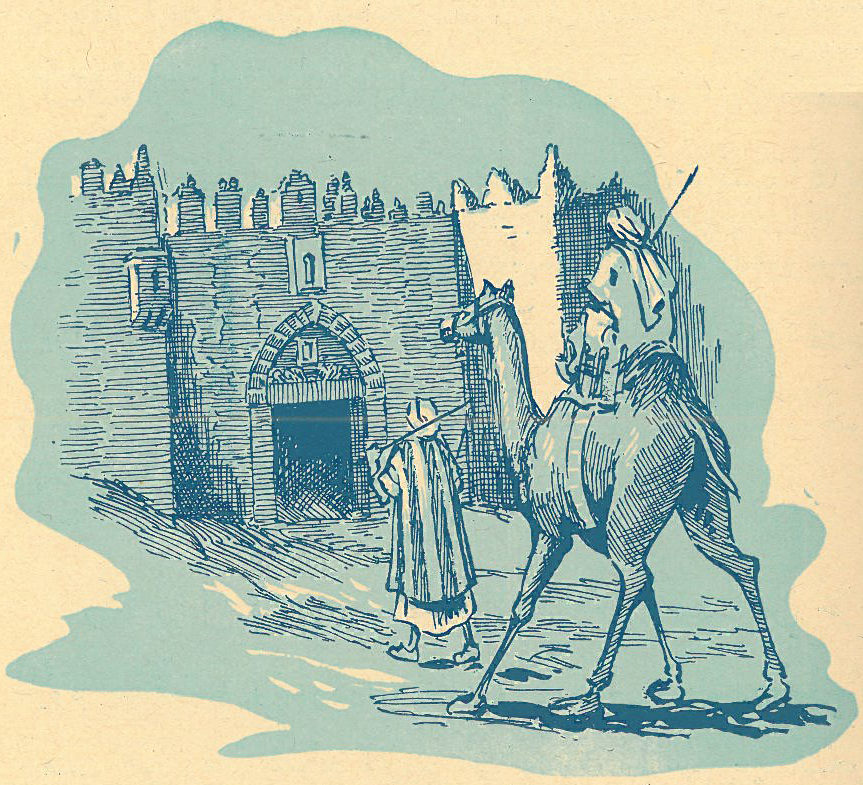
Over in the Sassanid Empire, the Arabs again severely defeated the Sassanid forces at the Battle of Jalula in Iraq while Shah Yazdegerd III fled even deeper into Iran which the Sassanids still held. Heraclius on the other hand had been losing his popularity after losing all of the east to the Arabs, and a lot of people blamed his defeats again all on his incestuous marriage to Martina and when arriving back across the Bosporus in Constantinople, Heraclius had developed a great fear of water that Martina had to have a wooden bridge lined with railings for him to cross so that he would not see the water. In 638, Heraclius here had been losing his sanity that he could no longer rule alone so here he appointed his 26-year-old son Constantine to be his co-emperor Constantine III though Martina also convinced Heraclius to make her son with him Heraklonas who was now 13 as his other co-emperor equal in rank to Constantine III.

It also happened in 638 that Patriarch Sophronius of Jerusalem and Patriarch Sergius I of Constantinople both died peacefully- in their respective cities- leaving the new Monothelite doctrine unresolved while Heraclius’ health grew even worse that it was said by the 9th century historian Nikephoros that Heraclius was suffering a kind of prostate cancer as he had difficulties in urinating. By 639, the Arabs now began their invasion of Byzantine Egypt while in 640, they began invading Byzantine Armenia and Heraclius here was now in shock, but knowing nothing can be done about it anymore, as here, the dying emperor concluded that God was definitely punishing him for marrying Martina.

In February 11, 641 the 66-year-old Emperor Heraclius had died in Constantinople ruling for 30 years through many ups and downs. In his reign, Heraclius began ruling a deeply troubled empire in ruins which grew worse but was able to put it back together, but just as he thought he did, everything he worked so hard on fell apart, thus he died a broken man seeing all the lands he regained after defeating the Sassanids lost to the Arabs, therefore it can simply be said that Heraclius had lived too long that it would be better off that he died shortly after his victory against the Sassanids in 628 as a happy man, but instead he lived long enough to see all his hard work undone unlike Justinian I before him who at least died long before his hard work in expanding the empire would be all shattered. Heraclius though had the legacy of beginning the Greek era of Byzantium by turning Greek into the major language that it would no longer be only a major language for everyday use but a language used in the government and army, reorganizing the political-military system of the empire by laying the foundations for the Thematic System that would be operational years later, and seeing the Taurus Mountains of Asia Minor as the empire’s new natural defense against the Arabs, which sure enough will soon happen as well.
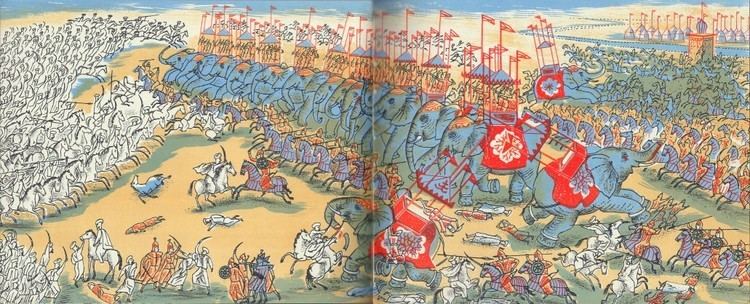

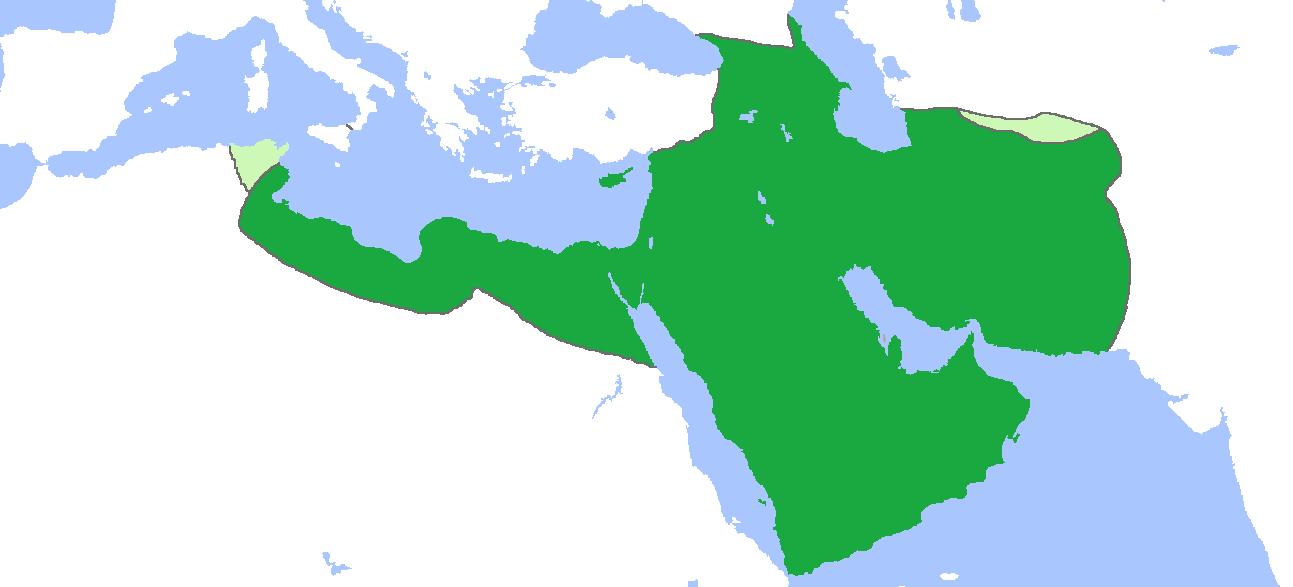
The Reign of Constans II (641-656)

The year 641 would forever be remembered as the year of the 4 emperors first being Heraclius who died in February of that year and was immediately succeeded by his eldest son Constantine III who was extremely popular with the people of Constantinople as it was him at only age 14 back in 626 who helped successfully defend Constantinople from the Avars, Slavs, and Sassanids. However, Constantine III is not be confused with another Roman emperor who was also Constantine III, a usurper turned legitimate emperor from the Western Roman Empire (r. 407-411) who was mentioned in chapter II of this series, though surprisingly this Byzantine emperor in 641 was also Constantine III despite there being another one with his name, and as emperor at age 29, the Byzantine Constantine III was already in bad health suffering from tuberculosis, and the empire he inherited from his father had a very empty treasury due to the previous wars with the Sassanids and now with the Arabs that a few weeks after his father’s death, he had to open his father’s coffin, take the crown, and sell it to increase the treasury. After only 2 months of being in power, Constantine III fell deathly ill and here he sent off some money to an Armenian general named Valentinus, a descendant of Armenia’s ancient Arsacid Dynasty that ruled Armenia (54-428AD), to back Constantine’s young son Constans as the new emperor as Constantine did not feel his half-brother Heraklonas who was his co-emperor at an equal level was fit to be emperor as he was under the regency of his mother Martina who Constantine III did not really trust as his step-mother.
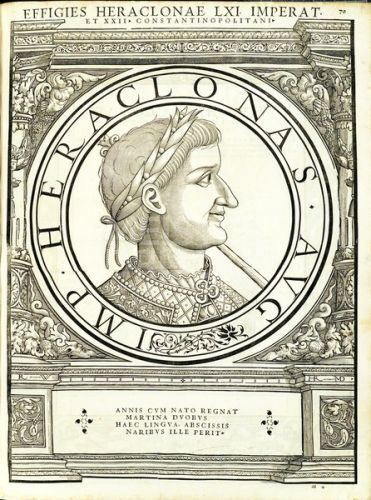
Previously, Martina convinced Heraclius that her son Heraklonas should be Constantine III’s co-emperor to protect her interests which the old Heraclius had agreed to and although a lot of historians always give a bad image of Martina as the wicked step-mother, it is not entirely true as at that time, ambitious women were usually given a bad image as the standard back then was for women to be content with where they are and true enough in this story’s case, Martina never really had any evil intentions. On May 3 of 641, Constantine III died from tuberculosis, though again others suspect Martina and Heraklonas of poisoning him, and Constantine’s son Constans surely believed Martina and Heraklonas envied his father and poisoned him and so now the 16-year-old Heraklonas ruled as the sole emperor, though only a puppet of his mother Martina. Heraklonas’ actually ruled as “Heraclius II” but to not be confused with his father, he used the name Heraklonas meaning “little Heraclius” just as Constans meant “little Constantine” and already when Heraklonas came to power, he was already unpopular, precisely because he was the child of an incestuous marriage between uncle and niece and his mother Martina was surely unpopular being an ambitious woman. It was here some months after Heraklonas became emperor when the general Valentinus arrived outside Constantinople with orders from the late Constantine III demanding that Heraklonas make young Constans his co-emperor to continue Constantine III’s line, but Heraklonas and Martina refused the offer. Sometime later, Valentinus began spreading rumors that Martina and Heraklonas wanted to depose young Constans, and the people who were loyal to Constantine III with Constans being his son all revolted in favor of Constans and by September of 641, both Martina and Heraklonas were arrested and the almost 11-year-old Constans was put in the throne reigning as “Constantine IV”, although history would forever remember him by reigning with his nickname as “Constans II” whereas his son who will appear later on would be the “Constantine IV”, and now the first Constans was the 4th century Byzantine emperor Constans I (r. 337-350), who was discussed back in chapter I. Martina and Heraklonas were then banished from the palace and young Constans II came to rule the empire under the regency of Valentinus, the senate, his mother Gregoria, and the new Patriarch of Constantinople Paul II. Later that year at only 11, Constans would already show the kind of autocratic style of ruling that would define his reign when he spoke to the senate at the square outside Constantinople’s Hagia Sophia known as the Augusteum where the Column of Justinian was, and here he falsely accused Martina and Heraklonas of poisoning his father even if he died naturally, yet with his speech, the young emperor would already show how smart, cunning, and articulate he was in the skill of speech, and here is how the speech goes:
After my father Constantine was born, he was emperor with his own father, my grandfather Heraclius for a long time during his life, but after him for a very short while, for the envy of his stepmother Martina ended his high hopes and his life. She did this for the sake of Heraklonas, who was her illegitimate son by Heraclius. It was mostly your decision, which expelled her and her son from the imperial power, and your great dignity knows it well. Therefore, I can call on you to be advisors and judges for the common wealth of our subjects.
-Constans II, 641

Now Martina and Heraklonas in fact did not commit any crime, rather they just envied Constantine III but with this kind of eloquent speech made by young Constans II, the senate immediately put all the blame on Martina and Heraklonas falsely accusing them, as they never saw Heraklonas as legitimate ruler anyway as for them the incestuous marriage between Heraclius and Martina was already illegal, therefore Heraklonas was an illegitimate child and unfit for being an emperor. As Martina and Heraklonas were both condemned as public enemies, the mob seized them and had Martina’s tongue slit while Heraklonas’ nose was cut off, the first time it would happen to an emperor, thus making this a new practice for deposing emperors, as having just a single deformity like not having a nose would make someone unfit to rule whereas the Byzantines saw that their emperor had to be perfect in physical form. Both Martina and Heraklonas were then banished to the Island of Rhodes where Heraklonas would die by early 642 possibly from suicide or from the severity of the injury caused by his nose being cut-off while Martina would die possibly peacefully years later in Rhodes as well. Now back to young Constans II, it also turned out that he too was a child of an incestuous marriage, although the level of the marriage of Constantine III and Gregoria was not as high as the level of incest between Heraclius and Martina being uncle and niece as Constantine III and Gregoria were only second cousins with Greogria being the daughter of Heraclius’ cousin Nicetas who helped Heraclius seize Egypt back in 608 from Phocas’ loyalist army, and one lesser known fact was that Constans II did indeed have a twin brother named Theodosius who looked very similar to him but not exactly, making this one of the few rare cases of rulers in world history that actually had a twin. The big question here was why it was Constans that was chosen to be emperor and not Theodosius even if possibly one could not tell which was the older one, but the answer could be that their father Constantine III certainly knew Constans came out first on November 7 of 630. Constans and Theodosius were born when their grandfather Heraclius was at his height of popularity but as they grew up, they would hear nothing more but tragic news of entire provinces being lost to the Arabs and their grandfather losing his popularity by a lot, and as the host of the History of Byzantium podcast Robin Pierson says, the reason why Constans II would end up ruling in such a bitter and paranoid way was the childhood he grew up with as first he grew up hearing stories of his empire’s armies which were once so powerful suddenly being defeated, then he became emperor at only 11 inheriting a highly troubled empire, therefore he would indeed lose his childhood putting all his attention to his empire. As for Theodosius, due to the fact that he did not become emperor, he would instead enjoy life growing up in the imperial palace while his twin brother ruled, although he secretly did want to claim the empire as he had some kind of idea that he could have been born first, which is why he would later be suspected of plotting, well at least in this story’s case. The empire Constans II had inherited was now having to fight on the defensive against the Arabs in the east with the provinces of Syria and Palestine lost, Egypt now under attack, the Balkans and half of Greece entirely lost to the Slavs who were left behind by their Avar allies there, Italy split in half between the Byzantines and Lombards, all of Byzantine Spain lost, and North Africa where Carthage was soon to be threatened by the Arabs. The biggest mystery for Constans II, which in this story’s case would define his true intention to fully deal with the Arabs by force is how the Arabs expanded out nowhere as just shortly before his birth, they had just been scattered tribes in the southern deserts that did not ever pose much of a threat to the Byzantines that the Strategikon of Maurice even said nothing about their fighting styles, yet now in only less than 20 years since expanding out of the desert they had crushed the Sassanid Empire and took away almost half of Byzantium. The answer to this mystery then is that if all the people of this vast desert in which there were many all united under a common ideology which here is the religion of Islam, then they would all be fighting with such zeal that would allow them to keep wanting to conquer, and this true enough was the case for the Arabs who no one saw their sudden expansion out of the Arabian Desert coming. In addition, the Arabs being people of the desert moved quick and light which allowed them to travel so fast unlike the Byzantines and Sassanids who always moved in formation and always with a plan, while the Arabs just moved spontaneously without having much equipment and supplies the way the Byzantines and Sassanids did, and also unlike the Byzantines and Sassanids who could not cross deserts, the Arabs being from it could which allowed them to quickly take over all of Byzantine Egypt soon enough.


Now the year 642 would be a bad year for the Byzantines as this was when Egypt completely fell to the Arab Rashidun Caliphate when the last Byzantine garrison in Alexandria feeling they could no longer hold onto it agreed to surrender the imperial capital of Egypt to the Arabs, although the Byzantine authorities back in Constantinople knew it was not yet over and that they could still take it back one day.
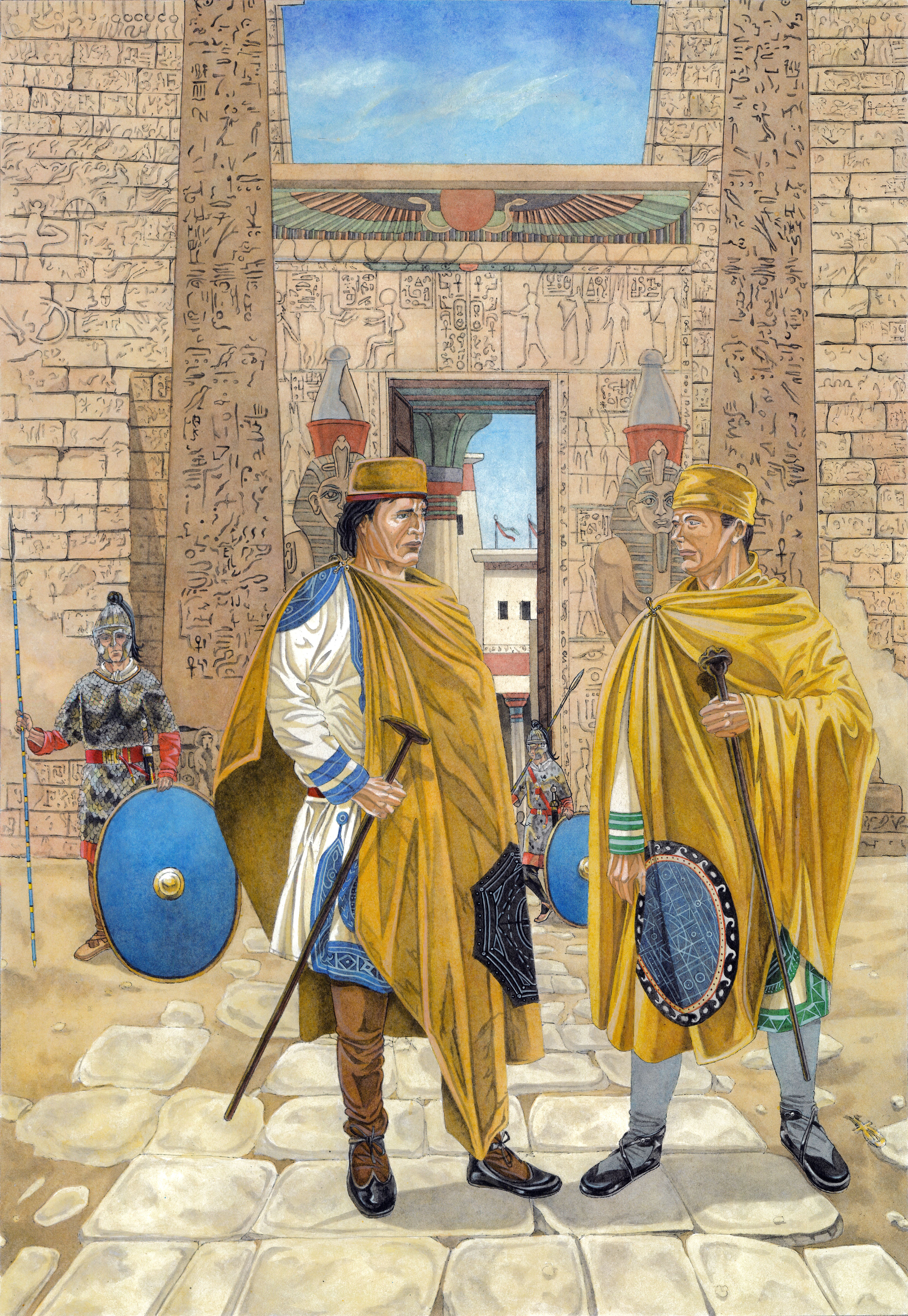
It was also in 642 when Valentinus married off his daughter Fausta to Constans, and though it was not recorded how old Fausta was, in this story’s case she would be 2 years older than Constans, and as for Valentinus he was appointed as commander of the armies or Magister Militum which was still in use but would soon no longer be, and being only regent and not co-emperor, he was still allowed to wear the imperial purple. In 643, with news of the Arabs attacking Eastern Asia Minor, Valentinus with an army was sent to deal with them while also in this year, the young Constans II would score a great achievement, not only in military matters but in diplomacy, and here is when he would send Byzantine ambassadors far away to the court of the Tang Empire of China itself. There are not much sources on Constans II’s embassy to Tang China, but it is said that it happened here in the year 643, though it is not said who exactly young Constans II sent to China, but in this fan fiction story’s case, the two ambassadors sent all the way there were 2 senators from the patrician class named Alexios which was the older one and Philippikos the younger one with 2 other attendants- as an illustration of the imperial court of China with them in it depicts- who would travel for a year or more, and considering the Sassanid Empire at this point was already in ruins and the Arab Caliphate having not yet reached Central Asia, their journey would be easier.

Despite the distance of China, then known as Seres to the Romans (Byzantines), Constans II knew something about it considering that the Byzantine silk industry was something taken from China when a century ago if you remember from the previous chapter, monks that journeyed there smuggled Chinese silkworms presenting them to the emperor Justinian I also reporting to him how they made their silks there, and after stealing the Chinese state secret, the Byzantines were true enough able to develop top quality silk just as the Chinese did, which was true enough indeed able to once again revive their economy that was ruined by the plague. Apparently, the Old Book of Tang as well as the New Book of Tang from China in this era records an embassy from the Roman (Byzantine) Empire in 643 by Constans II (referred to by the Chinese as King Buduoli) and his empire as Fulin, although even before this, the Roman Empire and China have long been aware of each other. The gifts Alexios and Philippikos brought over to the Chinese Empire’s capital of Chang’an in behalf of Constans II included red glass and green gemstones, though it is not clear what their intention was, but in this story’s case I would say these ambassadors came to Tang China asking their emperor Taizong for some military alliance and funds against the expanding Arabs.

Back in Byzantium in 643, a rebellion in Italy rose up against Constans II, this one here was in Rome led by its military commander or Dux Maurikios Chartoularios (his name literally the Greek translation of Maurice) and here he wanted to rule Rome as his own state independent from the Byzantine Exarchate of Ravenna, but the Exarch of Ravenna here which was Isaac soon enough got word about this, thus sending an army to Rome which successfully captured Maurikios, executing him in Ravenna. Meanwhile, Valentinus and his army suffered a defeat to the Arabs in Asia Minor and Valentinus wanting to regain his relevance after this defeat marched back to Constantinople demanding the throne and for Constans II to be deposed. As Valentinus and his army amassed outside Constantinople in 644 now turning on Constans II, the people persuaded by Patriarch Paul II backed Constans II as he was seen as the legitimate ruler, therefore turning on Valentinus who was later killed by the mob as they rushed out of the gates, thus leaving Constans II here at only 14 as the sole ruler of the empire without a regent. Historical sources though do not mention what Constans II’s mother Gregoria had been doing here or his wife Fausta, but let’s just say here that Gregoria refused to run the empire leaving everything behind to her young son, who here would lose his childhood and teenage years plain and simple by having to face the burden of ruling an empire. On the other hand, the Byzantine Christian people of the lands of Syria and Palestine which the Arabs had conquered were actually fine with being under the Arabs and not demanding the Byzantines to reclaim their lands as the Arabs proved to be tolerant rulers that were easy on taxation, therefore no need for rebelling against them. Although in Arab occupied Egypt, things were much different there as there the Arab overlords were harsher in taxation and less tolerant in allowing the Christians there to practice their faith which led the people to rebel wanting Byzantine rule to be restored. Just as the people of Egypt started rising up against their new Arab overlords, a Byzantine fleet from Constantinople with an army on board under the command of the admiral Manuel was to set sail for Egypt to liberate at least Alexandria from the Arabs. In 645, Manuel and his forces captured and occupied Alexandria putting it back again under Byzantine rule using the absence of its Arab governor Amr ibn al-As to his advantage as the governor was recalled to Medina, the Rashidun Caliphate’s capital as here they had a new caliph which was Uthman, another of Muhammad’s followers who had succeeded Omar following Omar’s death in 644.

Manuel was seen in Alexandria as their liberator and savior but in 646, the Arab governor Amr arrived back in Egypt, and to the surprise of the Byzantines the Arabs returned with a full fleet as apparently, in the previous years with the Arabs having captured the Levant (Syria and Palestine), they had been able to amass a fleet capturing old Byzantine ships and get the locals of the area to sail the fleet for them and so here in 646, the Arab fleet defeated the Byzantine fleet and took back Alexandria together with the rest of Egypt while Manuel returned to Byzantine territory, never to be heard from again. This event here in 646 marked the end of Byzantine rule in Egypt which was to be certainly a heavy blow to the empire as the major grain supply was lost, but not all of it as the empire still had Carthage which produced a major amount of grain, but losing Egypt too meant allowing the Arabs to take over more ports which then blocked off the Byzantines’ trade with the Red Sea and Indian Ocean, and when losing Egypt here in 646, the Byzantines now would never have hopes in taking it back anymore. Prior to the complete fall of Byzantine Egypt in 646, when the Arabs under Amr ibn al-As occupied Alexandria back in 642, Amr had the walls of Alexandria razed and here legends says, he had the ancient and highly important Library of Alexandria burned down together with all the books and knowledge kept in it but really, when he occupied Alexandria, the library was already rundown ever since the late 4th century when fanatical Christian mobs ransacked the library wanting to get rid of ancient Pagan knowledge. The truth however was that the Arabs did not want the metropolis of Alexandria as their capital, instead they would rather have a location along the desert and not by the sea as this was the life they were used to coming from the Arabian deserts, and so back in 642 Amr turned the village of Fustat deeper down the Nile River and closer to the Egyptian Desert as the new provincial capital, which would later on become the city of Cairo.
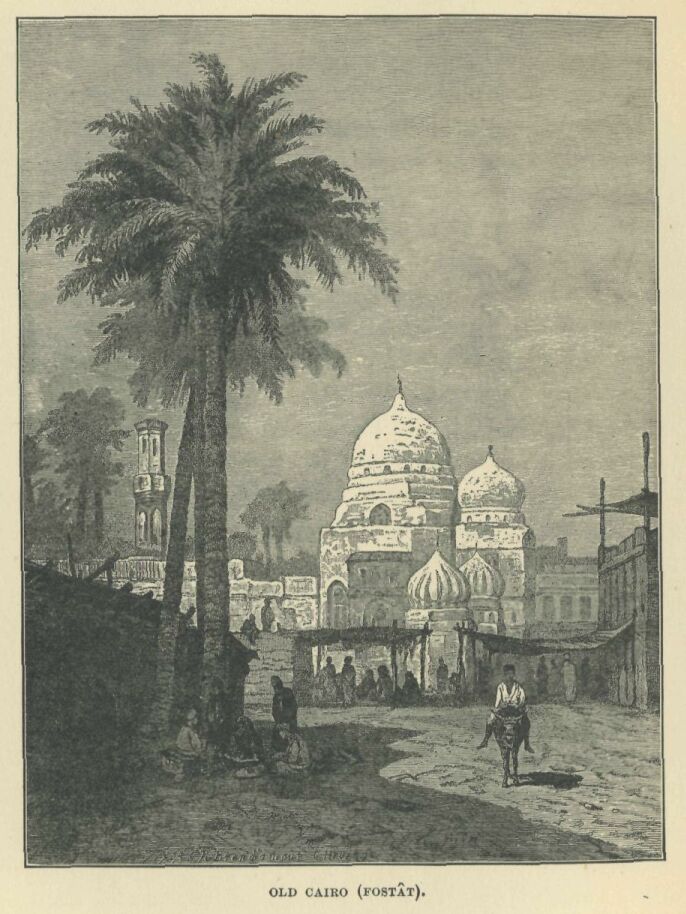
Fast-forward to 646, now that the Arabs had all of Egypt with Cairo as their capital, they decided next to turn west and conquer the Byzantine Maghreb (Northwest Africa) including Carthage while at the same time in Carthage, the Exarch of Africa Gregory who was a relative of the ruling Heraclian Dynasty, and therefore of Constans II rebelled and declared himself emperor feeling Constans was too underaged, but the Arab armies having the ability to cross a desert without difficulty crossed the Sahara Desert from Egypt arriving near Carthage in 647 forcing Gregory to have to confront them in battle. Being as far west as Carthage, Exarch Gregory did not know that much about how powerful the Arabs were in battle until confronting them and right here, Gregory was killed at the Battle of Sufetula near Carthage against the Arabs and so was almost his entire army, therefore ending his rebellion. Though the Arabs defeated the Byzantines here in North Africa and made raids into it, North Africa did not yet fall to the Arabs as the Byzantine authorities of Carthage agreed to pay tribute to the Arabs, now making the Exarchate of Carthage a vassal state to the Arab Rashidun Caliphate. It also happened in 647 that the Arab armies from the east now having occupied most of the Sassanid Empire started raiding deeper into Byzantine Asia Minor into regions such as Cappadocia, Cilicia, and the mountains of Isauria, and these attacks were being directed by the Arab governor of Syria Muawiyah, a native of the Arabian Desert coming from the Umayyad clan, meaning he was not part of Muhammad’s clan and before Muhammad united Arabia, Muawiyah and his family opposed Muhammad until Muhammad recaptured Mecca in 629 wherein Muawiyah switched his support to Muhammad, converted to Islam, and became Muhammad’s scribe and in 639 following the Arab conquest of Syria, Muawiyah was appointed as its governor by Caliph Omar and to be based in Damascus, and he had turned out to be a very ambitious leader with the ultimate goal of conquering Constantinople.
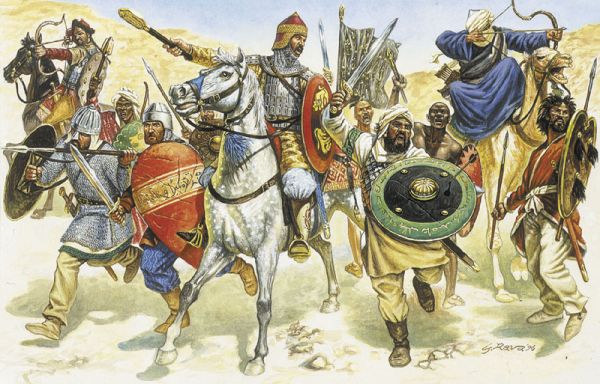

Watch this to learn more about the Battle of Sufetula, 647 (Kings and Generals).
As the Arabs directed by Muawiyah continued their raids into Byzantine territory in 648 wherein they had reached as far west as Phrygia in Asia Minor, Constans II knew it was to time to act in defending the empire and this meant not repeating the past mistakes of emperors which even included his grandfather Heraclius who busied himself too much with creating the new doctrine of Monothelitism and trying to consolidate it across the empire while the Arabs were winning victories against them, so Constans here decided it was time to put all the endless religious debates on the natures of Christ aside as there was an even bigger threat, the Arab expansion.

To solve the entire issue of the religious debates, Constans here in 648 with Patriarch Paul II’s guidance issued a decree known as the Typos that forbade any kind of debates on the natures of Christ that was tearing the religious unity of the empire apart at such a difficult time, but it was to also to stop the persecutions of heretical sects of Christianity that were not seen as Orthodox, though what this decree actually meant was absolutely no more debating on Christ’s natures, and what was already ruled by the Patriarch of Constantinople on Christ’s nature which here was the Monothelite doctrine of Christ having one energy was final, and those who did not abide by this would get their property confiscated or worse, be jailed. Here at age 18, Constans had already shown the full autocratic nature of his reign and how much he had despised the Byzantine senate even if they were the ones that put him in power as a child and had been acting as his regents as he was still quite young, but here at this point even being only 18, Constans already showed to the senate he was capable of ruling alone with absolute power and did not need them at all. By issuing a decree that was to prohibit all religious debates on Christ’s natures, Constans had now become increasingly unpopular with most of the bishops of the empire- except Patriarch Paul II- as it was the bishops’ job to debate on religious matters and these bishops included the Patriarch of Rome or the pope himself, which in 649 was Pope Martin I who had just been elected as pope, though illegally according to Constans II, and just as he was elected as pope, Martin I called for a council in Rome to condemn Constans II’s ruling of the Monothelite doctrine and the Typos itself as it did not allow religious leaders to do their job.
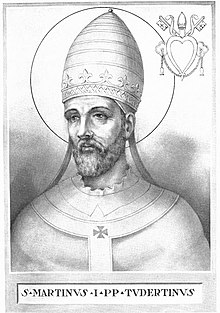
Meanwhile in 649, Muawiyah had already been making some progress as here he had landed in Byzantine controlled Cyprus partially taking the island leaving the other half still to the Byzantines, and for the next 300 years, the island of Cyprus would remain split between Arab and Byzantine control. Constans here when finding out half of Cyprus was lost to the Arabs, he decided to sign a peace treaty with Muawiyah and the Rashidun Caliphate but little did he know that by signing this, this would allow Muawiyah to build his fleet as his intention to capture Cyprus was to build a fleet there that could attack Constantinople by sea. In 650 on the other hand, Constans II now decided to take action on Pope Martin I for violating the decree of the Typos by holding a council that spoke against the decree and for Constans, it did not matter who violated this decree, even if it was the pope, and so here Constans sent a letter to the reigning Exarch of Ravenna in Italy Olympius ordering him to head over to Rome and arrest the pope who was to be brought over to Constans himself in Constantinople. Exarch Olympius then carried out the job and headed to Rome but when there, he failed to arrest the pope as he claimed the pope was too divinely protected as most possibly, Pope Martin successfully convinced him to turn away. Now rather than arresting the pope, Olympius in 650 instead turned on Constans, led his soldiers in rebellion, and declared himself emperor ruling Byzantine Italy as his own state completely independent from the empire. Soon enough, a small Arab army and fleet arrived in Sicily to raid it and here Exarch Olympius headed south to Sicily to counter-attack the Arab force that invaded it but in 652 as Olympius was in Sicily, another episode of the Plague of Justinian from the previous century had broken out killing many there including Olympius himself, as well as most of the invading Arab army, thus the Arab invasion failed. In the meantime, it happened in 651 when the Sassanid Empire completely died out and not with a big event like a large battle, instead the Sassanid Persian Empire only died out here when its last ruler Yazdegerd III at age 27 when continuing his flight east to escape the Arab invasion of the Sassanid Empire was killed outside the city of Merv in the Steppes of Central Asia at the edge of their empire.
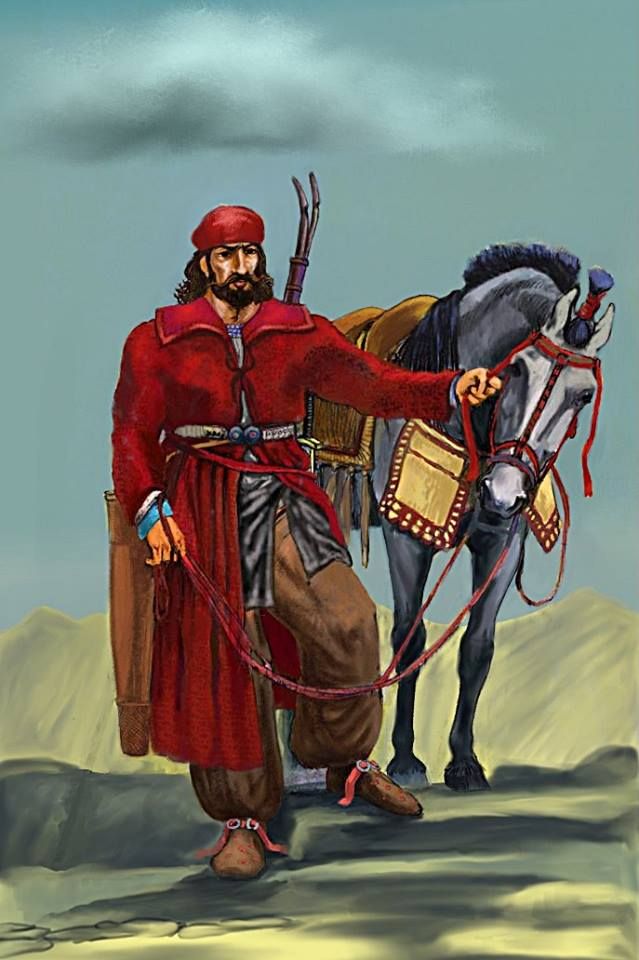
It remains unclear on how Shah Yazdegerd III had been killed but some sources say a simple miller killed him to take his jewellery but no matter what was the cause of his death, his death marked the end of the Sassanid Empire that just recently was a dominant world power having been around for 4 centuries since the 3rd century, and with the Sassanids gone after years of civil war and defeats to the Arabs, it was now time for the Arab Caliphate to replace the Sassanids as Byzantium’s new traditional eastern enemy. Though the last Sassanid emperor had died when actually trying to flee east to the Tang Empire of China, he at least had a wife who though unnamed was said to be a Christian and with her they had a young son named Peroz who was also a Christian and not a Zoroastrian like his father, and young Peroz and his mother would at least survive and make it to China, their final destination to seek refuge in.
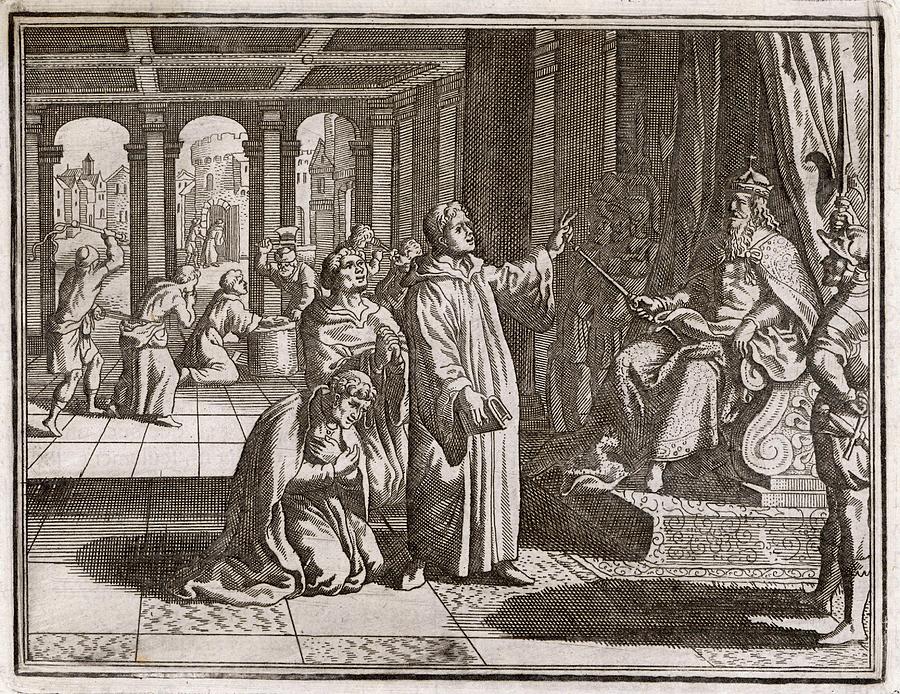
Hearing about the final dissolution of the Sassanid Empire in 651 was not so much a relief for Constans II as all while hearing of this happening, he knew the empire of the Arabs would grow even larger and true enough with Sassanid authority crumbling in their last province of Khorasan (Central Asia), the Arabs were able to also take this entire area, thus wiping the Sassanid Empire out of the map. Now it is about time to discuss a bit about Constans II’s life as an emperor at a young age and his family, and here Constans was now in his 20s but with all the difficulties he faced in his teenage years, he had aged very fast both in looks and in mentality, but this meant that his bitter nature and autocratic style of ruling would increase even more.
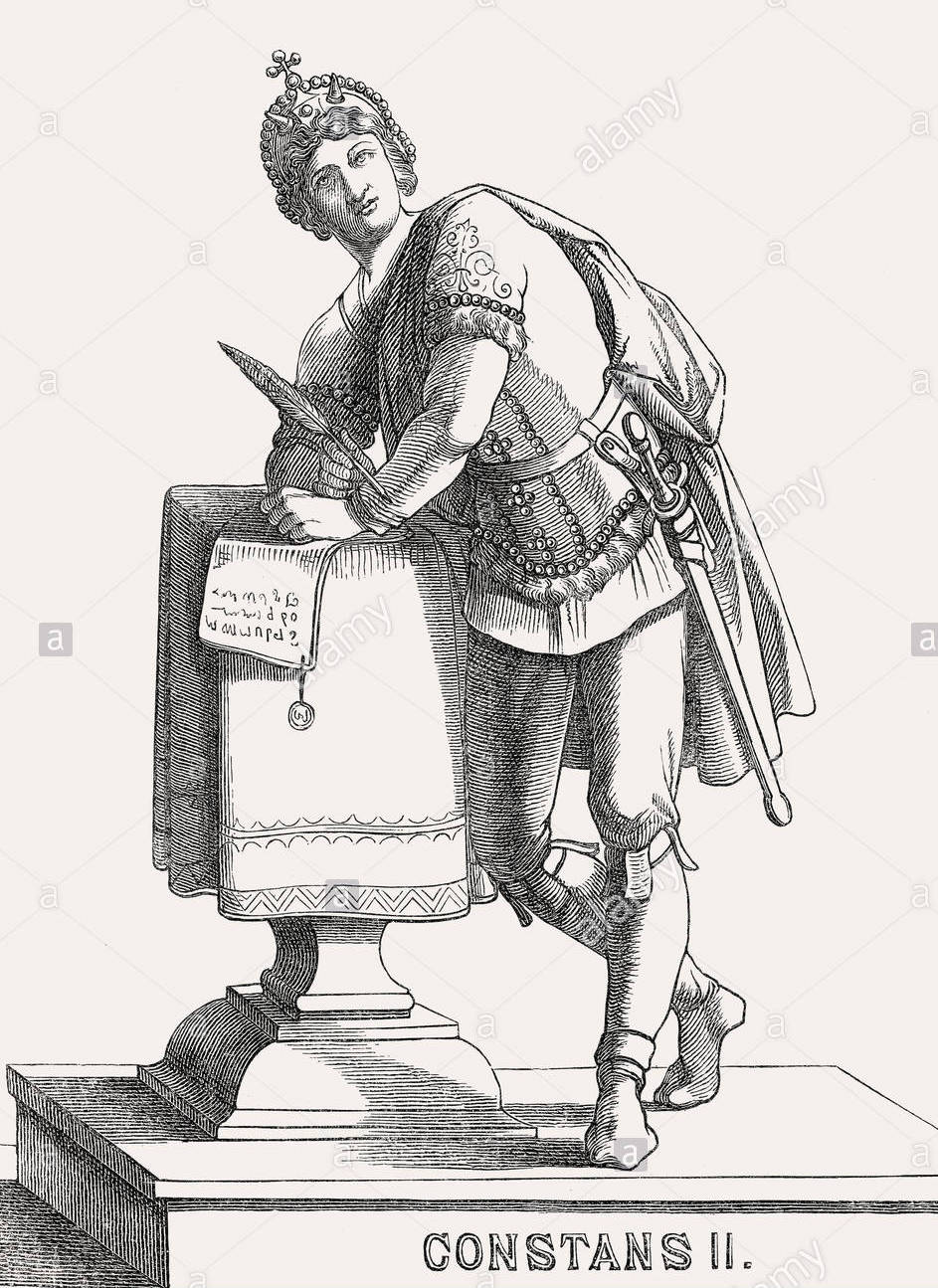
Historical sources though do not say much about Constans II’s twin brother Theodosius but in this case, let’s just say that now at this point, Constans was growing more suspicious of him even though Theodosius was rather useless and had no potential to be a serious threat, but for Constans- at least in this story’s case- having a twin brother meant potential trouble and even though Theodosius was not really seen as a threat, one day he could be when his soldiers might mistake Theodosius as Constans considering that they looked very much alike even if not identical twins and with this, they could even start calling Theodosius their emperor, forgetting Constans is still around, or possibly Theodosius would one day rebel and take the throne with the excuse that it does not matter who is emperor as both are twins and no one would really be sure who was born first. Historical sources too do not mention about the happenings with Constans’ mother Gregoria at this point, so for this story’s case we could just say Gregoria had retired and had completely left the world of politics, though other than Gregoria, historical sources do not also mention much about Constans’ wife the empress Fausta except that here in 652 she gave birth to her first child with Constans and sticking to the naming tradition of the eldest son named after his grandfather- just how Constans with Heraclius as his real name was named after his grandfather- Constans’ first son was named Constantine after Constans’ father Constantine III, and this Constantine would be the emperor Constantine IV. Now about Fausta who historical sources do not say much about, in this story’s case as mentioned earlier, she was 2 years older than her husband and of Armenian descent as her father, the late general Valentinus was an Armenian, though her mother remains unknown, though in appearance Fausta- in this story’s case- had a strong Armenian or eastern look with large piercing green eyes, tanned skin, black hair, and a short and round stature. In the meantime, Constans II was still not yet finished with his plan to arrest Pope Martin I for disagreeing with his decree, so here in 653 with the previous exarch of Ravenna Olympius dying the previous year from the plague in Sicily, the new Exarch of Ravenna Theodore I Calliopas– who had already previously been Exarch of Ravenna from 643 to 645- was again reappointed by Constans and following his appointment was charged by Constans to again head over to Rome and arrest the pope. This time, Exarch Theodore succeeded in arresting Pope Martin I by sending his soldiers to the pope’s palace at the Lateran Basilica who tricked him into shipping him over to the Greek island of Naxos in the Aegean Sea where the pope when arriving there was thrown into prison, while back in Rome Theodore convinced the Roman bishops to elect someone else as their pope which they did by electing Pope Eugene I in the next year (654).

Later on in 653, Martin I was brought over from Naxos to Constantinople where he was paraded in the streets in chains like a prisoner before confronting Constans II at the Hippodrome who sentenced him to be executed for opposing the emperor’s Monothelite decree as well as being elected illegally, although for Constans Martin I was accused of being elected illegally meant that he was elected without the emperor’s approval. Right when Constans was about to have the deposed pope executed, the dying Patriarch of Constantinople Paul II came to the pope’s rescue and when listening to Martin’s pleas, Paul convinced Constans to not execute Martin but to instead send him to exile in the most remote land of the Byzantine Empire, which was the isolated Peninsula of Cherson or the Crimea (in today’s Ukraine), a cold and desolate Byzantine port colony in the north coast of the Black Sea, as exiling the pope to a warm Aegean or Ionian island would be sending him to exile in some kind of island paradise while sending him to cold Cherson would be a fitting death sentence. As it would turn out, when Pope Martin I was sent into exile in Cherson, he would die soon enough in 655 at age 57, possibly due to the cold and lack of food there but he would still become a saint after his death, whereas Patriarch Paul II would die in late 653.

On the other hand, Muawiyah here continued his conquests of the Mediterranean islands that in 654, he had conquered the Greek island of Kos and afterwards Rhodes, and when in Rhodes the first thing the Arab army did was to clear out the ruins of the famous Colossus of Rhodes, a massive statue of the Greek sun god Helios build in 280BC standing 30m high but over time after several earthquakes, the statue was reduced to ruins, and though some legends say Mauwiyah and his army tore down the Colossus itself, rather when the Arabs arrived, they found it ruins and decided to scrap it to be made into gold coins, and when taking down the ruins, it was said that the Arabs used up to 900 camels to cart off the ruined blocks as the statue was literally that large and the metal that it was made of was that heavy. Hearing of the fall of Rhodes to the Arabs, Constans now felt threatened and decided he had enough and so he put an end to the truce he signed with Muawiyah back in 649 and assembled a fleet in Constantinople to attack Muawiyah’s fleet which had at this point been stationed in the southwestern coast of Asia Minor while at the same time here in 654, he appointed his 2-year-old son Constantine as co-emperor. The Byzantine fleet of 500 ships was fully constructed by 655- the same year Pope Martin I died in Cherson- and the 25-year-old Constans II here decided to lead the fleet himself assuring they would score a victory that way and so the fleet sailed south to the Lycian coast of Asia Minor where Muawiyah’s fleet was stationed. On the night before the battle, Constans II when sleeping in his luxurious cabin in the emperor’s personal ship- according to the Byzantine historian of the next century Theophanes the Confessor– and in this story’s case as well, he had a dream that he was in the city of Thessaloniki and when waking up, he thought this meant he would win a victory as Thessaloniki in Greek meant something to do with scoring a victory, but little did he know that the “Thessaloniki” of his dream meant the other definition of the name which in Greek was thes allo nike meaning “give victory to another”. The next day, the Byzantine and Arab fleets met at a location known as Finike (Phoenix) off the Lycian coast of Asia Minor and here as the sea was rough the battle was fought, and this battle here would be remembered as the “Battle of the Masts”, referring to the masts of the ships.
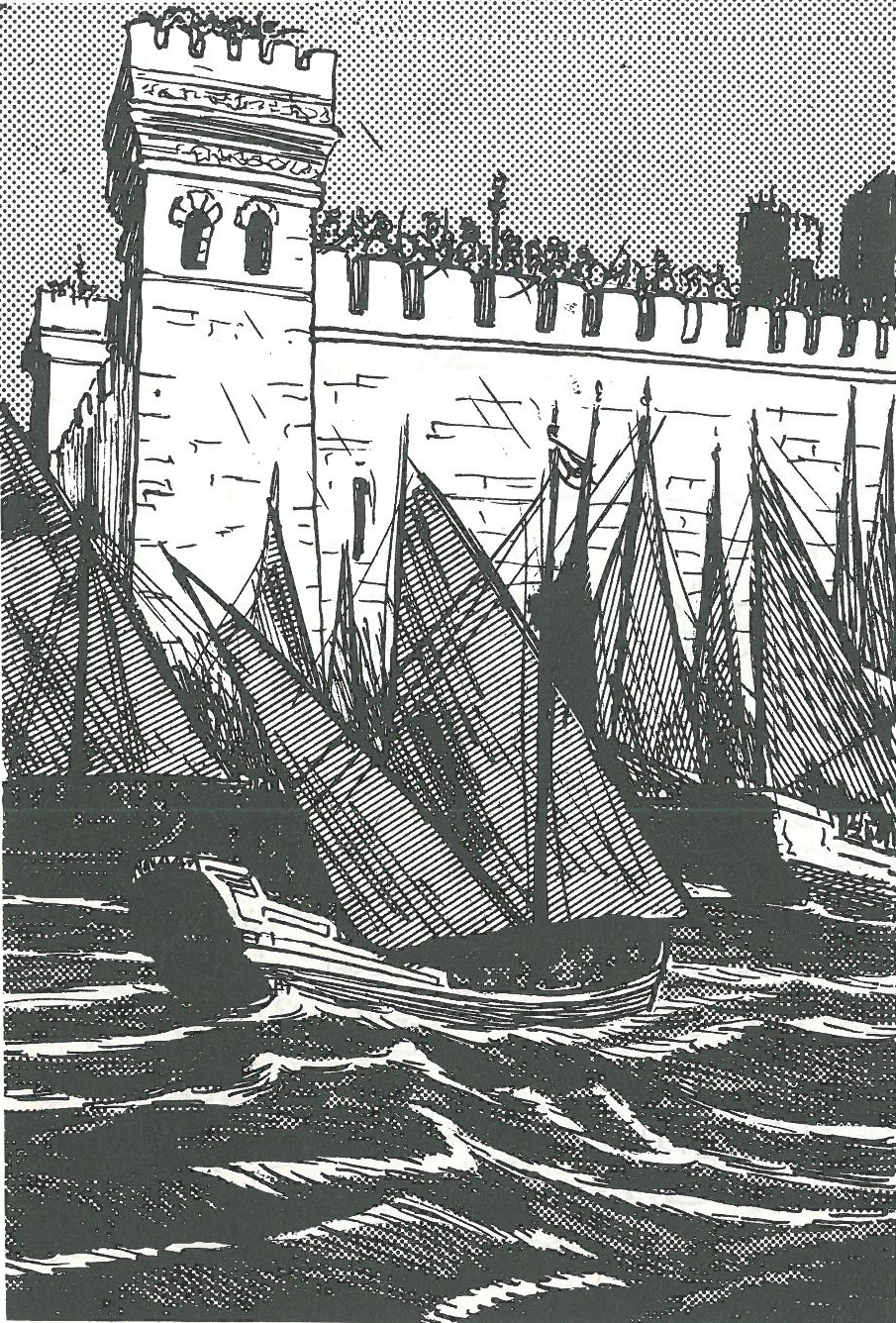
The battle resulted in a decisive victory for the Arabs despite them having only 200 ships compared to the Byzantines having 500, and although it is not clear on how the Arabs won, in this story’s case the Arab ships being smaller in size were faster thus being able to quickly crash into the larger Byzantine ships, which they quickly boarded, and were soon enough able to outnumber the more heavily armored Byzantine troops in them. Constans himself barely escaped the battle, that according to the same Theophanes, and in this story’s case too, he did a trick he was good at, so he exchanged his purple imperial robes with a young sailor who was about the same age and short stature as him, and while Constans escaped disguising himself as a sailor, the sailor dressed as the emperor was mistaken for Constans and was killed right at the spot by an Arab soldier whereas Constans retreated back to Constantinople in a small ship that had survived. As it turned out, Constans’ dream meant the opposite of what he thought it meant, therefore meaning “give victory to another” which were the Arabs but the following year (656), the Byzantines would have at least some luck as here when Caliph Uthman was assassinated in Medina, conflict broke out between the ambitious Muawiyah of the Umayyad clan and Uthman’s successor Caliph Ali, the son-in-law of Muhammad and this conflict would be the first full civil war in this history of the Islamic Caliphates, better known as the First Fitnah.




Birth of the Thematic System and the Move West (656-668)

With the Arab Caliphate at a civil war with each other, Constans II now used the moment to his advantage in order to focus on restoring some parts of the empire that had been ruined by the previous wars and invasions, and these included the Balkans and Eastern Asia Minor while Muawiyah who was here in conflict with the caliph Ali agreed to not bother Constans and instead to even pay tribute to him.

Now focusing on the problems of the empire, the first thing Constans thought about was the economy considering that the loss of Egypt had a heavy blow on the once abundant grain supply for Constantinople and the empire that before it happened once a month that this abundant grain supply from Egypt allowed people in the capital to get free distribution of bread, but with Egypt gone free bread was no longer possible. Although the second grain source which was Carthage was still around and fortunately for the Byzantines, after the civil war between Muawiyah and Ali broke out, the Exarchate of Africa based in Carthage which had become a vassal of the Caliphate since 647 was fully restored to imperial rule, although unfortunately the land around Carthage had already been drying up turning into a desert from over-farming, so the next place the Byzantines looked to for grain supply was Thrace and Asia Minor, although the grain supply in these places weren’t as abundant as Egypt, therefore there would be no more free grain distribution for the people of Constantinople. The next major challenge in the Byzantine Empire other than the economy was the cultural shift from Latin to Greek which was now truly evident in Constans’ time than it was in his grandfather Heraclius’ time, as here the Greek language had almost entirely replaced Latin amongst the people of the empire and in the imperial court, as well as in the army that Latin titles had now been evolving to Greek ones, which was evident even in the imperial court as the emperor was now referred to as the Greek “Basileus” meaning emperor instead of Augustus, or the Greek title Autokrator instead of the Latin Imperator, and a lot of these changes in the Greek language becoming the more dominant one had a lot to do with Heraclius’ reign as he was a native Greek speaker of Cappadocian and Armenian descent, meaning he had more connections to the east while the people he appointed to govern the empire were also native Greek speakers from the eastern provinces unlike before when most high officials of the empire were Latin speakers from the Balkans or western provinces. Constans meanwhile was adapting to the changes in the empire both in geography and in language as well culture quite well, but he was still feeling some kind of connection to the west and the empire’s Roman roots- at least for this story- and here in 658 with the conflict against the Arabs in the east at least put to a halt for now, he decided to turn his attention west to the Balkans which was now completely overrun and settled by the Slavs who were left behind there by their Avar allies who retreated back north sometime after they failed to besiege Constantinople in 626. The loss of the Balkans meanwhile was a heavy blow to the Byzantines as for the longest time, all the way back to the era of the Roman Empire, the Balkans played a major role as the major recruitment ground for soldiers, so now with the Balkans gone, this would mean shortage of soldiers, but again with the pressure of the Arabs coming to a halt here in 658, Constans set off from Constantinople to campaign in the still Byzantine territories of the Balkans.

Here, Constans managed to win a number of victories against the Slavs by defeating a large Slavic raid, and afterwards returned some of Greece to Byzantine rule and after defeating these invading Slavs, his army had captured many prisoners of war which were Slavic warriors, who were then all stuffed into ships and sent over across the Aegean Sea to Asia Minor to be resettled in as the previous wars against the Sassanids and Arabs have resulted in the near depopulation of Asia Minor. In 659, Constans briefly returned to Constantinople to be with his family as by this point his wife Fausta had given birth to two new sons Heraclius and Tiberius, although history does not specify their birth years, so instead for this story Heraclius as the elder one would have been born in 656 and Tiberius in 657, and here in 659 Constans back in Constantinople appointed both sons Heraclius and Tiberius as co-emperors even if they were too young to read and write, and so now there were 4 people with the imperial title being Constans II and his 3 sons, and this for sure would have made Constans’ twin brother Theodosius feel threatened as he was put aside in favor of Constans’ very young sons, but Constans on the other hand never really cared as he always saw that having a twin was a threat, so here Constans began his plans in eliminating his twin brother. After his short stay in Constantinople, Constans travelled to Asia Minor, this time to drive back the Arab forces that had still remained, and due to the Arab Caliphate in conflict with each other, Constans took advantage of the situation and when leading the army himself, he campaigned far into the east of Asia Minor successfully driving away the Arabs. It was in this 659 campaign in Asia Minor where Constans would make his greatest achievement in the history of Byzantium, which was the creation of the Thematic Systems or to put it short, the Themes (Themata in Greek), and this was another change that marked the transition of the empire from Latin to Greek as the names of these new smaller provinces or Themes would be in Greek. History though is not very clear about the formation of the Theme System or if Constans II exactly created it, as others say it was his grandfather Heraclius that did, but many sources still agree that the first 5 Themes or shrunken military provinces of the Byzantine Empire were created under Constans II between 659 and 661, and in this story’s case it will true enough be Constans II that toured Asia Minor between 659 and 661 to create the Thematic System.

The word “Theme” here does not really have a literal translation but it simply meant the name of a particular area bearing the name of the mobile army that was stationed in it, as each of these new provinces had their own mobile armies assigned to it, and these provinces too were under the administration of their army’s general known as the Strategos, basically a Greek title which replaced the former Latin Magister Militum. Now in these new provinces or Themes of Asia Minor, the soldiers stationed in them were given land of their own in which their children would inherit as well as succeed their fathers as soldiers as a way to ensure their full loyalty as the empire was sure enough running out of soldier recruits with most of the Balkans lost and the remnants of the Plague of Justinian from the previous century still making comebacks. On the other hand, the Slavic warriors that were previously captured in the Balkans were relocated to Asia Minor to be settled as the soldiers for these Themes wherein here they were to marry the locals, though at the same time Constans still encouraged many of the local men of Asia Minor to join the army and had many of the ruined castles of Asia Minor rebuilt as well, which were to be the strongholds for each of the Themes’ armies. It was here at this point that Asia Minor became the Byzantine Empire’s new heartland as it was to now provide both soldiers and food supply for the empire and with the creation of these new provinces or Themes, each of the Themes were to produce their own goods for the empire’s survival whether it was minerals, food, wood, or military equipment while each Theme too had its own foundry to manufacture its soldiers’ uniform weapons and armor.

Under Constans II, 4 Themes were created in Byzantine Asia Minor (Turkey) with their own generals in charge of it and with its own capital, and these first 4 Themes were the Anatolic Theme (Anatolikon in Greek) consisting of the central and southern part of Asia Minor in which the eastern army of the empire was stationed in and the city of Amorion was its capital; next was the Armeniac Theme (Armeniakon) which was the largest of the Themes being located in the eastern part of Asia Minor along the border with the city of Amasea as its capital; next was the Thracesian Theme (Thrakesion) in the western coast of Asia Minor where the Thracian army would be based in, hence the origin of its name; and last would be the Opsikion Theme in the northwest part of Asia Minor which here was to be administered directly from Constantinople, and this Theme would be under the most elite army of the empire or the Praesental army commanded not by a Strategos but by a general with the title of Komes, which was an honorary title for a general. After creating the 4 land Themes in Asia Minor, Constans decided to create a fifth one which was this time to be a naval Theme under the imperial navy and marines which was to be the Karabasian Theme (Kibyrrhaioton) in the southern coast of Asia Minor to further protect the Aegean and Mediterranean coasts of Asia Minor. The first known generals Constans II appointed to be in charge of these Themes included one of Sassanid Persian descent named Saborios, whose name is the Greek version of the Persian name Shapur who would be the Strategos of the Armeniac Theme and another one named Mizizios, an Armenian general who was made the Komes of the Opsikion Theme, the most elite of the Themes. Constans on the other hand before even hitting the age of 30 made a very strategic achievement for the empire that was to prove very effective in the next centuries to come, although still it was not entirely him who came up with the idea of these Themes from scratch but rather his grandfather Heraclius when he saw the provinces of Syria and Palestine lost to the Arabs and Asia Minor as the new core of the empire, though it would be Constans II to put this whole idea into full effect. There is a lot more to explain about the Themes of Byzantium, the Thematic System and how it functioned, and its elite armies being the Cataphract cavalry but that would be for the upcoming stories after this one, but to put it short, it was effective in the way that when both parts of the empire were under attack, one Theme’s army could focus on one side while the other could focus on the other side without having to march an entire army from one far end of the empire to the other, therefore these Themes made it quicker for armies to respond to external attacks.

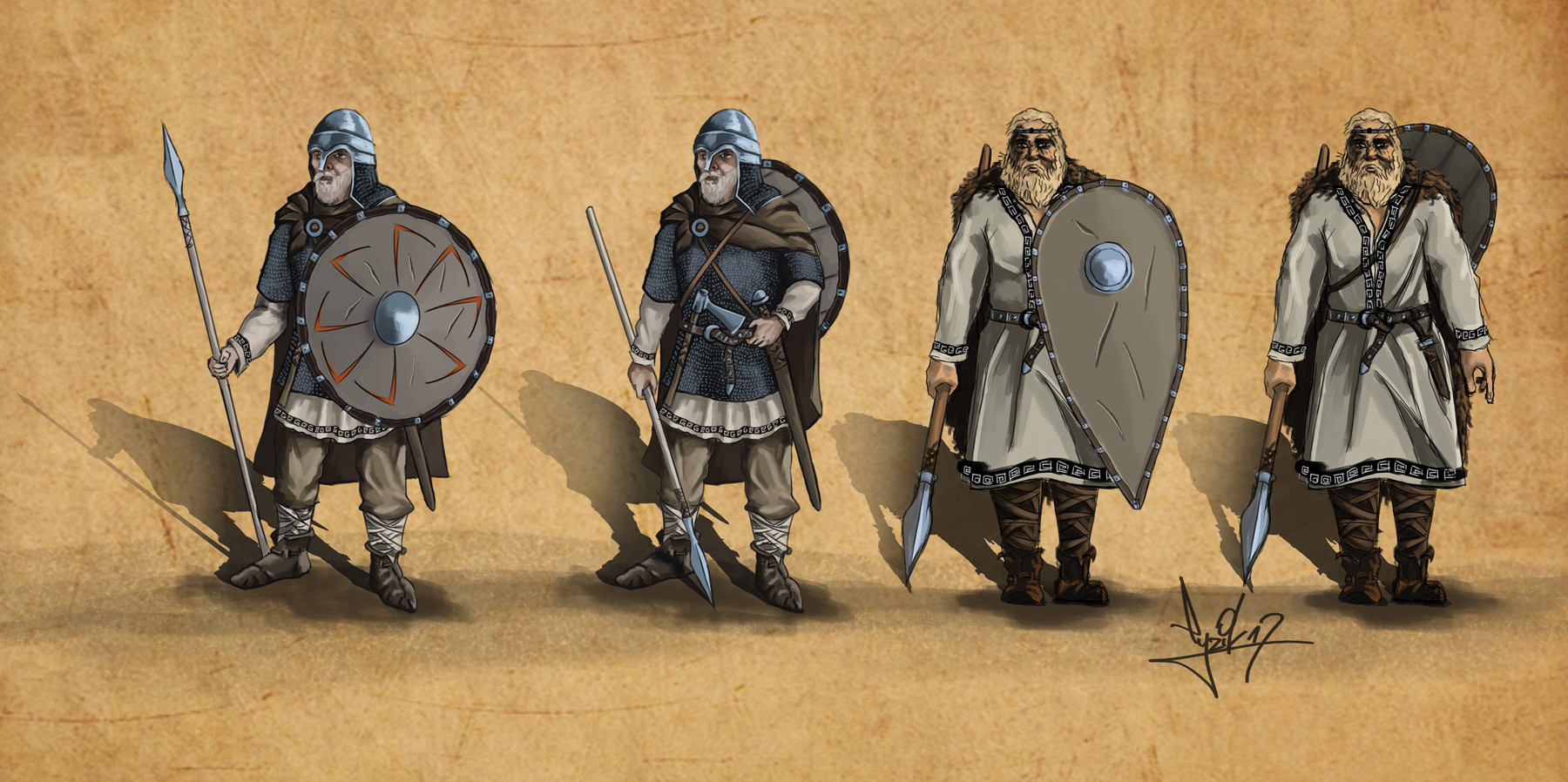
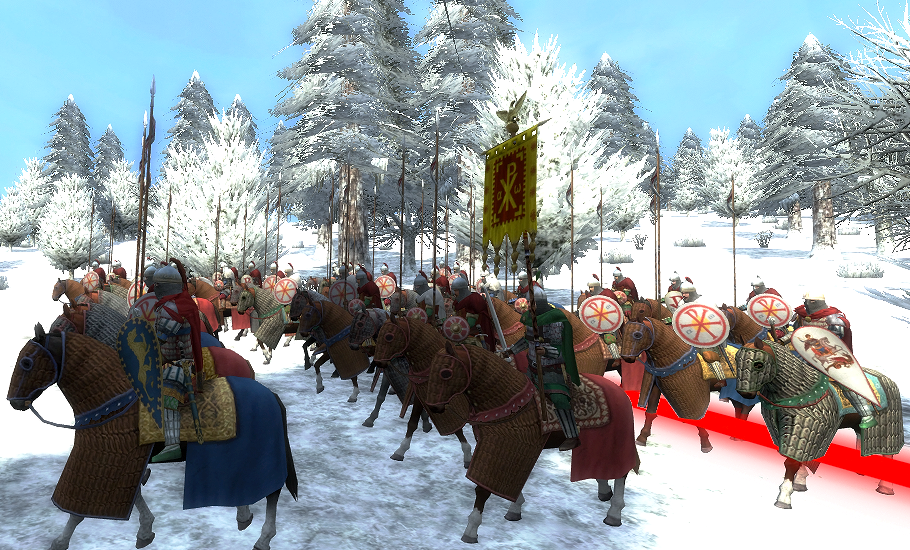
After being away from Constantinople for 2 years from 659 to 661, Constans returned to the capital wherein he started becoming increasingly unpopular and though it is not really said why, in this story’s case this would be mainly due to his defeat to the Arabs back in 655 at the Battle of the Masts and for being absent from the capital for 2 years despite doing the latter to actually further protect the empire by creating the Themes.
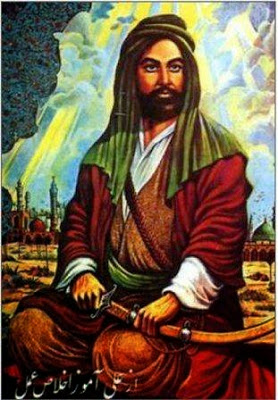
It also happened in 661 that the caliph Ali was assassinated in a mosque at the city of Kufa (in today’s Iraq) and with his death died the Rashidun Caliphate as with Ali dead, Muawiyah took over as Caliph ending the civil war and beginning the Umayyad Caliphate wherein he turned the Caliphate into something more politically organized and had also moved the caliphate’s capital from Medina in the Arabian Desert to Damascus in Syria which was more of a threat to the Byzantines as the Arabs’ capital was closer to their borders, although for the meantime, Muawiyah still organizing the new caliphate did not yet have plans to attack Byzantium, thus giving Constans more time to rebuild the ruins of his empire and put the Themes into full effect. Here in 661, Constans II at the age of 30 now had a full and thick square beard in his large round face, which was the first thing to be noticed about him as well as his thick and long curly hair as seen in his coin which too will be a new standard for future Byzantine emperors in appearance, henceforth his nickname Konstantinos ho Pogonatos meaning “Constantine the Bearded” in Greek as true enough he ruled by his real name “Constantine” while his family members and those closest to him still referred to him as the Latin “Constans” or “little Constantine” (Konstas in Greek). Now back to Constans’ growing unpopularity, the people here at this point in 661 started favoring Theodosius over his twin brother and considering that they almost looked a like, the people who hated Constans thought it would not hurt those who favored Constans if they deposed Constans and replaced him with Theodosius as long as Theodosius would grow a longer beard the way Constans has, therefore those who are loyal to Constans would still mistake him for Constans, however it would not really work out as Theodosius still did not have Constans’ brutal and autocratic personality whereas Theodosius was still more relaxed. For this story at least, Constans suspected something wrong about his twin, so let’s say the faction loyal to Constans soon enough knew of the plot by those who opposed him to overthrow him and replace him with Theodosius and so when finding out about this, Constans now knew this was the right time to act against his twin brother and get rid of him for good. History too does not say when Constans and Theodosius’ mother Gregoria died but let’s just say that here in 661 she had already died which now gave Constans every reason to get rid of his twin brother as he would most definitely not do it while their mother was still alive. Having enough of the possibility of Theodosius taking over the throne from him with popular support, Constans without any hesitation had some of the palace guards arrest Theodosius at his quarters in Constantinople’s imperial palace and cut off his tongue, again as a way to make sure he would not try to claim the throne, as again a single deformity like missing a tongue would render him unable to rule as emperor. Constans too thought of simply executing his twin brother but he soon started to think cutting off his tongue was a better punishment as Theodosius had still done nothing wrong that deserves the death penalty that in fact he never even once tried to launch a coup against Constans, and so after getting his tongue cut off, Theodosius was forced to take Holy Orders and become a monk in a monastery outside Constantinople, but little did Constans know that the injury Theodosius received when getting his tongue cut off cost him his life and later on in 661, Theodosius had died as a monk. Constans here would therefore be remembered as the “Bearded Autocrat” or “Constans the Killer” and this would not be it yet for his vicious deeds, although he was at least still very loyal to his wife Fausta and 3 sons but Fausta hearing about Constans’ vicious act that ended up killing his twin brother would soon begin to fall out with him. Each day- in this story’s case- Constans and Fausta would argue more and more that they would stop eating and sleeping together, while Fausta even tried to get her 3 sons Constantine, Heraclius, and Tiberius away from their father fearing that her sons would follow in their father’s footsteps becoming a bloodthirsty tyrant. Now in 662, Constans had grown tired of living in Constantinople being unpopular with the people and ignored by his family, so here is when he decided to leave the capital again and protect the empire, but here he also began to think about the rather short life he had lived so far, about how he had lost his childhood and teenage years when having to put it aside for the responsibilities of running an empire, about how the difficulties in his early reign of having to face challengers left and right turned him into a bloodthirsty autocratic ruler, and how this kind of personality of his turned his people and family against him. Constans here thought it was time to change his image which is why he decided to head to Greece and protect it as he got word that the Slavs were invading again, and here at this point, the Theme Systems was now more or less fully operational that if Constans pulled out one Theme’s army, the armies of the other Themes could defend that Theme wherein the army had been pulled out, and since the Opsikion Theme was closest to Constantinople with its troops being the elite retinue of the imperial army, he called for this Theme’s army to join him in this campaign. The Opsikion Theme’s general Komes Mizizios, the Armenian noble 8 years older than Constans who was said to be very tall and handsome but at the same time shy and reserved led his troops across the Marmara to meet Constans in Constantinople where he and his troops were to accompany the emperor in his new campaign.

Meanwhile- in this story’s case- the senators Constans sent to China almost 20 years earlier, Alexios and Philippikos had returned to Constantinople with Alexios who left Constantinople in his 40s was now in his 60s and Philippikos who was then in his 20s now in his 40s, and now when returning both reported to Constans about their fascinating journey in this far away land, about how sophisticated the imperial court was in their capital of Chang’an with buildings made with crystal and glass, about the colorful silks worn by its people that in fact even the poorest people there wore silks, and the exotic and tasty food there unknown to the Byzantines such as fisheye that was only reserved for the emperor.
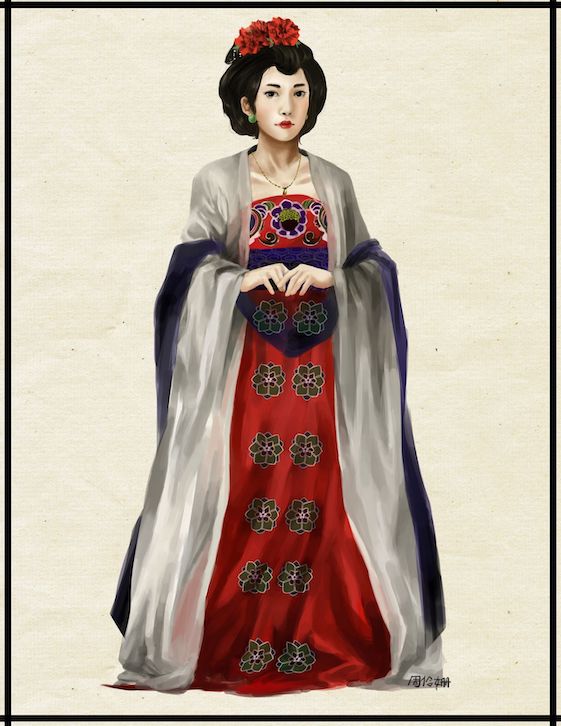
Additionally, the senators told Constans that in China, it were yellow and gold silks reserved only for members of the imperial family unlike in Byzantium where it was purple while there in Tang China, women too were more empowered than in Byzantium and that they were fascinated with the rather peculiar fashion women there wore such as the kind of silk gowns that appeared rather revealing wherein they left their upper chests exposed with only a thin silk robe covering the arms, which thus reflected the empowerment of women there. The senators then also told Constans that their emperor Taizong had agreed to lend them some money in exchange for Byzantine jewelry, although Taizong had already died back in 649 and was succeeded by his son Gaozong, who at this point was still ruling and Gaozong too had agreed to help Byzantium as he too feared the expansion of the Arabs even if it was still far from China. The senators too had told Constans that the last Sassanid heir which was the young Peroz, son of the last shah Yazdegerd III had arrived in China seeking refuge wherein at this point he had already grown up and had built a church there as he was true enough a Christian and there in Tang China, the young Peroz had been training to be a general to command the Chinese imperial forces to one day lead an attack against the Arabs in Central Asia. Constans was intrigued hearing of the stories from what he thought was a parallel world to Byzantium but not wanting to waste time, he asked both senators Alexios and Philippikos to join him in his campaign with Mizizios and the Opsikion army.
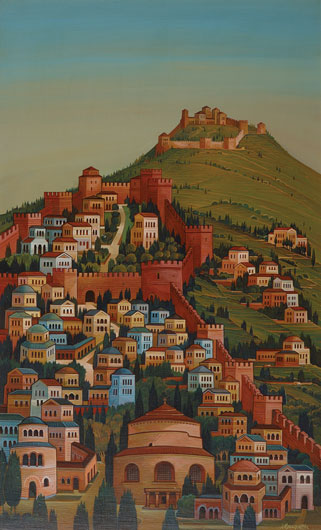
After setting off from Constantinople by sea, Constans and his retinue arrived first in Thessaloniki, where Constans having dreamt about being there back in 655 before losing the Battle of the Masts would finally step foot there, as true enough dreams usually do predict a future, and as he also remembered that the dream he dreamt meant for him scoring a victory, this time his predication actually came true as here in Thessaloniki, Constans himself leading the Opsikion Theme’s army fought the invading Slavic army with success driving them away from the walls of Thessaloniki. For the rest of 662, Constans together with the Opsikion army, Alexios, and Philippikos for a long time toured the remains of Byzantine Greece as Constans needed this lengthy amount of time to examine the situation in Greece, for he also thought of expanding the Themes beyond Asia Minor by establishing one in Greece too but in his long stay in Greece, Constans recruited more men to the Byzantine army as well which also included the Slavs he had defeated in battle and captured. For the winter of 662-663, Constans set himself up in Athens which at this time was now a ghost town wherein he would start drafting new plans for creating Themes in Greece but by early 663, Constans had now decided to leave Greece and set sail west for Byzantine Italy whereas Mizizios and the Opsikion army, Alexios, and Philippikos joined him once more.



In 663, Constans and his men set sail from Athens to Italy arriving some weeks later in the port of Taranto in Southern Italy which was still under the Byzantines but right when arriving, Constans following the example of his grandfather Heraclius and Maurice before him, decided to lead his army north to attack the Lombard capital Benevento taking advantage of the fact that the Lombard king Grimoald I left his capital to head north and fight off a Frankish invasion.

In one swift campaign led by Constans and Mizizios, the Byzantines overwhelmed the Lombards in their holdings in Southern Italy taking over a number of fortress before arriving in their capital Benevento facing little resistance there, also considering the fact that it was the mostly elite Byzantine army that was brought over to Italy that made the Byzantines win quite an easy victory here. The Byzantine forces did in fact come so close to taking over Benevento, however a Lombard messenger reached Grimoald I in time to warn him of the Byzantines’ attack and in very little time, the forces of Grimoald arrived to relieve Benevento forcing Constans’ army to retreat, although at least the Byzantines despite losing did not suffer many casualties and were able to retreat to Byzantine held Naples in an orderly way, though a portion of Constans’ army again suffered a heavy defeat when retreating to Naples.

After a short stay in Naples, Constans now joined by his old friend Exarch Theodore Calliopas- in this story’s case at least- joined him and from Naples, they all headed north and visited Rome which was still under Byzantine hands, making him the first Roman emperor to set foot in Rome since the Western Roman emperors 2 centuries earlier, and the last Roman (Byzantine) emperor to do so for several centuries. At some time in 663, Constans had a 12-day visit of Rome wherein he was greeted personally by Pope Vitalian– the successor of the former pope Eugene I who died in 657- who personally showed Constans, Theodore, Alexios, and Philippikos around Rome, the eternal city and Vitalian was also pleased with Constans for getting rid of Martin I who Vitalian had opposed before. Constans who had still felt Byzantium’s connection to its Roman origins showed a lot of respect for the eternal city that he stopped at every important Roman landmark including the Forum, Trajan’s Column, Baths of Caracalla, and the Palatine Hill Imperial Palace, and wanting to show the people of Byzantine held Rome that he was a much better person than how everyone saw him as, he greeted most of the people he saw in the city in a friendly way, although his soldiers acted differently except for their general Mizizios due to his reserved personality.

When stopping by the Ancient Roman Pantheon, which had been turned into a church by the Byzantine usurper emperor Phocas who Heraclius overthrew in 610, Constans saw his soldiers looting its valuables and stripping off its copper roof, although Constans despite getting angry at them for doing it still allowed them to do it as long as the loot was to be sent to Constantinople to be minted as coins to further improve the economy and not so long after, Constans’ 12-day stay in Rome was over, so here he proceeded south to Sicily setting himself up in its most important city, Syracuse while Theodore returned north to Ravenna. Constans II’s real intention for setting himself up in Syracuse still remains unclear as some say it could be because he wanted to restore Western Rome’s relevance in Byzantium the way Justinian I a century before him wanted to do as well, or maybe because he remembered his grandfather Heraclius’ possible decision one time to move the capital to Carthage as Constantinople was more at risk to be attacked especially now with the Arabs making Sicily a safer location as it was easier to defend being at the center of the Mediterranean, or rather because Sicily would be a good base to reclaim parts of Byzantine North Africa like Cyrenaica (Northern Libya) and Egypt that were lost to the Arabs, and for this story, it would be for all these reasons why Constans decided to set himself up in Sicily which he would do for the next 5 years never thinking of returning to Constantinople again. Another possible reason why Constans left his family behind in Constantinople to journey alone was to make up for his lost teenage and young adult years in which he spent nonstop worrying about defending his empire, according again to the History of Byzantium podcast, and for this story I would also agree with it that Constans left to at least enjoy life in the warm Mediterranean climate of Sicily, and for this story’s case he true enough would do just that drinking and partying hard with his soldiers. Although when basing himself in Sicily, Constans also decided to raise the taxes to the same levels as taxes were in Constantinople, Byzantine Greece, Asia Minor, and North Africa to make things fair and also to increase the army’s pay, though forgetting that the people of Sicily were much poorer than in the other parts of the empire. Constans here in Sicily would again return to showing how much of an apathetic autocratic ruler he was when he started losing his sanity by nonsensically brutalizing the tax collection on the Sicilians that it was said that the Sicilians had to sell their children to slavery and that women were forced into prostitution just so that they could pay up Constans’ harsh taxes, although most of these were just written by sources hostile to Constans, but in this story’s case with Constans as a villainous ruler, it would be true that all of these were happening for the next 5 years as Constans was in Sicily. Constans in Sicily on the other hand after a time wrote to Fausta in Constantinople asking her to come over to Sicily with their 3 sons, abandon Constantinople, and all settle in Syracuse as the new imperial capital as Constans also knew that with the Themes set up in Asia Minor, Constantinople will still be protected. In 663 meanwhile, as the months passed with the emperor not present in the capital, the Byzantine senate decided to name the 11-year-old son of Constans, Constantine as emperor in Constantinople knowing Constans would not return, although since Constantine was only 11, the same age his father was when becoming emperor, he was to rule under the senate’s guidance but only as co-emperor as Constans still being around was still the senior one.

Now back in the newly formed Umayyad Caliphate of Caliph Muawiyah that had just adopted a simple white flag as their symbol, at this point after forming his new caliphate, he resumed his attacks on Byzantine Asia Minor which were carried out by his son and general Yazid, who Muawiyah also named his successor, which was a practice unheard of in the Arab world as a caliph did not inherit his position from his father, but rather was elected by the Caliphate’s leaders but to secure the new Caliphate’s succession, Muawiyah thought it would be better to adopt a hereditary succession like the Byzantines and Sassanids had. With the Arabs back in action again, the newly created Themes in Asia Minor were for the first time put into their full wartime function and here, the Anatolic and Armeniac Themes were able to hold out against the Caliphate’s attacks for a time though from 665 to 666, the Armeniac Theme had become more and more devastated from the Arab attacks which made their troops and their Strategos Saborios think that Constans being in Sicily gave up on the east allowing the Themes there to suffer defeats to the Arabs. In 667, the general Saborios of the Armeniac Theme decided that with Constans away and unable to protect Asia Minor, it was time for him to declare himself emperor against Constans and his family as there was no emperor to protect the east, but rather than continuing the war against the Arabs, Saborios instead asked for an alliance with Muawiyah sending word to Damascus agreeing to even pay tribute to the Umayyad Caliphate and in return Muawiyah agreed to it even sending some Arab troops to back Saborios’ rebellion, and in late 667 Saborios with the Armeniac Theme’s army marched west to Constantinople. In the meantime, the people of Constantinople were beginning to grow worried especially since their senior emperor Constans II had been away for 5 years now while the Arabs were gaining some success in invading Asia Minor, but right at the moment when everyone was starting to think hope was lost, an unlikely Byzantine Greek refugee from Arab occupied Syria, Kallinikos of Heliopolis arrived at young Constantine’s imperial court in Constantinople thinking Constans was there as he had plans of creating a superweapon that could destroy the Arab fleet which only needed the emperor’s approval.

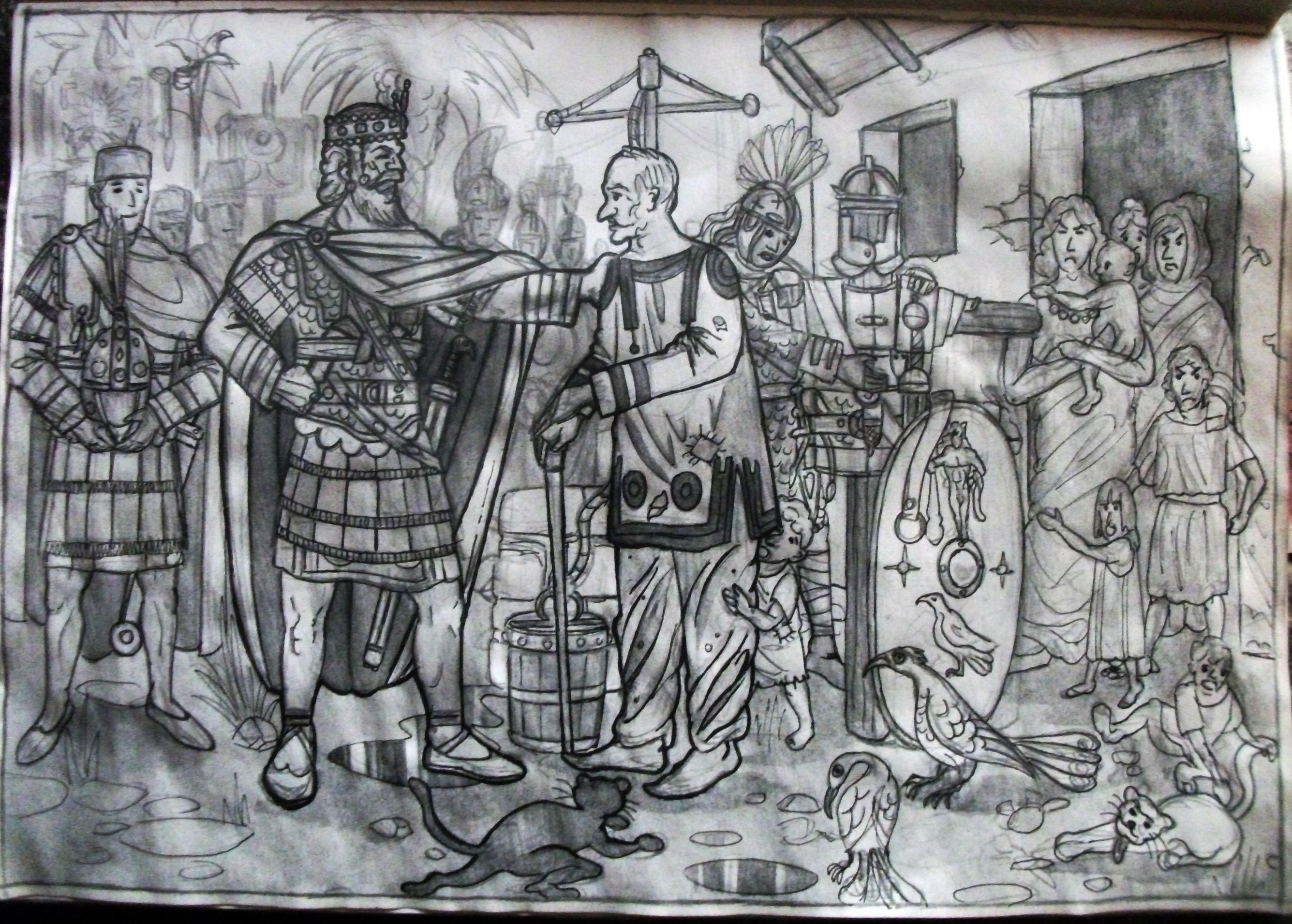
The Climax- Constans II Strikes Back (668-675)

While Muawiyah’s Arab armies were again putting pressure on Byzantium’s eastern borders and this time actually gaining an opportunity when allying with the usurping general Saborios, Constans was still in Sicily enjoying himself by again drinking and partying every night with his soldiers as well as with Mizizios, Alexios, and Philippikos as a way to make up for not being able to do this in his younger years while the people of Sicily were suffering by having to pay the heavy taxes Constans imposed on them, and with his oppressive way of ruling the Sicilians, they would start referring to Constans as the new Phocas- in this story’s case- the usurping emperor Constans’ grandfather deposed. Another thing Constans had done now in Sicily- which is only for this story- is that he started adopting the Chinese imperial practice Alexios and Philippikos had told him about which the Tang emperor of China Gaozong had done, eating fisheyes, a dish only reserved for the emperor and that everyone else who ate it was to be executed, and here Constans did just that as the Chinese emperor did by having everyone else who ate fisheyes executed that here in 668 he had about 40 people killed whether they were Sicilian fishermen or elites for simply eating fisheyes. The real turning point however for Constans’ life was on September 15, 668 when Constans went to the bathhouse of the imperial palace in Syracuse and here as he bathed, a Greek servant who was the only one in the room that was to scrub the emperor grabbed a bucket or rather a soap dish and used it to assassinate the emperor, which is how the contemporary historian of this time Theophilus of Edessa, who was a Greek working for the caliph described Constans’ death, therefore a very odd way of assassinating someone.
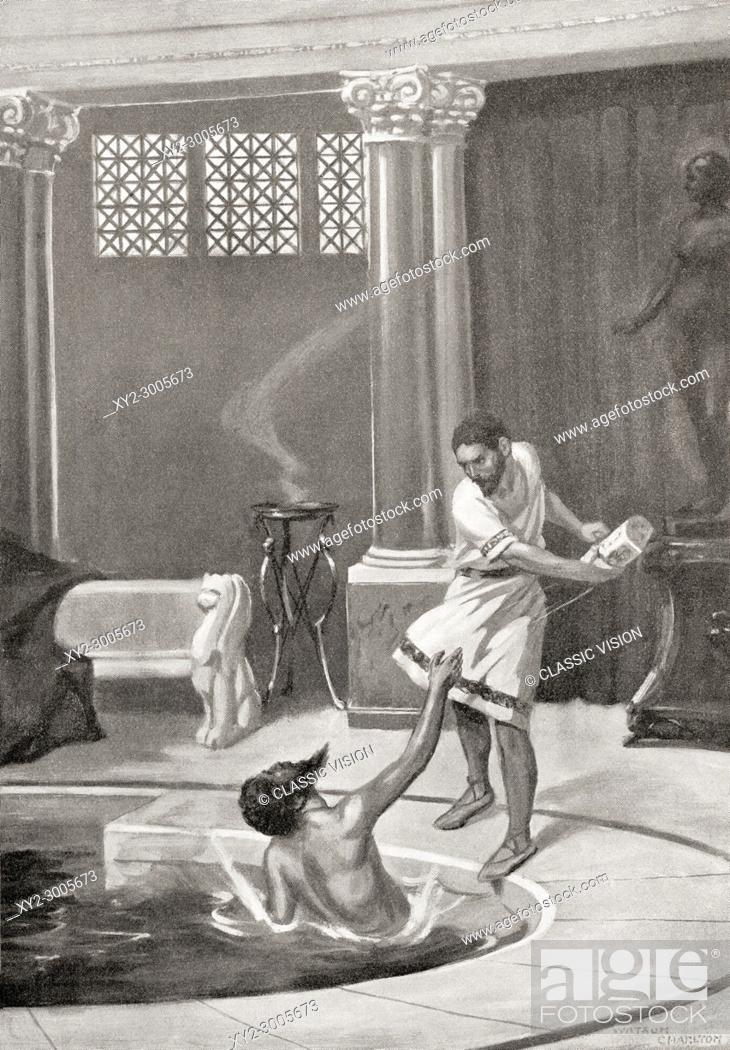
In this story’s case however, as the 37-year-old Constans was alone in the imperial baths to enjoy himself on the afternoon of September 15, he had noticed something different in the energy around him after this Greek servant put some soap over his eyes, and as the servant went further away from Constans to grab a soap dish, Constans in his usual paranoia feeling that the soap dish might be used against him got some water to wash his eyes, afterwards when able to see everything, he grabbed the servant by the leg dragging him into the pool whereas the heavy marble soap dish fell into the water sinking. While soaking in the pool water, Constans strangled the servant with his arm asking him if he really intended to kill him, and the servant replied saying he came into the baths to do just that. While Constans strangled him, the servant told him everything about the plot and that killing Constans in the baths was the easiest way since the palace in Syracuse was heavily guarded and the only way to get to Constans up close was to do it in the baths while no one else was around, not even the guards.

The servant too had said that earlier in that day, he got a letter with orders from Caliph Muawiyah in behalf of the Armeniac Theme’s Strategos Saborios in which both wanted Constans dead as Muawiyah feared that now with Constans in Sicily, he could easily take back Arab held Egypt from there as Muawiyah knew that when Constans was younger his forces took back Alexandria for a year, therefore believing Constans had the same intention again, while Saborios wanted Constans dead so he could fully take the throne without opposition believing Constans did not care at all about the eastern border. After Constans learned everything he needed to know form this servant, he strangled the servant to the point of unconsciousness with his bare arm and when knocked out, Constans dragged the servant up to the marble ground where Constans killed the servant ironically by smashing his head with the same marble soap dish meant to kill Constans, and afterwards the guards rushed into the baths as Constans put on a towel.

And now history is fully altered here as Constans II survived his assassination and would continue ruling from Syracuse, but the big mystery now is why and who directed the assassination attempt on Constans II, and others here say it could be the people of Sicily who were totally over with his brutal taxation policy, or it could be some disgruntled soldiers who were tired of being in Sicily for so long and had wanted to return to Asia Minor, but the best reason could be that it was masterminded by Caliph Muawiyah who was given more insider information on the job by Saborios who knew Constans personally, except that Saborios did not know anything about Sicily but rather he knew Constans’ personal schedule, and for Muawiyah, he could sense that Constans was surely going to take back Egypt with Sicily as his base since Sicily was much closer than Constantinople to Egypt and for the Arabs, Egypt too had proved to be a very valuable asset.
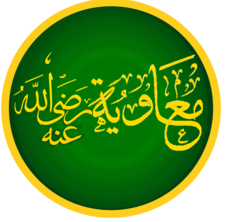
In this story’s case, Constans being in Sicily had now changed his mind as when he was a young ruler, he thought when Egypt was fully lost in 646 there was no more hope in taking it back, but now the much older Constans was fully intent to take it back as it also meant resuming their trade with India and China due to access to the Red Sea and Indian Ocean. With Constans now surviving the assassination attempt unlike in real history, he would meet with Alexios and Philippikos in the Syracuse palace where he would once again ask them to return by land to Tang China, this time to ask for a military alliance with Emperor Gaozong to counter-attack the Arabs from the east as Constans here knew from the servant who tried to kill him that Muawiyah was again set to direct more attacks on Byzantium after allying with the rebellious general Saborios, and Constans here even with the Themes did not have much men to face off the full might of the Arabs, therefore if the Chinese forces were to attack the Arabs from the east in Central Asia, the farthest the Caliphate extended to in the east, then this would distract the Arabs making them have to focus their attention east. Alexios and Philippikos then set sail to Constantinople by ship first to inform Constans’ family that he was almost killed but had survived and that they must ready themselves for a full Arab attack, and from there they would sail for Cherson in the Crimea where they would again journey east by land back to Tang China’s capital Chang’an. Now in real history, following Constans’ assassination, his army in Sicily proclaimed their general Mizizios as emperor against his will while in Constantinople, the 16-year-old Constantine IV became the senior emperor, and only when seeing coins with Mizizios’ face on it did he deal with Mizizios by travelling to Sicily himself in 669 to deal with Mizizios’ forces, although the army of the Exarch of Africa loyal to Constans had already sailed north to Sicily where they beat Mizizios’ forces and had already executed Mizizios- despite Mizizios having no part in Constans’ assassination- by the time Constantine IV had arrived there. In this story however with Constans surviving, Mizizios would have no reason to become emperor as he had no ambition anyway as could be seen with his reserved personality, so here Constans with Mizizios would plan their reconquest of the rest of North Africa as well as Cyrenaica and Egypt with the then Exarch of Africa Eleutherios, while the Exarch of Ravenna Theodore- who in real history had died in 666, but for this story’s sake would still be alive- would be put in charge of continuing the defense of Italy against the Lombards.
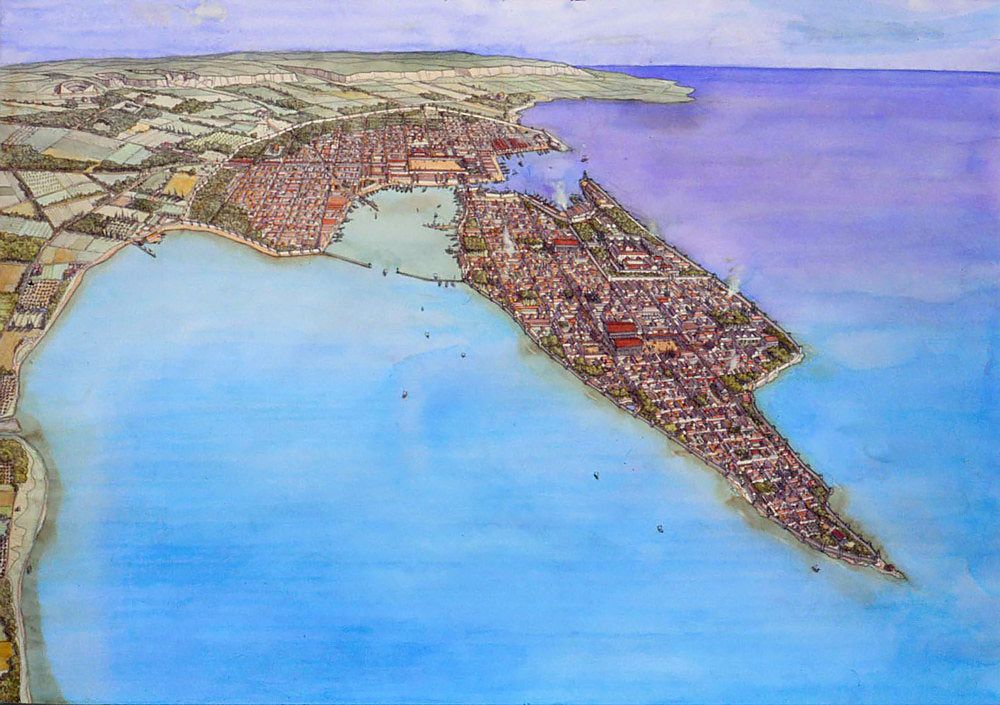

For the past 5 years now, young Constantine IV had been put in charge of Constantinople’s administration while his father was away in Sicily, and in these 5 years, young Constantine had learned to be a strong and competent emperor. In this story’s case, in 668 rather than getting word that his father had been assassinated, Alexios and Philippikos at their arrival in Constantinople instead told young Constantine that his father now intended to divide the empire whereas Constans II would rule from Syracuse and Constantine IV from Constantinople, so therefore Constans in his letter asked Constantine to crown himself emperor, which he did here in 668 at the age of 16, and now Byzantium had 2 reigning senior emperors as Constantine’s younger brothers Heraclius and Tiberius remained as junior co-emperors.

Apparently, back in 597 when Emperor Maurice got a fatal illness, he thought of this same solution too which was to divide the empire in two parts between his sons, but when recovering shortly after the plan was scrapped, but here in this story it was Constans who now decided to stick to this plan, which was a strategy a lot of Roman emperors in the past had used and while Constantine IV’s half of the empire included the Themes of Asia Minor, over in the west Constans II thought of creating Themes in Italy as well, and part of it was to make the whole of Sicily an entire Theme too; although by 700 in real history, Sicily too became a Theme. Now like in real history, as Constantine IV came into power, here in this case the same would happen when some of the soldiers in Asia Minor would here for this story get some fake news that Constans II had died, so they marched to Constantinople and demanded that Constantine IV rule in equal power with his two younger brothers Heraclius and Tiberius but just as Constantine IV did in real history, he refused to do so in being manipulated and so he had the leaders of these rebellious troops executed after tricking them to meet with him peacefully, therefore beginning his reign in the same autocratic manner as his father, a trait he sure enough inherited, and rather than ruling with his brothers equally, Constantine remained the senior emperor of the east with his brothers only as junior co-emperors. Meanwhile, the larger rebellion of Saborios and the soldiers of the Armeniac Theme had been growing and here by late 668, almost the entire Asia Minor was on his side the moment he was already in the region of Bithynia in the Opsikion Theme very close to Constantinople. Here as Saborios was stationed in the Fortress of Hexapolis drilling his army and waiting for his Arab reinforcement army to arrive, he would meet the same fate as he did in real history, and as Saborios got word that an imperial loyalist army from Constantinople was marching towards them, he mounted his horse right next to the fortress’ main gate but when he got on, his horse suddenly bolted and charged at the gate whereas Saborios slammed his head on the gate as a result of his horse charging. The horse then galloped away while Saborios fell to the ground, and since he had not yet put on his helmet when his head was slammed against the gate, he died a few minutes later from the injury while his army with no more leader just defected to the loyalist forces of Constantine IV, thus Saborios’ rebellion was over, though it was not yet it for his coming Arab allies. Even with Saborios dead, the Arab army led by Muawiyah’s son Yazid was still headed directly to Asia Minor and true enough they were only using Saborios as a way to get to Constantinople themselves wherein if Saborios took over the throne with Arab support, he would only be Muawiyah’s puppet but with Saborios gone, the Arabs had every reason to take Constantinople for themselves. As for Constantine IV here in 669, he would have no reason to head over to Sicily like in real history as his father had not been killed, therefore Mizizios would not rise up in rebellion, instead Constantine IV would have to focus with the happenings in Asia Minor as here in 669, 5,000 Arabs under Yazid’s command reached as far as the Anatolic Theme taking over its capital Amorion, although soon enough like in real history, the army of the Anatolic Theme liberated their capital driving the Arabs away. At the same time, Muawiyah like in real history sent a fleet to attack Sicily and Carthage in 669 and in this story’s case, it would be for the reason of stopping Constans from launching an attack on Egypt, although Constans with Mizizios by his side here would easily defeat the Arab fleet sent against them. Back in the east, Yazid who was still around commanding the fleet in 670, like in real history was able to capture the port of Cyzicus in the Marmara Sea which was very close to Constantinople, and intended to be used as a base to construct a larger fleet for the attack on the capital. In 672, the Arabs would now make more progress when the fleet of Yazid had captured the port city of Smyrna in the Aegean to be used as another base to build more ships for their grand assault on Constantinople.

In Constantinople meanwhile, Constantine IV was growing even more worried but here Kallinikos the engineer would demonstrate to him the new weapon he had created which was a kind of brass cannon that was able to blow out some kind of sticky liquid fire that was operated with a kind of pump, but the secret was its chemical ingredient being naphtha, sulphur, and resin which was to be ignited with this mechanism, and Constantine only agreed to use it if its exact formula and procedure was a secret to be kept between both of them and the elite naval force that was to operate it only. Late one night in 672- in this story’s case at least- both Kallinikos and Constantine tested this weapon on the shores of the Marmara and to their surprise, it worked as the fire emitted from the cannon did stick to the water for a time as was intended.


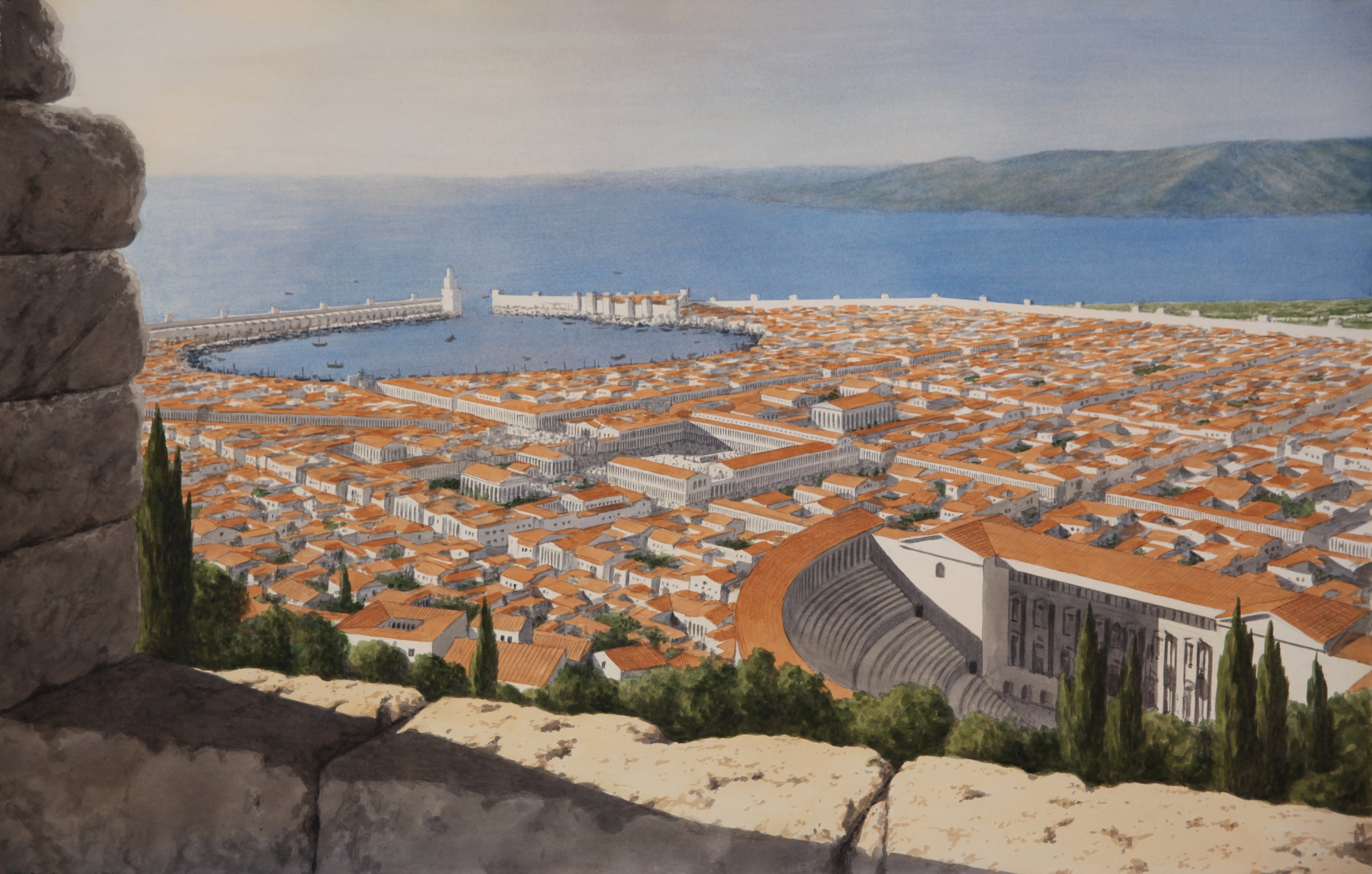
For the entire year of 673, both Byzantines and Arabs had been preparing for the grand battle to come, therefore Constantinople was still safe even if the Arabs in 673 had already captured some of the southern coast of Asia Minor including the city of Tarsus; although in this story’s case with Constans II still alive and Syracuse as his capital, he started feeling the need to go back to Constantinople, just to save it from the upcoming Arab attack. Just like in real history, the grand battle here would come in 674 when the Arab fleet and army themselves under the command of Yazid besieged Constantinople both by land and sea, and this Siege of Constantinople went on for 4 years (674-678) intermittently as the Arab forces would pause every winter retreating back to their naval bases in Cyzicus and Smyrna, as winters were something alien to the desert born Arabs, thus every time spring came, the Arabs would resume their attacks. There are not that much sources on this 674-678 Siege of Constantinople, but it was clear that things had not come to any results until 677 when Constantine IV decided to lead the fleet himself head-on against the Arabs, and this would be where the secret superweapon Greek Fire would first come into use and in 678, the Arabs being unable to continue the attack due to the power of Greek Fire had fully retreated, and on their retreat they were heavily defeated once again by the Byzantine fleet off the coast of Lycia in Southwest Asia Minor. On the other hand, while the Siege of Constantinople was ongoing, Constantine IV was too busy defending capital that he could not put his attention to other parts of the empire and true enough, Thessaloniki with most of its troops having to march to Constantinople to reinforce it was left poorly defended when the Slavs besieged it in 676, although when the Siege of Constantinople was over by 678, the Slavs too have abandoned their attack on Thessaloniki.

In this story’s case on the other hand, the Siege of Constantinople would play out in a much different way considering that Constans II here was still alive, although when it would begin in 674 he was still absent from Constantinople, thus leaving the 22-year-old Constantine IV to lead and supervise the defense of the city himself, and here he would be extremely nervous as this would be the first time he was to lead his army in a full scale battle against about let’s say 50,000 Arabs while the defending Byzantine forces only numbered up to let’s say 15,000 but luckily in the case of this story, the superweapon of Greek Fire was already built and its engineer Kallinikos was to be by Constantine’s side the whole time as the weapon in this battle was at Constantine’s imperial ship.

Feeling nervous about what was to come, Constantine motivated himself by remembering how his grandfather Constantine III at only 14 helped lead the defense of Constantinople in 626 against the Avars, Slavs, and Sassanids, and after feeling some sense of motivation, Constantine encouraged his younger brothers Heraclius and Tiberius as well his mother Fausta- in this story only- to all take part in defending the city. By April of 674 like in real history, the Arab fleet from Cyzicus sailed up the Marmara arriving in Constantinople’s south shore, and unlike in real history when Constantine IV confronted them only in 677, here he already led the fleet head-on against the incoming Arab fleet of Yazid the moment the Arabs arrived. Here at this moment, Greek Fire would first be used against the enemy ships, and it would turn out it would be fully effective as the sticky flames would not only stick to the water but burn down the smaller wooden Arab ships too, but what was even more devastating was its fear factor as when the flames began to burn the ships and water, the Arab soldiers panicked and jumped off into the water drowning to death. Again like in real history, the battles here would go on each day, pausing at night, and again resuming the next day to the point that the Arab infantry had already disembarked from their ships and began scaling the walls, though Constantinople’s walls as usual would still be too impossible for the Arab forces to fully scale due to their height, number of towers, and the number of soldiers defending them as it turned out more troops were assigned to the walls than in the sea, and it was also in the walls where Fausta, Heraclius, and Tiberius would be rallying the troops despite not going into action themselves. As the weeks had gone by, the battles still continued with no clear result to the point that the Byzantines had been losing hope, but just when they all thought hope was lost, as Constantine looked south into the Marmara, he saw a large fleet consisting of 300 Byzantine ships, and as it would turn out this was his father Constans II himself leading a reinforcement fleet together with Mizizios to relieve Constantinople. In their approach, thousands of flaming arrows fired by Byzantine archers from these ships flew across the sky into Yazid’s ships further burning them and soon enough, these larger Byzantine ships crashed straight into the smaller Arab ships destroying them. Constans would then see the other imperial ship where his son was at and when seeing a streak of flames fired from it against a larger Arab ship, Constans was amazed at the sight, but at the same time he kept cursing in Greek as he could not believe what he just saw.

Having dealt enough damage here and as the days were getting colder as the year progressed, Yazid ordered his entire army and fleet to retreat. As the Arab forces and ships were retreating, Constans now had the chance to get off his ship and board his son’s ship, where they would now reunite after not seeing each other for almost 12 years, and here the 44-year-old Constans barely recognized his son who was now fully grown up, as the last time they had seen each other, Constantine IV was only 10. As the days would now go by, the Byzantines had noticed that they were no longer under attack, therefore the people of Constantinople had begun rebuilding the damage caused by siege, but soon enough they had noticed the days would turn into weeks, and weeks into months with no more attacks against them from the Arabs when the year 675 came.
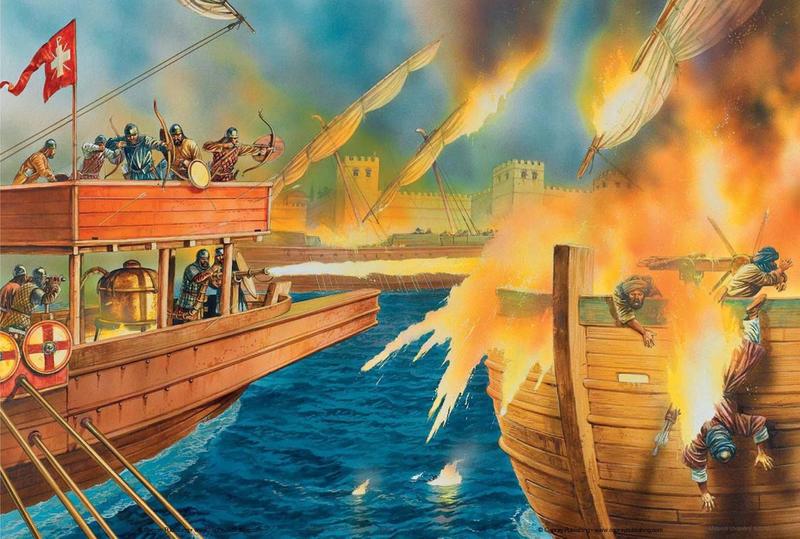
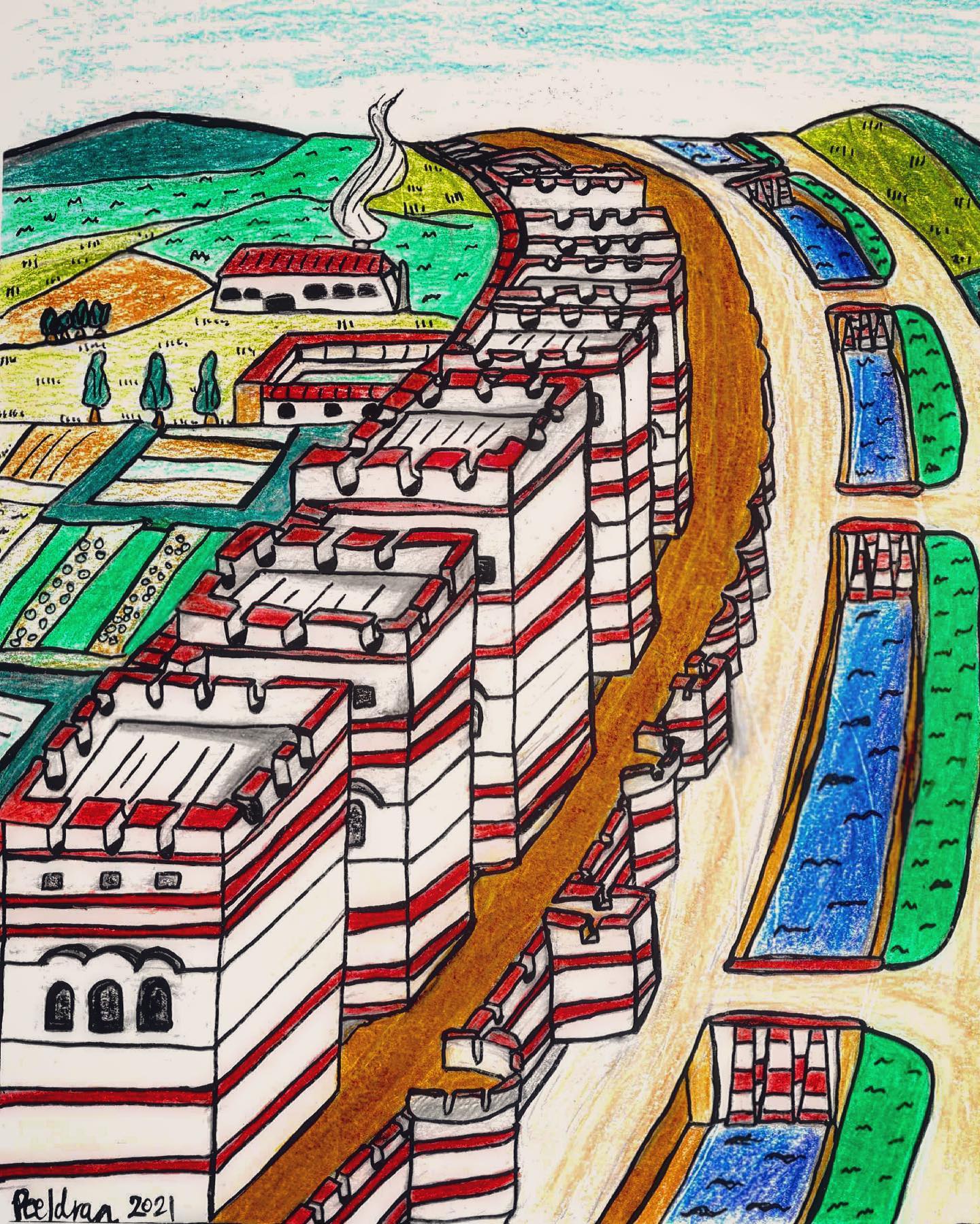
Now in this story’s case, the main difference here in the 674-678 Siege of Constantinople was that here it was over in its first year, and not having to go on much longer for 4 more years like in real history, and the reason for this scenario happening in this story was not only due to the still alive Constans II coming in time to assist Constantinople, but by also making a fictitious alliance with the Tang Chinese emperor Gaozong.

Back in 668, after Constans survived the attempt on his life, he sent the senators Alexios and Philippikos to China and as it turned out when back there again, they were able to successfully convince Gaozong, the emperor there to amass an army over the next 6 years, and only by 674 were they completely ready to march west and distract the Arabs who were attacking Constantinople by forcing them to turn east and face off an attack by the Chinese forces. At this point, the last member of the Sassanid ruling dynasty, Peroz who had been living in Tang China was already grown up in his 30s and now a powerful general in the Chinese army who had been trained to fight in the ways of both the Chinese and of his own Persian people and in this story’s case, it would be Peroz dressed in his Sassanid imperial armor that would lead a total of 100,000 men west from China into the border of the Umayyad Caliphate in Central Asia, and these 100k would consist of Chinese infantry and cavalry including war elephants, as well as Sassanid Persian refugees dressed up once again in their own Persian armor and ready to bring the fight to the Arabs to avenge their fallen empire’s twin defeats to them at Al-Qadisiya in 636 and Jalula in 637.
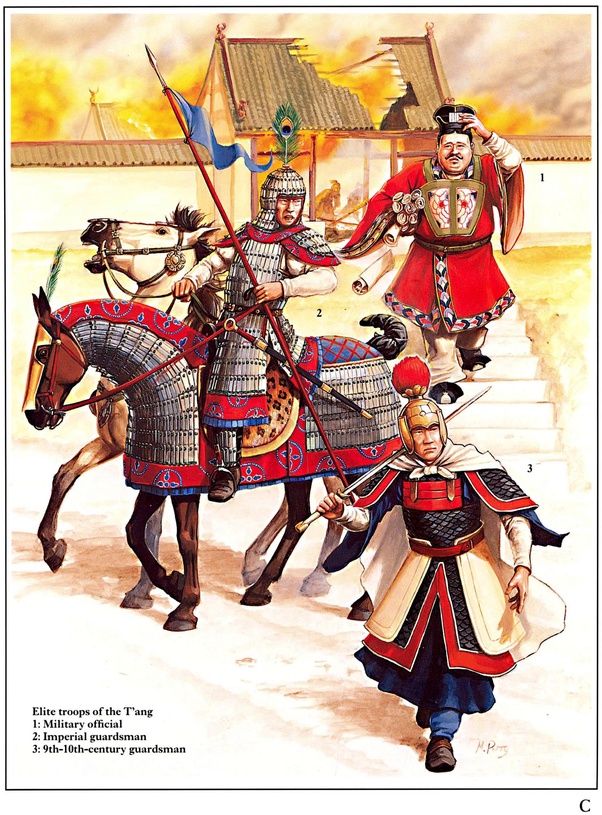
Word of the caliphate’s eastern border under attack would first reach Caliph Muawiyah in Damascus who would then send word about it to his son Yazid who was camped with his army in Smyrna, and here in 675 just when Yazid was preparing to set sail to Constantinople again to continue the siege, he got word from his father that the eastern border in Central Asia was under attack, and the worst part he heard was that it was under attack by the Sassanids, the very enemy the Arabs thought they had completely crushed. Believing that the Sassanids were planning to reclaim their empire, Yazid with his army instead of continuing on besieging Constantinople would immediately rush east where the Sassanid refugee forces and their Chinese allies were already making progress being already in what is today’s Afghanistan, very close to the Sassanid heartland of Iran which the Arabs now held. Before the winter of 675-676 would arrive, Yazid and his very tired forces after marching such a long distance from Asia Minor all the way east to Central Asia for months would confront the fully energized 100k army of Peroz at Bactria (Afghanistan), where due to being exhausted would lose to the combined Sassanid and Chinese forces, although Yazid would still survive retreating back to his father in Damascus never wanting to lead another campaign again after losing almost his entire army in the east. Peroz meanwhile after winning this entirely fictional victory would not anymore try to reclaim the Sassanid Empire even if he was the son of the last Sassanid emperor, instead he would return to China to continue loyally serving Emperor Gaozong, as here Peroz never really wanted to reestablish the Sassanid Empire, instead he only chose to fight the Arabs as he wanted to show that the Sassanids would make up for all the harm they had brought on the Byzantines for the past centuries, and by defeating the Arabs here, the last of the Sassanids did indeed redeem themselves to their old enemy. Although in reality, this kind of battle would happen in the next century (751) where the Arab and Chinese forces would clash in battle in Central Asia. Back in Constantinople, the days would still go by without an Arab attack, and as an entire year went by in peace, it was concluded that the Arab siege was over. Constans II meanwhile remained in Constantinople for most of 675 reuniting with his family, and although his wife Fausta would still be angry at him for abandoning them back in 662, she would at least forgive him as Constans still came back at the last minute to relieve Constantinople from the Arab siege, and as Constans saw his two younger sons Tiberius and Heraclius again, he was surprised to see how much they have grown and now as young adults, both brothers looked very different from each other (as they are depicted in Constantine IV’s mosaic in Ravenna) whereas the older one Heraclius very much resembled his mother with tanned skin as well as thick and curly dark hair, while the younger one Tiberius looked a lot more like his father and eldest brother with lighter hair and lighter skin.

In Constantinople, Constans would congratulate Constantine for his bravery and success in the defense of Constantinople and for the creation of Greek Fire, and at the same time Constans as the most senior emperor would congratulate the weapon’s architect Kallinikos too. Constans too would tell Constantine the whole secret on why the Arabs had no longer showed up, and this was because if it were not for Constans asking the Chinese emperor to send an army to attack the Caliphate, then the Arabs would have not turned their attention east and would instead return to attacking Constantinople. Constantine would then thank his father for doing just that, and just before Constans was to return back to Sicily, he confirmed with Constantine that the empire was to now be fully divided with two capitals, Constantinople and Syracuse although when Constans would die, Constantinople would remain as the superior capital where Constantine would rule from, and Syracuse as the inferior one where Heraclius and Tiberius would rule from after the event of Constans’ death. Constans too had settled a divorce with Fausta with the approval of the current Patriarch of Constantinople here Constantine I, and after concluding the divorce Constans would leave by ship to Sicily for good while his general Mizizios would return to the Opsikion Theme in Asia Minor he was in charge of to continue being its Strategos, and with Constans gone again, Constantine IV was now the senior emperor of the eastern half of the Byzantine Empire ruling from Constantinople.
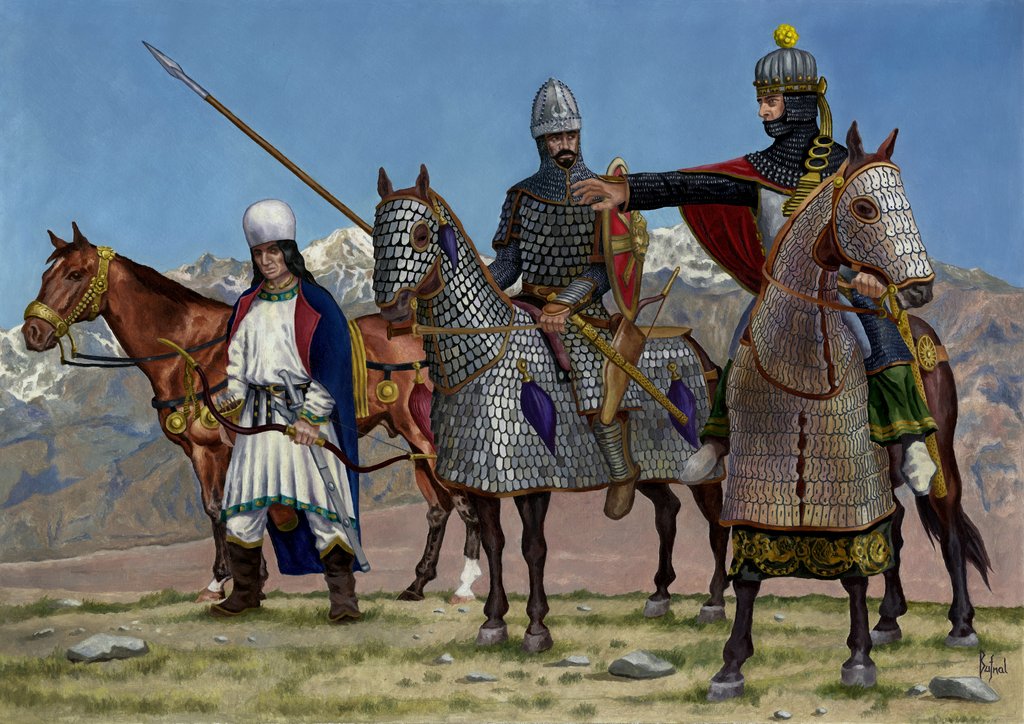
Aftermath and Conclusion

The much older Constans II now was clear that he never wanted to rule from Constantinople again and after returning to Syracuse, he was to never return to the main imperial capital despite being the most senior emperor. However, for Constans when returning to Constantinople coming to the rescue when it was under attack, he knew he had done his part in making up for all those years he was absent from his family, and what was even more honorable of him here was that he came back right in time to save his family at the moment when their end was about to come, but now when doing what he needed to do to redeem himself for his family, he returned to Sicily enjoying himself alone away from his family once again, while he also thought it was for the best to divorce Fausta as after all, his marriage to her when he was only a child was only for a political alliance with Fausta’s father Valentinus who turned out to be a traitor anyway. In this entirely fictional scenario of Constans surviving his assassination back in 668, in the following years as he based himself in Syracuse, he would actually end up turning Sicily itself into a new Byzantine Theme, though back there Constans would still never really change and continue being oppressive in his ruling style and taxation. By 679, for this story’s case at least, Constans would achieve his greatest dream which was the Byzantine reconquest of Cyrenaica and Egypt using the 300 ships that helped him defeat the Arabs in Constantinople, and here all of Cyrenaica would be recaptured, though for Egypt it would only be Alexandria and the northern coast that would return to Byzantine rule, while the Arabs would still remain in the rest of Egypt. However, a portion of the abundant grain supply for Constantinople would still resume, though by losing the coast of Egypt, the Arabs deep within Egypt would have a more difficult time communicating with their imperial capital, Damascus.

As for Constantine IV in Constantinople, with the siege not going on until 678 as it did in real history, he would use the following years after 675 to rebuild the imperial capital and due to the success of Greek Fire, he would now make it a permanent wartime weapon, though it would still be a state secret wherein its formula and procedure would be only revealed to members of the elite naval force and to those in the line of succession to the imperial throne, while the weapon’s architect Kallinikos would be appointed as the empire’s chief military scientist working in the imperial court. Like in real history, the Arabs would suffer major defeats too after they lost the Siege of Constantinople, except here in this case the Arabs were defeated a lot earlier before 678, though here they would do the same as they did in real history after being defeated, which was Caliph Muawiyah in 679 agreeing to humiliating peace terms with Byzantium which included paying an annual tribute of 50 slaves, 50 horses, 3,000 pounds of gold, and returning the Aegean islands including the port cities of Smyrna and Cyzicus which the Arabs had recently captured from the Byzantines. What would be different for this story though is that with the Arab Umayyad Caliphate losing heavily both at Constantinople and in Central Asia, their weakened armies would no longer have much interest to fight and so would their defeated general Yazid, and soon enough with the ports of Mediterranean Egypt lost, the Arabs would eventually lose all of Egypt to the Byzantines. Caliph Muawiyah in this story like in real history would also die in 680 realizing from his failure that it was impossible to breach into Constantinople, and at his death he would be succeeded by his son Yazid as caliph just as Muawiyah had planned. As for the diplomat senators Alexios and Philippikos, they would choose to remain in the imperial court of China at Chang’an where they would serve the Chinese emperor Gaozong as Byzantine ambassadors to strengthen relations between both empires, and there they would introduce some Byzantine customs to China and vice-versa. Back in Italy, the Exarch of Ravenna Theodore I Calliopas- who in real history died back in 666- for this story’s case had already died by around 673 while the empire was already split in half. Constans II on the other hand in this story’s case would die in 680 before hitting the age of 50 and ironically, he would die in the same baths of Syracuse’s imperial palace, although this time not anymore by being smashed in the head by a servant like in 668 in real history. Instead, Constans here when alone at the baths would suffer a heart attack and pass away within minutes 12 years after his death in real history, and he would only be found dead in the baths later as his servants entered the baths for cleaning. Constans’ body would then be sent to Constantinople where he would be buried in the Church of the Holy Apostles- where he was really buried in 668- and his funeral would be presided over by Constantine IV, although since Constans II was never really popular, had abandoned Constantinople for Sicily, and ruled in an oppressively autocratic way, his funeral would not be mourned by many but due to the fact that he relieved the city from the siege 5 years earlier, there would be at least some mourning for him. Following Constans II’s death, Constantine IV now as the most senior ruling emperor would honor his father’s plan in dividing the empire in order to fully protect all sides of it and continue their holding onto Italy, thus he would send both his younger brothers Heraclius and Tiberius to Syracuse to rule together as both were already co-emperors since 659, while Constantine IV would rule as the most superior of them from Constantinople, which was to still remain the main capital.

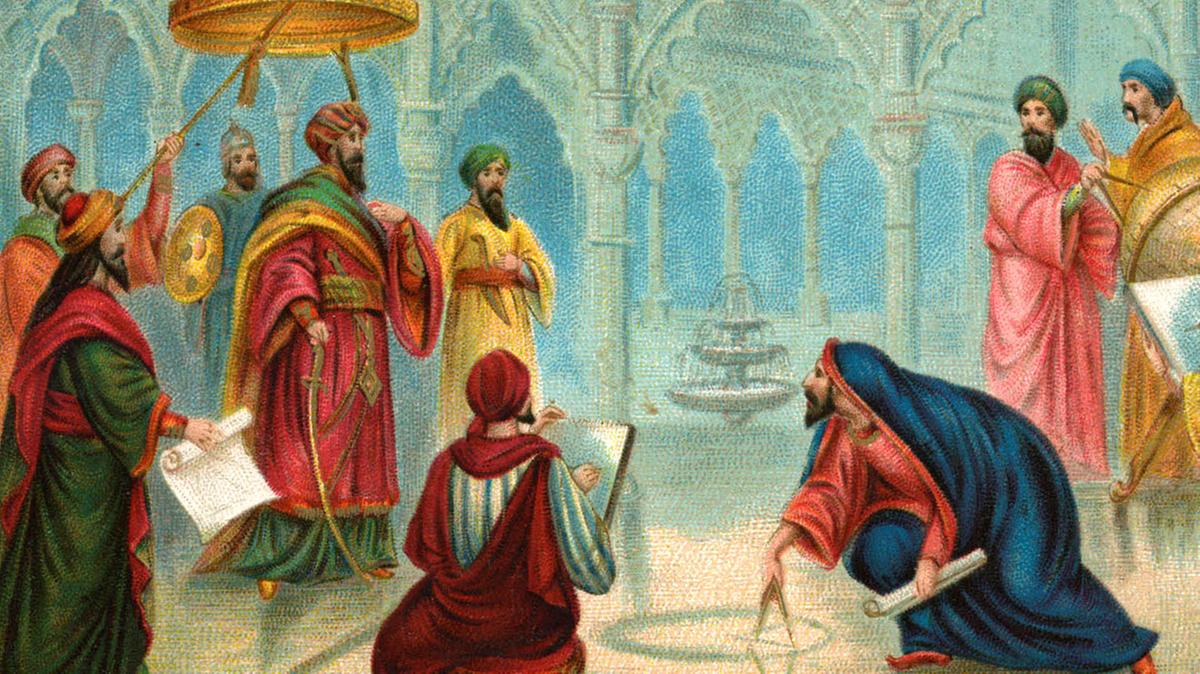
Now with Constans II having survived the assassination attempt on him and therefore successfully moving the capital to Syracuse, coming right in time back to Constantinople to relieve it from the Arab siege, further masterminding a heavy defeat on the Arab armies by conspiring with the Tang Chinese Empire, and later on dying from natural causes, on the other hand the same happenings too would happen for Byzantium in Constantine IV’s later reign as it did in real history. A lot of things Constantine IV had done as emperor were still mostly achievements, like for instance the 3rd Council of Constantinople between 680 and 681 which was finally able to solve the controversy of the Monothelite doctrine Constans II and his grandfather Heraclius before him strongly supported that even led Constans II to go as far as arresting Pope Martin I in 653 for opposing it.
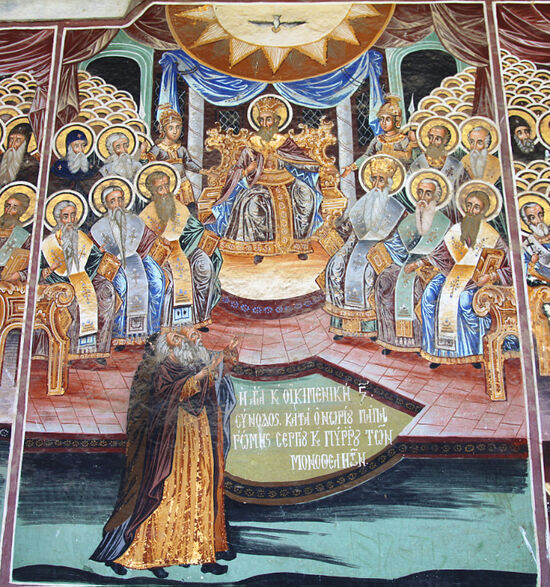
Here in this story, like in real history, Constantine IV would succeed in solving the issue by looking back at the ruling on the natures of Christ from the Council of Chalcedon back in 451 and afterwards reaffirming them, and for both successfully defending Constantinople from the Arabs and solving the Monothelite controversy once and for all, Constantine IV would become more popular than ever- as he was in real history- and gaining so much popularity, he would be hailed as the “New Constantine the Great”- the first Byzantine emperor (r. 306-337)- and the “New Justinian the Great” and coincidentally, Constantine IV here at this point was married to a certain Anastasia and already had a son named Justinian who he was training to be his successor, but in this story’s case to rule from Constantinople.

Tragically for Constantine IV by 681 like in real history, his health already began to fail despite his young age, which historians say he could have been suffering from cancer. In real history however, Constantine IV in 681 following in the footsteps of his father in mutilating his twin brother in 661 had both his younger brothers Heraclius’ and Tiberius’ noses cut off to prevent them from succeeding to the throne as a sure way to secure young Justinian’s succession, though in this story’s case this incident would not happen as Heraclius and Tiberius got their chance to rule the empire already from Syracuse where they would busy themselves continuing the campaign against the Lombards in mainland Italy. The other real event that too would happen in this story’s case was the first major invasion of the Bulgar hordes from the steppes of Russia led by their ruler Khan Asparukh across the Danube into Byzantine territory in 680 while Constantine IV was busy heading the Church Council. Again like in real history, Constantine IV here would lead the armies of the 5 Themes north to confront the Bulgars in 680 as well but at the middle of the campaign would suffer a bad illness due to his unspecified chronic sickness, thus making him have to retreat back to Constantinople leaving his army to confront the Bulgars, and without Constantine commanding them, the army like in real history would panic as their emperor had left, thus suffering a defeat to the Bulgars at the Battle of Ongal in 680.

Like in real history, Constantine here in 681 would have to acknowledge the creation of the first Bulgarian state ruled by Khan Asparukh in what was the Byzantine province of Moesia in the south bank of the Danube, and here is when the story of Byzantium’s northern neighbor and greatest enemy and ally at different times, the Bulgarian Empire begins. Constantine IV though would not lose his popularity for his defeat to the Bulgars, but in addition for this story’s case too like in reality, he would create the Theme of Thrace based in Constantinople to further protect the valuable province of Thrace, the empire’s capital region from the rise of the Bulgars who had now gained their own state subjugating the Slavic locals there. History though does not say what Constantine IV had been doing after 681 but it is most likely that he had been putting the Themes of Asia Minor his father created and the Theme of Thrace he created into full effect in case the Umayyad Arabs would come back again, but it is highly possible that Constantine was not so active anymore after 681 due to his failing health. In this story, Constantine IV would die just 5 years after his father on September 14, 685 at only 33 like he did in real history and would be succeeded in this story’s case as the emperor in Constantinople by his now 16-year-old son Justinian II while his brothers Heraclius and Tiberius would still remain in Sicily. The reign of the passionate and ambitious yet tyrannical and evil emperor Justinian II now would be a story for another time, although here like in real history, Constantine IV for successfully defending the capital and finally solving the issue of Monothelitism would become a saint after his death. Now the big question at the end of this story is what will happen to the Umayyad Caliphate after being defeated even more than they were in real history and if the establishment of Syracuse as the second Byzantine capital was worth it, however the answer to both cannot fully be told in a simple way but to put it short, all I can say is that even when defeated, the Umayyad Caliphate was still around and would still one day return to action, and for the Byzantines having 2 capitals with their own emperors just as the empire did before 476, they would be able to focus on both sides of their empire as in the east the Theme System would soon enough be fully prepared and functional if ever the Arabs rise again while in the west, the emperor ruling from Syracuse could focus on the problems there and restore Byzantine rule to Italy which had been neglected with the growing threat of the Arabs in the east. Now to simply put it, Constans II’s decision to make Syracuse a capital was to prove effective especially since this would help the Byzantines slowly regain control of the Mediterranean again, and therefore not spiral down in the sense of rapidly losing lands, and this is how this move to Sicily could change the course of Byzantine history.
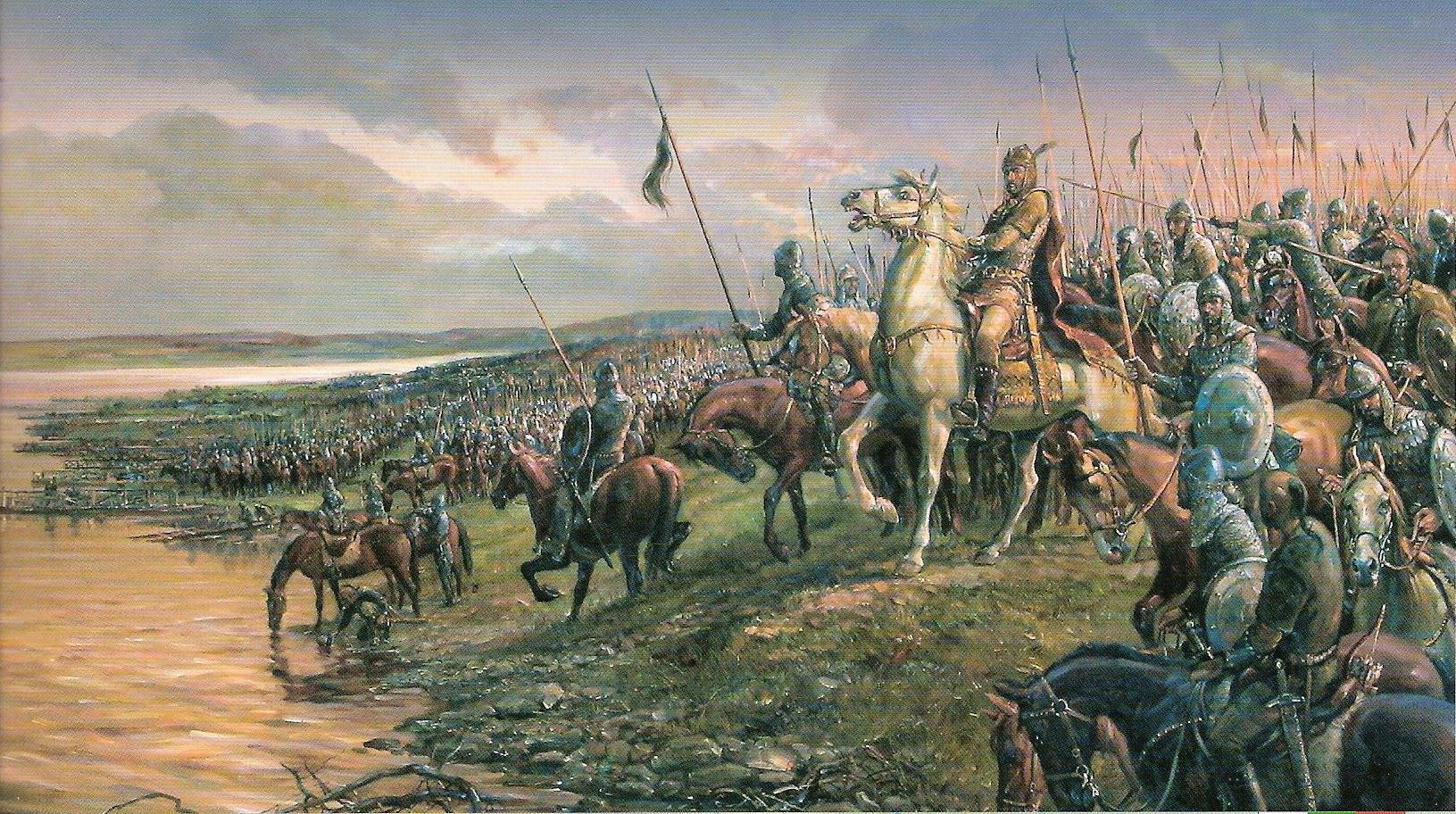

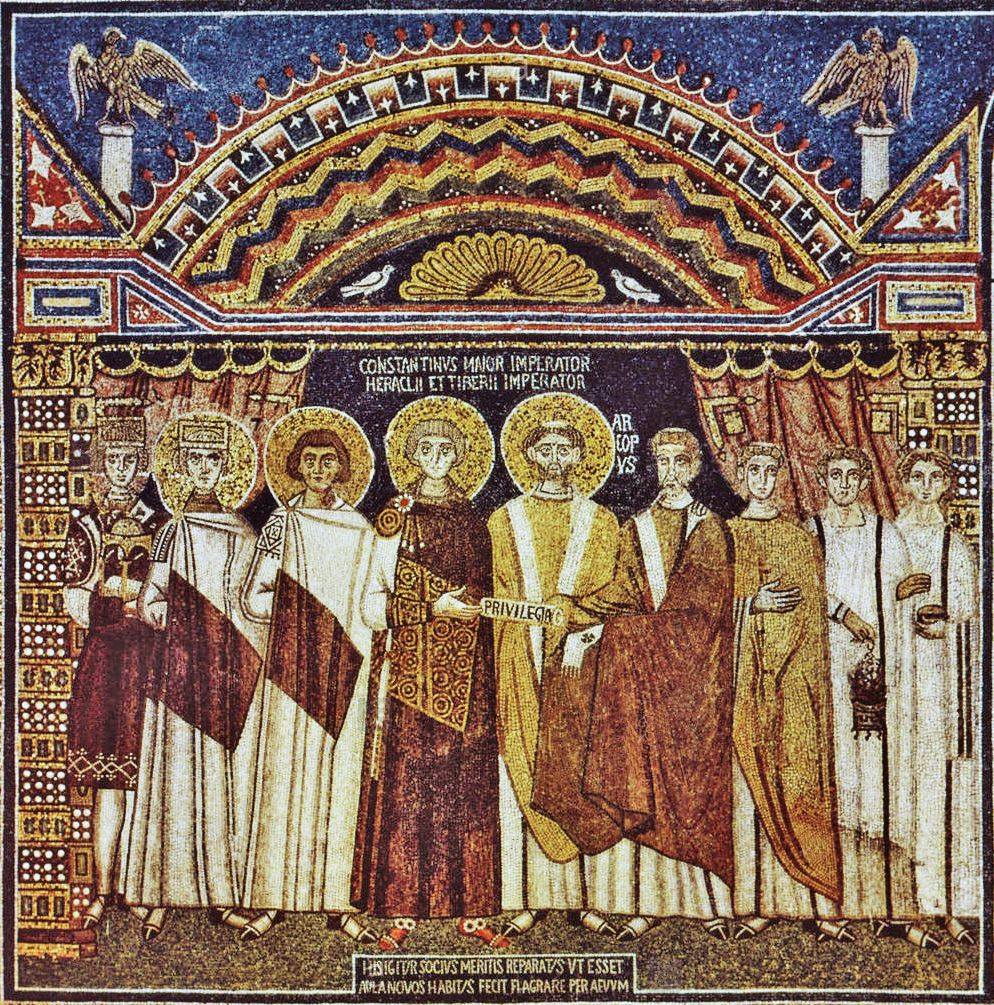
Watch this to learn more about Constantine IV (Eastern Roman History)
And now I have reached the very end of this story but before I finish, I have to mention about creating this and why Constans II is for me such an interesting historical figure to the point of dedicating an entire fan fiction story to him. Now as you may know, this fan fiction article happens to be an extremely long one and I have to admit it was a very long and tiring process writing it as it required an extensive amount of research and considering that my favorite history related Youtube channel Dovahhatty had only reached as far as the end of the Great War with the Sassanids by 630, I had to go the long way to put this story together by watching several documentary videos on this era from rather more scholarly channels like Kings and Generals, Eastern Roman History, and Thersites the Historian, as well as listening to the History of Byzantium Podcast, and in fact even reading more scholarly research works in order to get the whole story of 7th century Byzantium. When completing this story, I also discovered that I have now entered unchartered territory as in the entire history of Byzantium, I am not entirely familiar with the 7th century which on the other hand is not as well documented as the 6th century Byzantium of Justinian I or the later eras, and what made this much more challenging to write was that I put it all together. At the end I also realized that there is a lot more to discover about Byzantium even if I am still more or less familiar with its entire 1,100 year history and as it had turned out, the 7th century is surely an interesting but very crucial time for Byzantium as this was when things just changed in a blink of an eye wherein almost half of its imperial territories it had in the 6th century was lost as the Arabs out of the blue expanded, and in only a few decades already came so close to ruling almost the whole known world putting Byzantium in the defensive position for the next 2 centuries to come considering the arrival of the Bulgars at the end of the century too. The other crucial part for Byzantium in this century was the changing of their geography with the creation of the Thematic System and the drastic cultural shift from Latin to Greek, and more importantly the end of the golden age or rather the age of antiquity and the beginning of the Dark Ages. Not to mention, the 7th century too is in fact a very tiring era to read and write about with all the endless wars and shifting of borders, but the new creations of this era including the Thematic System and Greek Fire makes its story very interesting at the same time. It is for the reason that the 7th century was such a crucial time in Byzantine history that this chapter had to be a really long one, but no matter how long it was I still wanted it to go full circle, which is why I ended it with the return of the Sassanids to make up for the harm they did to the Byzantines in the past by indirectly helping them against the Arabs. As for the part of Constans II, I had to choose him as the lead character for this story out of all the emperors of this century because I find his story and more particularly his odd choice of suddenly wanting to move the imperial capital to Sicily very interesting. Constans II too is an emperor who I believe has a very complex personality as at the same time as being the kind of strong emperor with a dictatorial style of rule, he was still more or less a visionary who saw the need to take extreme measures to ensure the survival of his empire. At the same time, I cannot also blame Constans for ruling in such an autocratic way by purging all those he saw as a threat including the pope and his twin brother because he ruled the empire in a very difficult time when it was at the verge of extinction to the Arab Caliphates. On the other hand, it is also hard to judge Constans’ character as he grew up with so much stress being only 11 when coming to power yet having to face a very troubled empire, so no matter how much people bash Constans for ruling in such an autocratic way, he should also be admired as he came to throne at such a young age ready to face the burden of ruling an empire at the verge of extinction. I also have to say that it was also exciting to particularly write this chapter (chapter IV) of this Byzantine Alternate History series as this article has somewhat a different approach not just centering on the lives of the Byzantine rulers and people, but on the political and geographical situation of a larger world at this time, and at the same time not only on the world of the Byzantines but of the Arabs Caliphates, Sassanids, and Imperial China too, together with other people too like the Avars, Slavs, Bulgars, and Lombards, and when planning out this alternate history fan fiction series, I always wanted to write about the unknown Chinese angle in Byzantium, and now I got the chance to do so. At the end, the result for this story happened to be a kind of dystopian Byzantine epic featuring a severely weakened, troubled, and shrunken Byzantine Empire at the state of perpetual war, ruled by an autocratic dictator emperor, and having new kinds of unthinkable technology being Greek Fire compared to the past 3 articles featuring a stronger Byzantium being the dominant world power. Now this chapter is only the beginning of this dystopian Byzantine setting as it is the end of the early Byzantine era and entry point to the Byzantine Dark Ages which the next 2 chapters of this series will be part of, so the next 2 chapters of this series will be when Byzantium will be at its lowest points having to constantly fight on the defensive against the expansion of the Arabs before the coming of the 10th century when the Byzantines would turn the tide of war, this time finally fighting on the offensive against the Arabs ready to conquer everything they have lost to them since the setting of this chapter in the 7th century. Up next, in chapter V of this Byzantine Alternate History series, in the 8th century the Arab Umayyad Caliphate will strike again this time even stronger than before whereas Carthage will even fall to them, while the new power of the Bulgars in the Balkans would rise up as well, and Byzantium this time would be very close to extinction due to external pressure and internal conflicts until Leo III, another unlikely savior emperor again with a very complex personality would come to the rescue, although the next story will rather center more on Artavasdos, the man behind Leo III’s rise to power who too will become emperor for only a year (742-743) before meeting his end, though the next chapter of this series will explore what Byzantium would be like if this very unknown emperor would have ruled much longer, but of course as the rule of this series, there will be no continuity from the fictional ending of this story to the where the next one will begin. Well, this is all for chapter IV of Byzantine Alternate History, this is Powee Celdran, the Byzantine Time Traveller… thank you for your time!
Next Story: Byzantine Alternate History Chapter V- 8th Century





5 thoughts on “Byzantine Alternate History Chapter IV- Constans II Relocates the Imperial Capital to Sicily”